Forums
- Forums
- Axis And Allies Forum
- General Discussion
- Aviation News
Aviation News
Post a reply
- Go to Next topic
- Go to Welcome
- Go to Introduce Yourself
- Go to General Discussion
- Go to Screenshots, Images and Videos
- Go to Off topic
- Go to Works in Progress
- Go to Skinning Tips / Tutorials
- Go to Skin Requests
- Go to IJAAF Library
- Go to Luftwaffe Library
- Go to RAF Library
- Go to USAAF / USN Library
- Go to Misc Library
- Go to The Ops Room
- Go to Made in Germany
- Go to Campaigns and Missions
- Go to Works in Progress
- Go to Juri's Air-Raid Shelter
- Go to Campaigns and Missions
- Go to Works in Progress
- Go to Skinpacks
- Go to External Projects Discussion
- Go to Books & Resources
-
 Main AdminAn Offutt-baed RC-135V/W Rivet Joint takes flight Aug. 5, 2018 at Offutt Air Force Base, Nebraska. The aircraft was flown during a unique training sortie with a flight and mission crew comprised almost exclusively of reserve component Airmen. The aircraft is an extensively modified C-135. The Rivet Joint's modifications are primarily related to its on-board sensor suite, which allows the mission-crew to detect, identify and geolocate signals throughout the electromagnetic spectrum. The mission-crew can then forward gathered information in a variety of formats to a wide range of consumers via Rivet Joint's extensive communications suite. (U.S. Air Force photo by 2nd Lt. Drew Nystrom)
Main AdminAn Offutt-baed RC-135V/W Rivet Joint takes flight Aug. 5, 2018 at Offutt Air Force Base, Nebraska. The aircraft was flown during a unique training sortie with a flight and mission crew comprised almost exclusively of reserve component Airmen. The aircraft is an extensively modified C-135. The Rivet Joint's modifications are primarily related to its on-board sensor suite, which allows the mission-crew to detect, identify and geolocate signals throughout the electromagnetic spectrum. The mission-crew can then forward gathered information in a variety of formats to a wide range of consumers via Rivet Joint's extensive communications suite. (U.S. Air Force photo by 2nd Lt. Drew Nystrom)
F-22 Raptor's from Joint Base Elmendorf-Richardson, Alaska take off at Yokota Air Base, Japan, Aug. 3, 2018. The F-22 raptor is a fifth-generation fighter incorporating fourth-generation stealth technology, radical maneuvering capabilities, the ability to fly at supersonic speed without afterburners and unprecedented pilot situational awareness, making it the most dominant and advanced air superiority fighter in the world. (U.S. Air Force photo's by Yasuo Osakabe)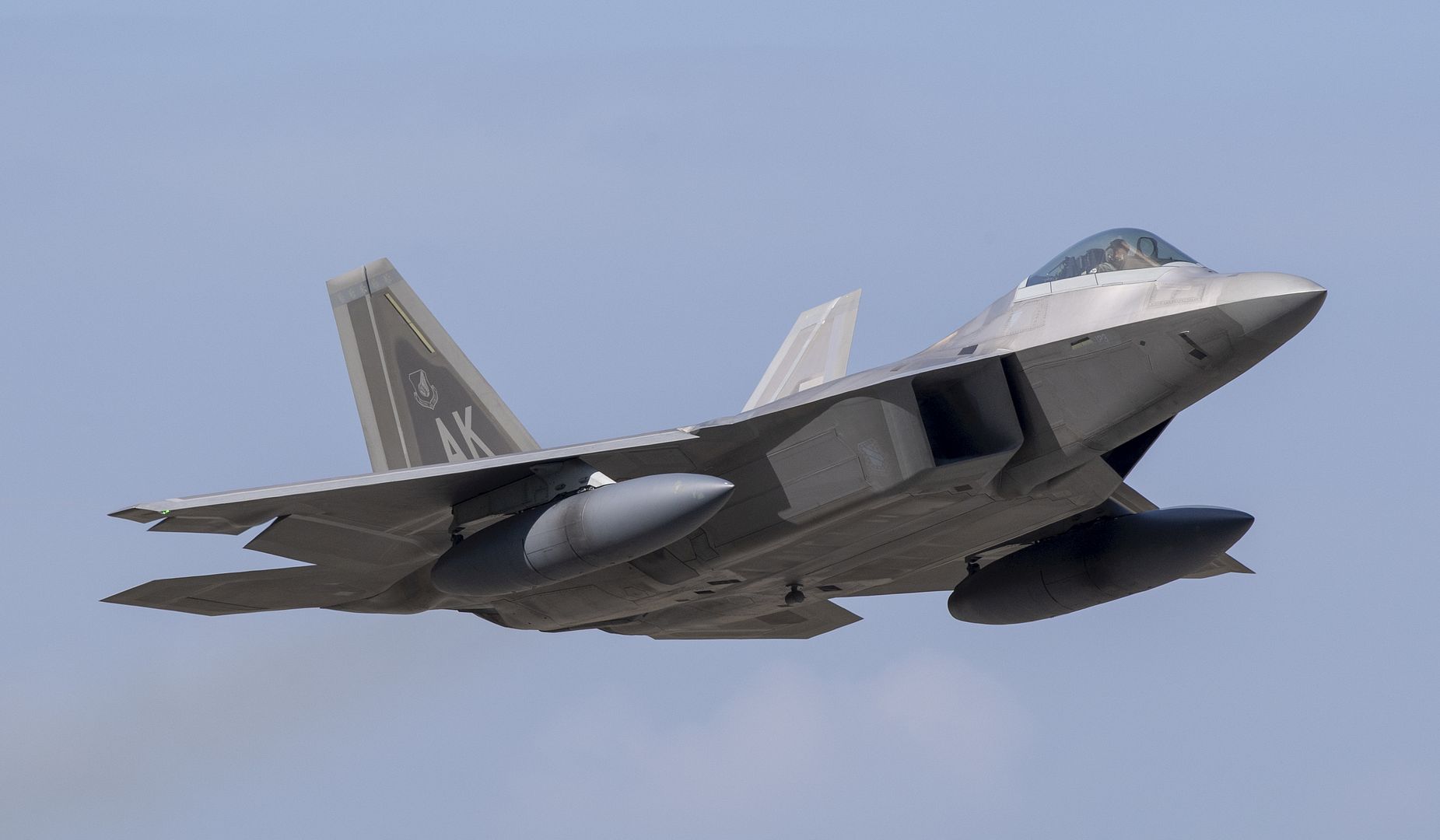
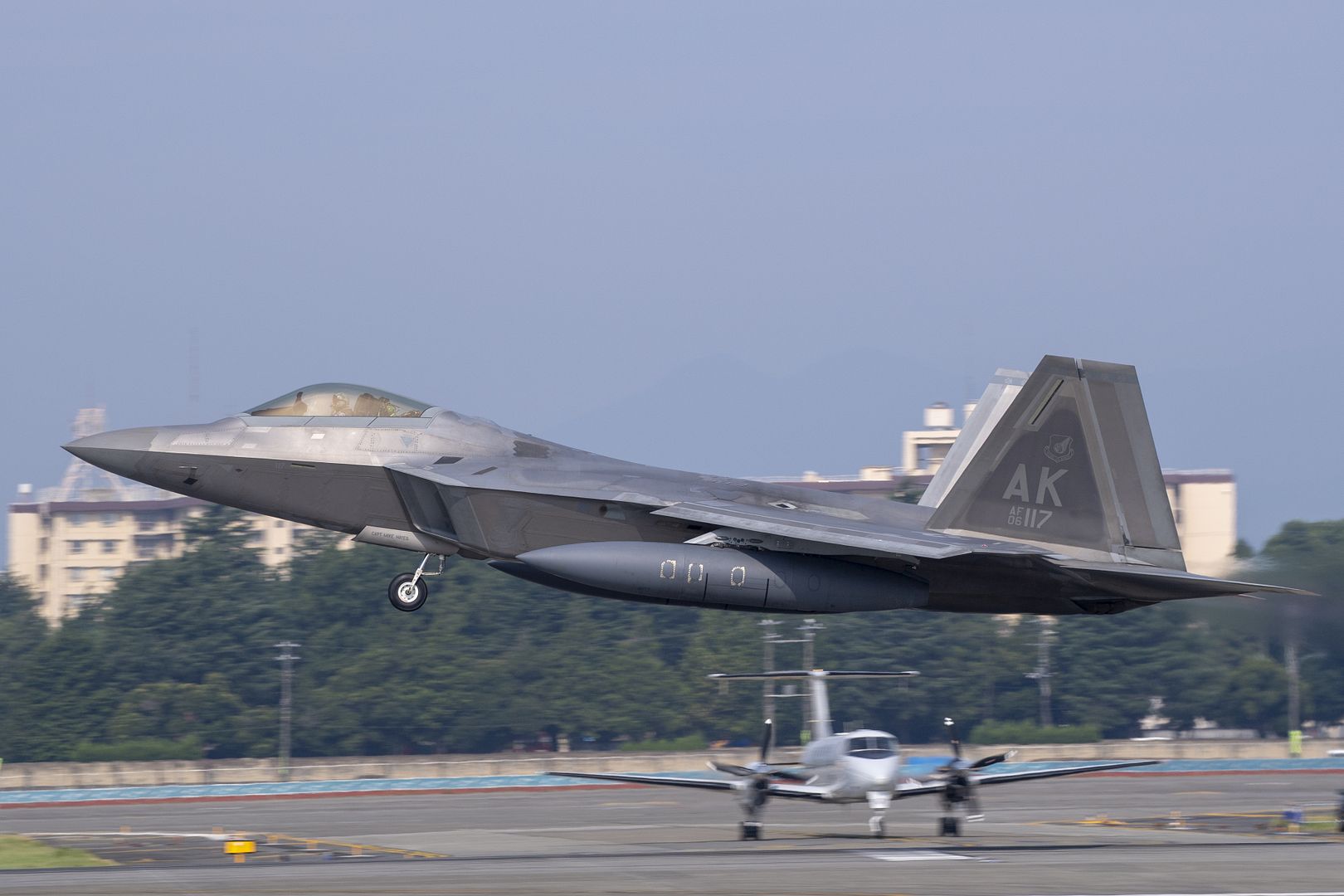
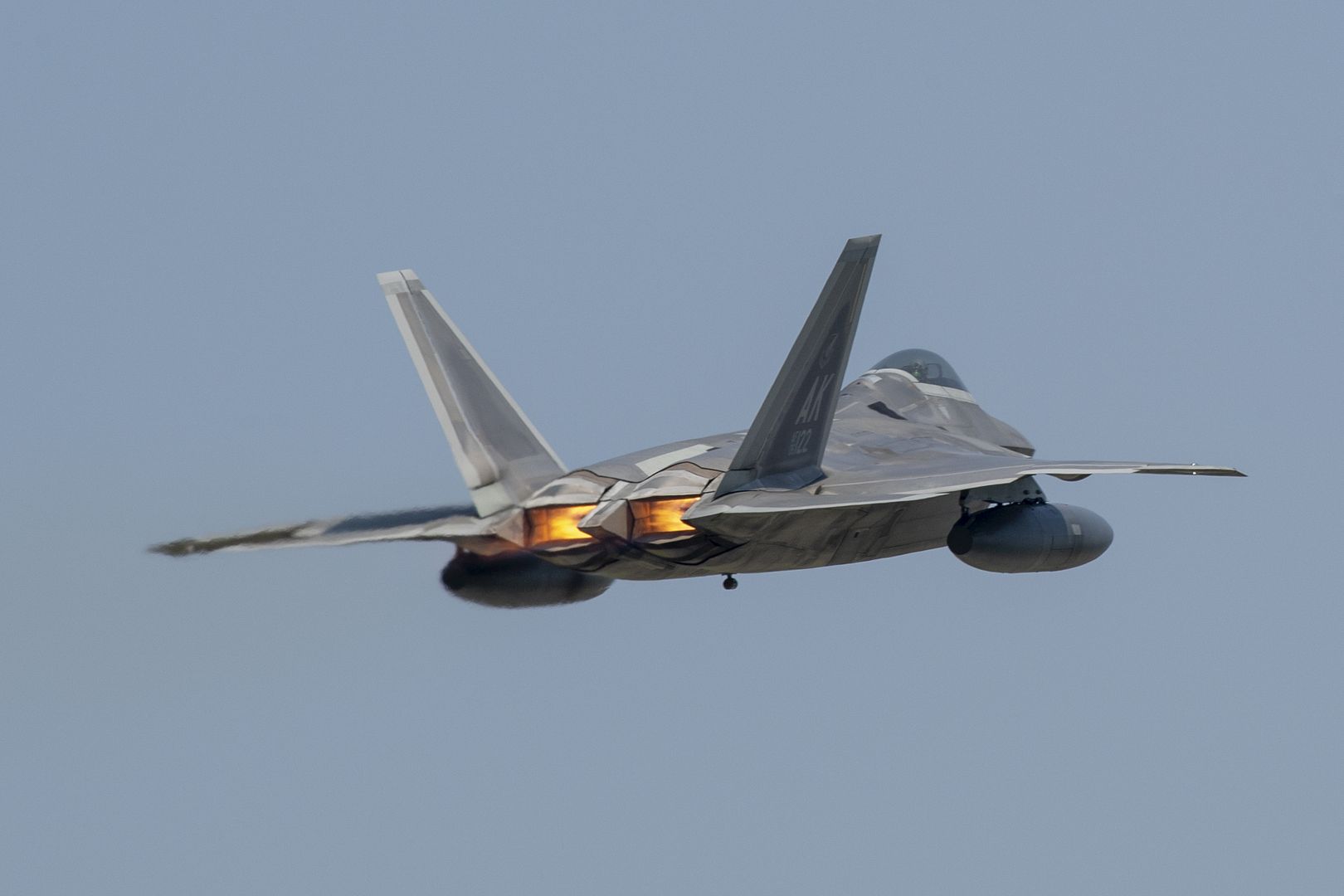
An AH-64D Apache Longbow attack helicopter, assigned to the 1st Battalion (Attack), 3rd Aviation Regiment, 12th Combat Aviation Brigade, initiates its first itinerary during an aerial gunnery at the 7th Army Training Command's Grafenwoehr Training Area, Germany, August 06, 2018. (U.S. Army photo by Christoph Koppers)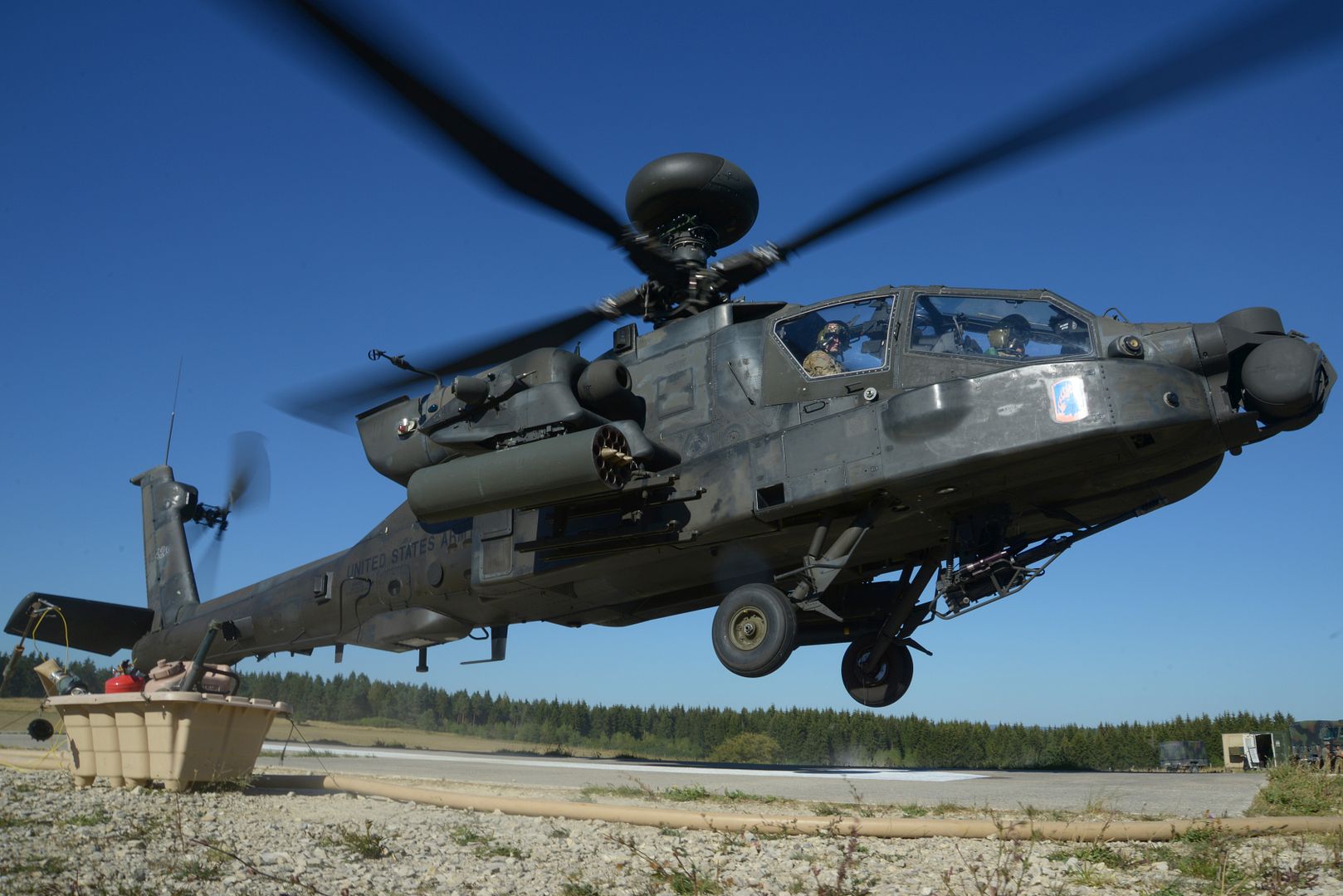
ATLANTIC OCEAN (Aug. 4, 2018) A CH-53E Super Stallion helicopter, attached to the Marine Medium Tiltrotor Squadron (VMM) 162 (Reinforced), prepares to land on the Wasp-class amphibious assault ship USS Iwo Jima (LHD 7), Aug. 4, 2018. Iwo Jima is deployed with its amphibious ready group in support of maritime security operations and theatre security cooperation efforts in Europe and the Middle East. (U.S. Navy photo by Mass Communication Specialist 3rd Class Dominick A. Cremeans/Released)
MARIETTA, Ga., Aug. 6, 2018 /PRNewswire/ -- Lockheed Martin (NYSE: LMT) delivered the 52nd C-5M Super Galaxy strategic transport modernized under the U.S. Air Force's Reliability Enhancement and Re-engining Program (RERP) on Aug. 2 at the company's Marietta, Georgia, facility.
The delivery completes the RERP upgrade, which extends the service life of the C-5 fleet out until the 2040s.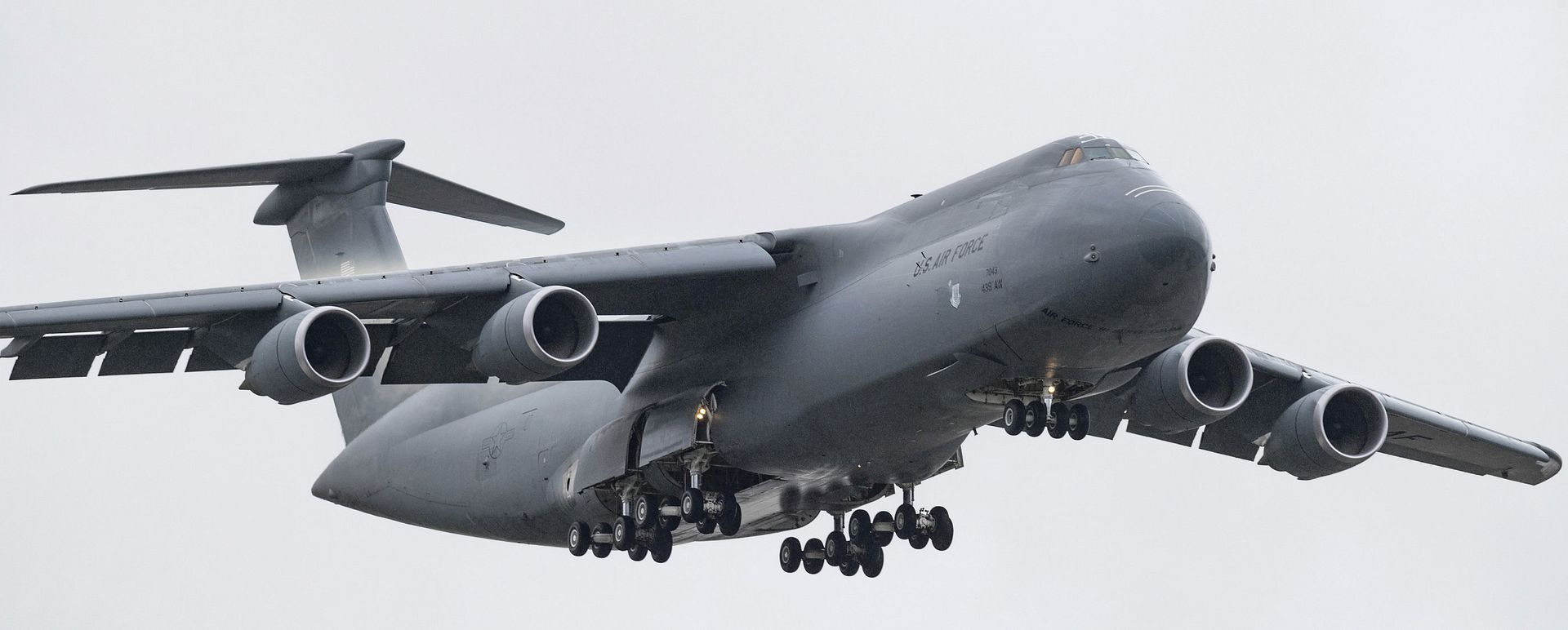
"With the capability inherent in the C-5M, the Super Galaxy is more efficient and more reliable, and better able to do its job of truly global strategic airlift," said Patricia Pagan, Lockheed Martin Air Mobility and Maritime Missions Strategic Airlift director, "I am very proud of the contractor-government team than carried out the C-5 fleet modernization effort. We've worked very hard to ensure the C-5Ms are the absolute best strategic airlifters possible for our armed forces."
An Air Force Reserve Command aircrew from the 439th Airlift Wing at Westover Air Reserve Base, Massachusetts, ferried the final C-5M to Stewart Air Force Base, New York, where the aircraft will undergo interior paint restoration. Once that work is complete, the aircraft will be flown to Westover where it will be the eighth C-5M assigned to the base.
Lockheed Martin began RERP development work in 2001. RERP incorporates more than 70 improvements that improve reliability, efficiency, maintainability and availability. RERP included changes or modifications to the airframe structure; environmental and pneumatic systems; hydraulic systems, electrical system; fuel system; landing gear; and flight controls.
The heart of the system is the GE F138 turbofan engine (known as a CF6-80C2L1F in the commercial world) de-rated to 50,000 pounds of thrust on the C-5M. This engine provides 22 percent more thrust than the out-of-production TF39 turbofans on the earlier C-5A/B/C aircraft. The engines also allow the C-5M to meet the FAA's Stage 4 noise reduction requirements.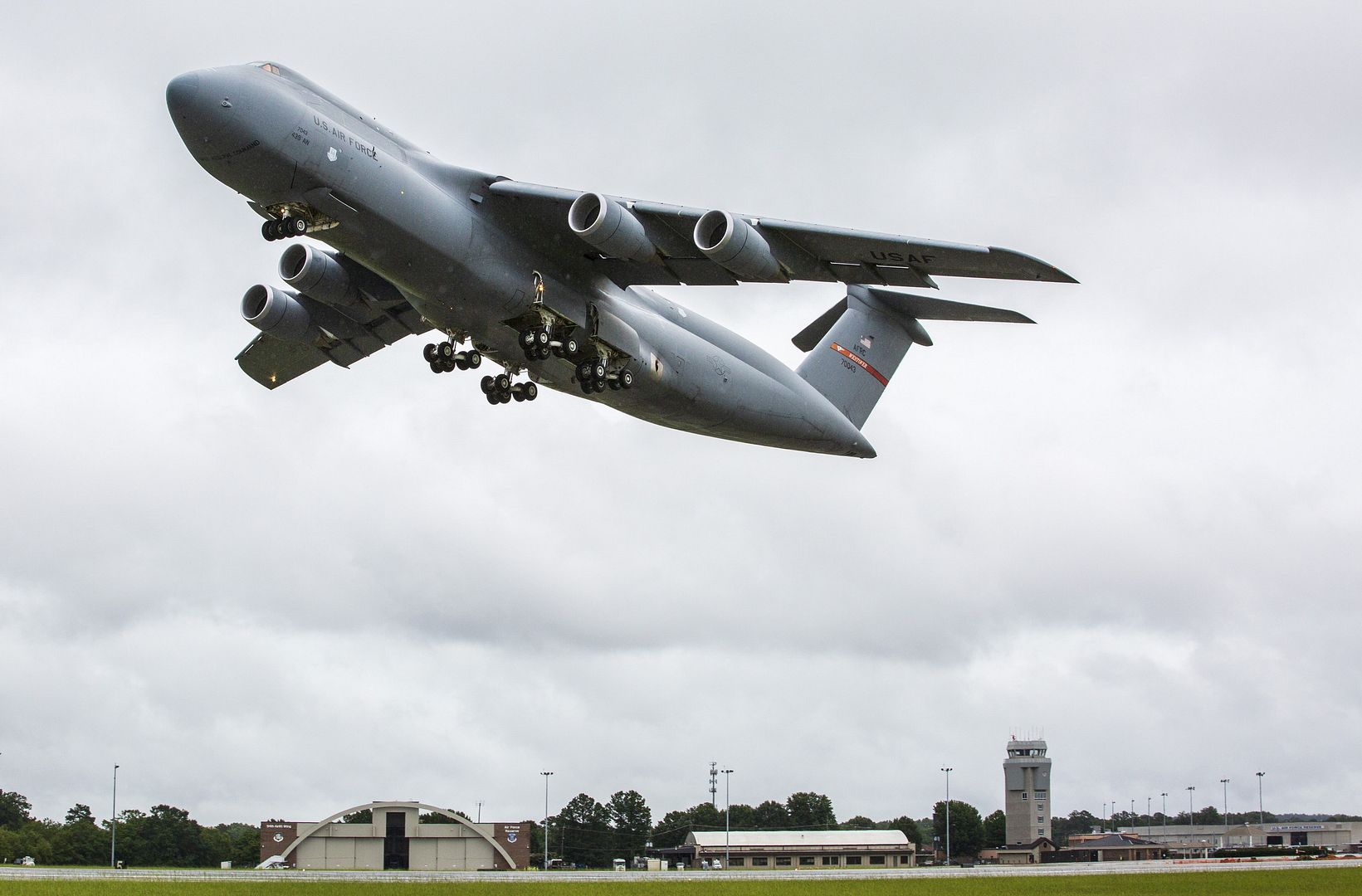
These changes, taken together, result in a 22 percent increase in thrust, a shorter takeoff roll; a 58 percent improvement in climb rate; allows the C-5M to cruise?at maximum gross weight?in the Communication/Navigation/Surveillance / Air Traffic Management (CNS/ATM) flight environment; and greatly enhanced fuel efficiency and less tanker support demand.
First flight of a modified aircraft to the C-5M standard came in Marietta, Georgia, on June 19, 2006. The first operational C-5M was delivered to Dover Air Force Base, Delaware, on February 9, 2009. A total of 49 C 5Bs, two C-5C aircraft, and one original C-5A was modified under RERP.
The C-5M holds 89 FAI-certified world aviation records, the most by any aircraft type. These records include time-to-climb with payload, altitude with payload, and greatest payload carried.
The C-5 Galaxy has been operated solely by the U.S. Air Force since 1970 and is the largest strategic airlifter in the U.S. Air Force's fleet. The C-5 is capable of carrying two 78-ton M1A1 main battle tanks or helicopters and other large equipment intercontinental distances. Fully loaded, a C-5 has a gross weight of more than 800,000 pounds. All of the C-5s were built at Lockheed Martin's Marietta site.
In addition to Westover, C-5Ms are assigned to active duty and Air Force Reserve Command units at Dover Air Force Base, Delaware (436th and 512th Airlift Wings) and Travis Air Force Base, California (60th and 349th Air Mobility Wings). The C-5 aircrew training squadron is part of the 433rd Airlift Wing, the Reserve wing at Joint Base San Antonio-Lackland, Texas.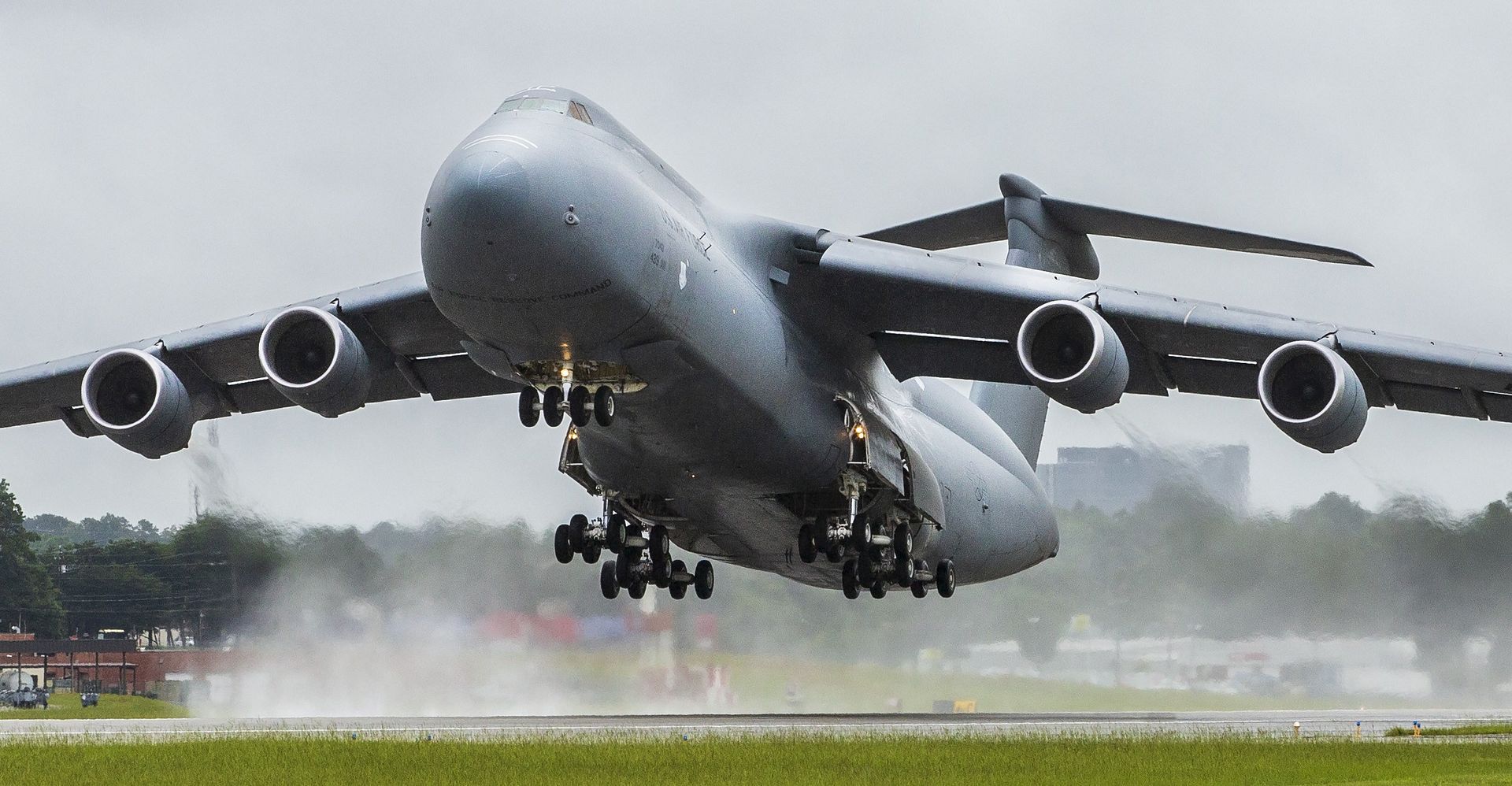
-
 Main AdminATLANTIC OCEAN (Aug. 7, 2018) Two F/A-18E Super Hornets, attached to Strike Fighter Squadron (VFA) 131, fly over the Wasp-class amphibious assault ship USS Iwo Jima (LHD 7), Aug. 7, 2018. Iwo Jima is hosting 269 friends and family members for a Tiger Cruise while deployed with its amphibious ready group in support of maritime security operations and theatre security cooperation efforts in Europe and the Middle East. (U.S. Navy photo by Mass Communication Specialist 2nd Class Andrew Murray/Released)
Main AdminATLANTIC OCEAN (Aug. 7, 2018) Two F/A-18E Super Hornets, attached to Strike Fighter Squadron (VFA) 131, fly over the Wasp-class amphibious assault ship USS Iwo Jima (LHD 7), Aug. 7, 2018. Iwo Jima is hosting 269 friends and family members for a Tiger Cruise while deployed with its amphibious ready group in support of maritime security operations and theatre security cooperation efforts in Europe and the Middle East. (U.S. Navy photo by Mass Communication Specialist 2nd Class Andrew Murray/Released)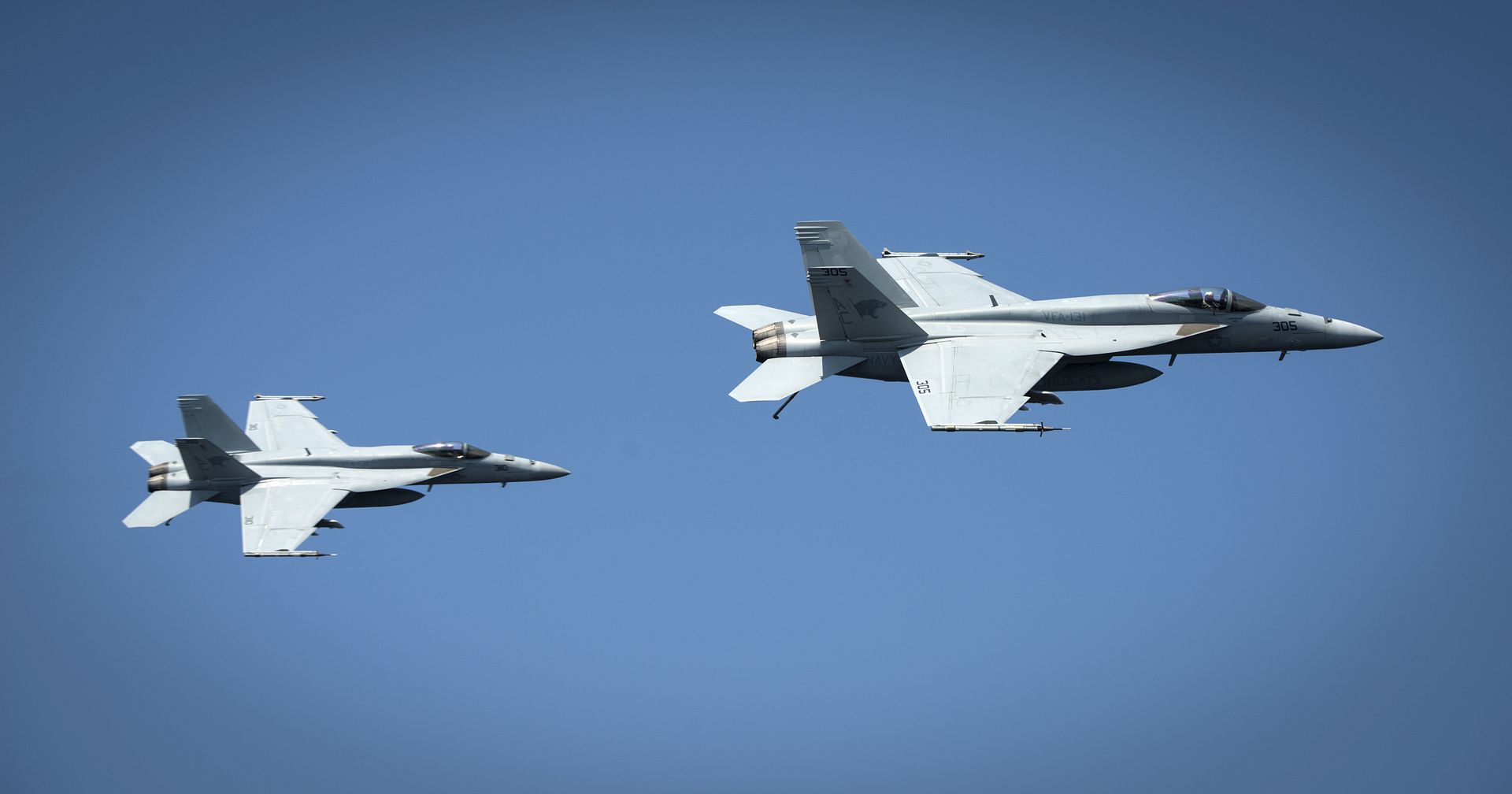
Northern Strike 18 is a National Guard Bureau-sponsored exercise uniting service members from many states, multiple service branches and a number of coalition countries during the first three weeks of August 2018 at the Camp Grayling Joint Maneuver Training Center and the Alpena Combat Readiness Training Center, both located in northern Michigan and operated by the Michigan National Guard. The accredited Joint National Training Capabilities exercise demonstrates the Michigan National Guard's ability to provide accessible, readiness-building opportunities for military units from all service branches to achieve and sustain proficiency in conducting mission command, air, sea, and ground maneuver integration, together with the synchronization of fires in a joint, multinational, decisive action environment. (Air National Guard photo by Staff Sgt. Bethany Rizor/released)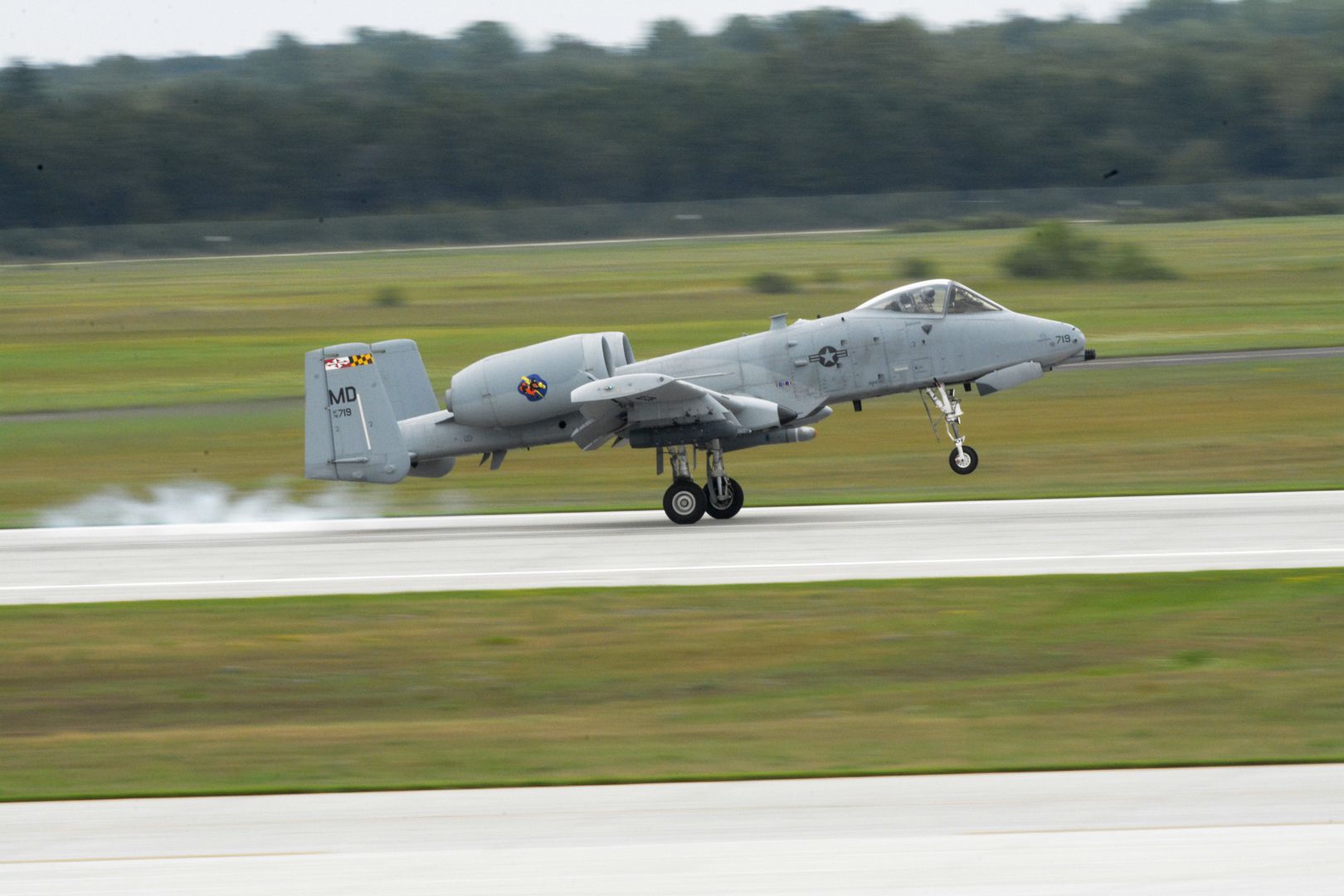
Air China has taken delivery of its first A350-900 in Toulouse today. The national flag carrier is the first Chinese mainland customer to order and take ownership of the world?s newest and most efficient twin-engine widebody aircraft.
Powered by Rolls-Royce Trent XWB engines, Air China?s A350-900 aircraft features a comfortable three-class cabin layout of 312 seats: 32 business, 24 premium economy and 256 economy. The airline will initially operate the new aircraft on its domestic routes, followed by flights to international destinations.
As of July 2018, Air China operates an Airbus fleet of 201 aircraft, including 142 A320 Family aircraft and 59 A330 Family aircraft.
Bringing new levels of efficiency and comfort to the long-range market, the A350 family is particularly well suited to the needs of Asia-Pacific airlines. To date, A350 Family firm orders from carriers in the region represent over a third of total sales for the type.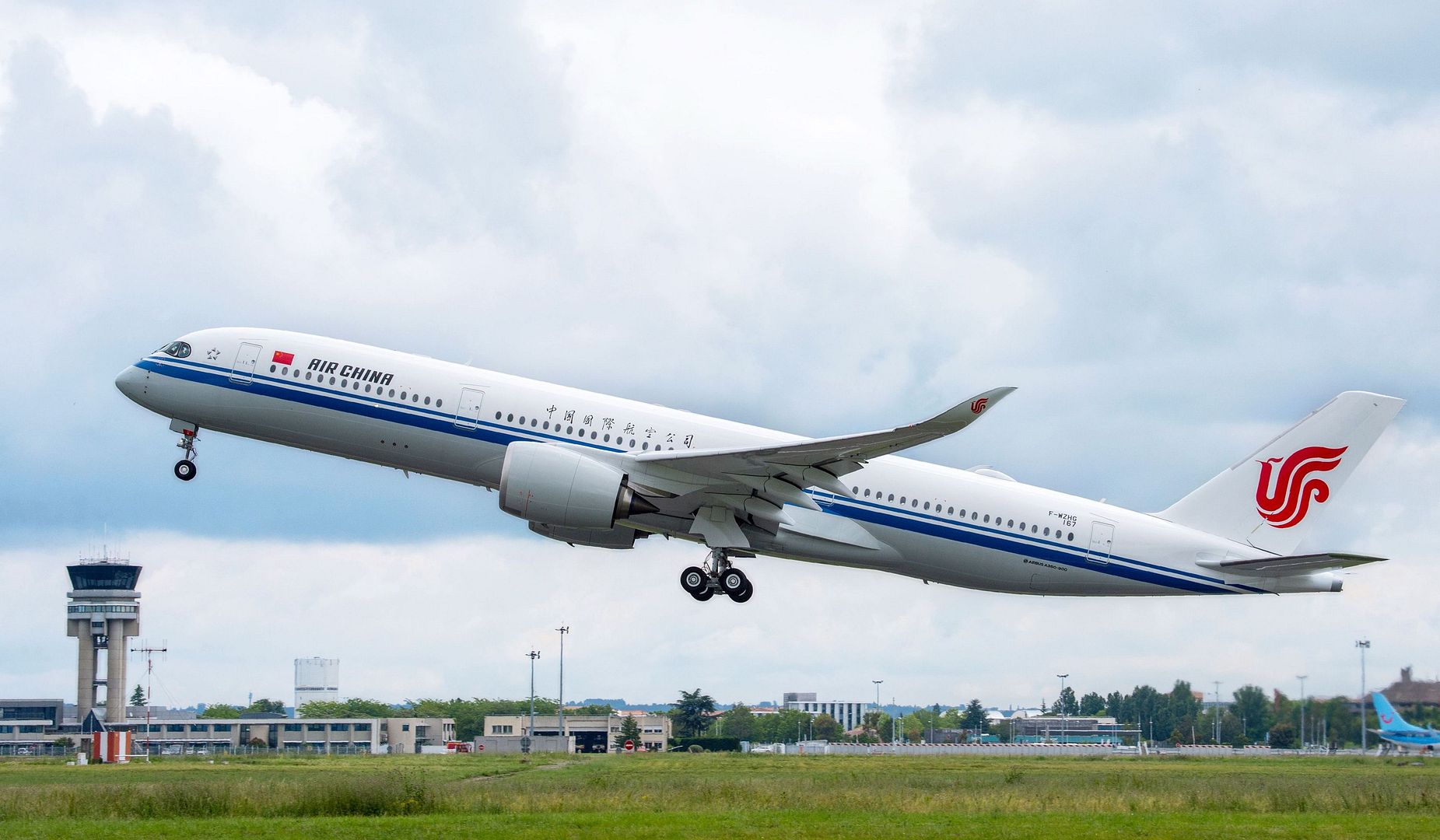
The A350 XWB is an all-new family of mid-size widebody long-haul airliners shaping the future of air travel, featuring the latest aerodynamic design, carbon fibre fuselage and wings, plus new fuel-efficient Rolls-Royce Trent XWB engines. Together, these latest technologies translate into unrivalled levels of operational efficiency, with a 25 per cent reduction in fuel burn and emissions, and significantly lower maintenance costs.
The Airspace cabin, in addition to aircraft spaciousness and quietness, provides better ambience, design and services, contributing to superior levels of comfort and well-being, and setting new standards in terms of flight experience for passengers in all classes.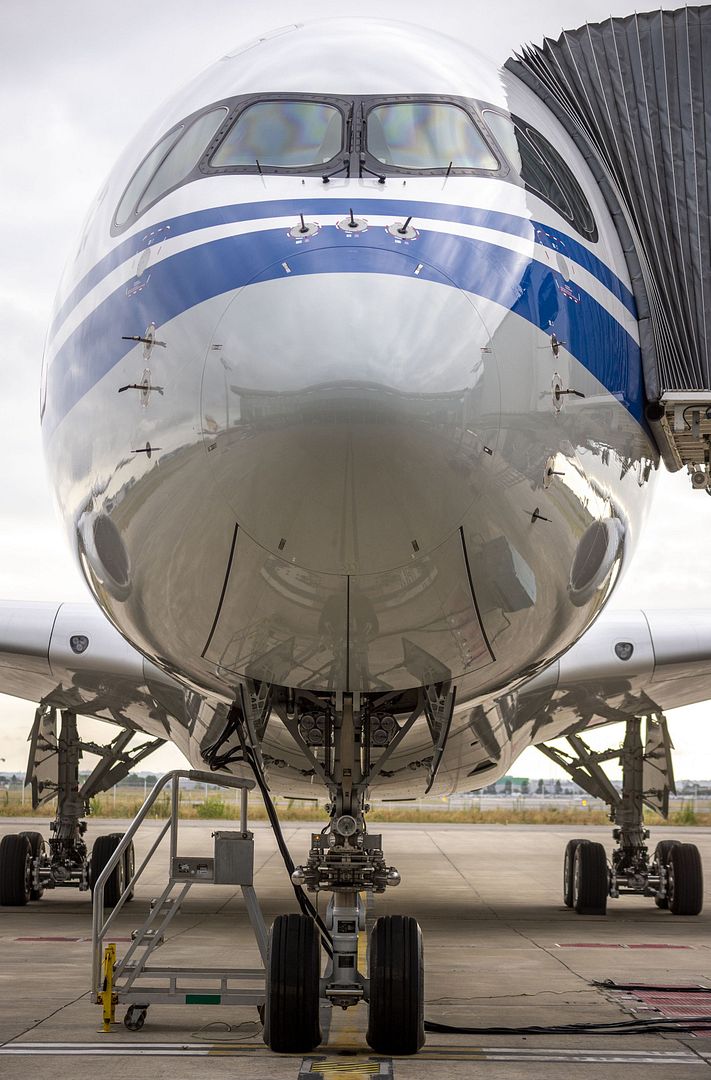
Sichuan Airlines, the largest all Airbus fleet carrier in China, has taken delivery of its first A350-900 leased from AerCap in Toulouse today, becoming the first Chinese mainland operator via leasing to take delivery of the world?s newest and most efficient twin-engine widebody aircraft.
Powered by Rolls-Royce Trent XWB engines, Sichuan Airlines? A350-900 aircraft features a comfortable two-class cabin layout of 331 seats: 28 business, and 303 economy. The airline will initially operate the new aircraft on its domestic routes, followed by its international ?Panda Routes?.
Sichuan Airlines operates an all Airbus fleet of 135 aircraft, including 123 A320 Family aircraft and 12 A330 Family aircraft. The partnership between Sichuan Airlines and Airbus dates back to 1995 when the airline introduced the A320, becoming the first to operate an Airbus fly-by-wire aircraft on the Chinese mainland. It was also the first operator to take delivery of a Tianjin assembled A320 Family aircraft. In 2010, Sichuan Airlines received its first A330 aircraft, in 2016 it signed a Letter of Intent for leasing four A350-900s, and in 2018 it signed an agreement with Airbus to order ten A350-900s.
The A350 XWB is an all-new family of mid-size widebody long-haul airliners shaping the future of air travel, featuring the latest aerodynamic design, carbon fibre fuselage and wings, plus new fuel-efficient Rolls-Royce Trent XWB engines. Together, these latest technologies translate into unrivalled levels of operational efficiency, with a 25 per cent reduction in fuel burn and emissions, and significantly lower maintenance costs.
The Airspace cabin, in addition to aircraft spaciousness and quietness, provides better ambience, design and services, contributing to superior levels of comfort and well-being, and setting new standards in terms of flight experience for passengers in all classes.
By the end of July 2018, Airbus recorded a total of 890 firm orders for the A350 XWB from 46 customers worldwide, already making it one of the most successful widebody aircraft ever.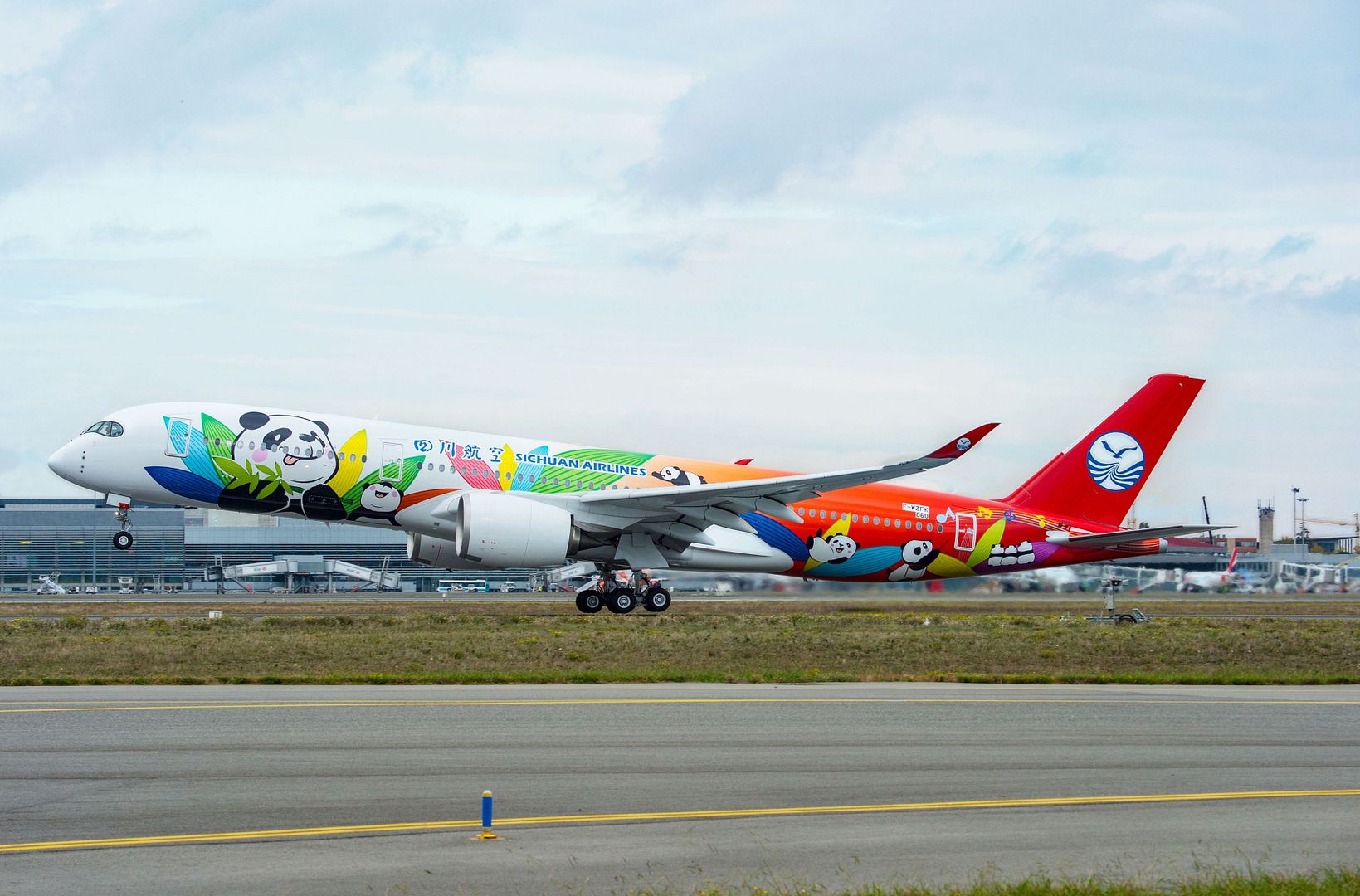
-
 Main AdminAn F-15E Strike Eagle with the 4th Fighter Wing at Seymour Johnson Air Force Base, North Carolina flies near a rainbow over the southeastern United States August 8, 2018. The Strike Eagle had just been refueled by a KC-135 Stratotanker with the 121st Air Refueling Wing, Ohio. (U.S. Air National Guard photo by Airman 1st Class Tiffany A. Emery)
Main AdminAn F-15E Strike Eagle with the 4th Fighter Wing at Seymour Johnson Air Force Base, North Carolina flies near a rainbow over the southeastern United States August 8, 2018. The Strike Eagle had just been refueled by a KC-135 Stratotanker with the 121st Air Refueling Wing, Ohio. (U.S. Air National Guard photo by Airman 1st Class Tiffany A. Emery)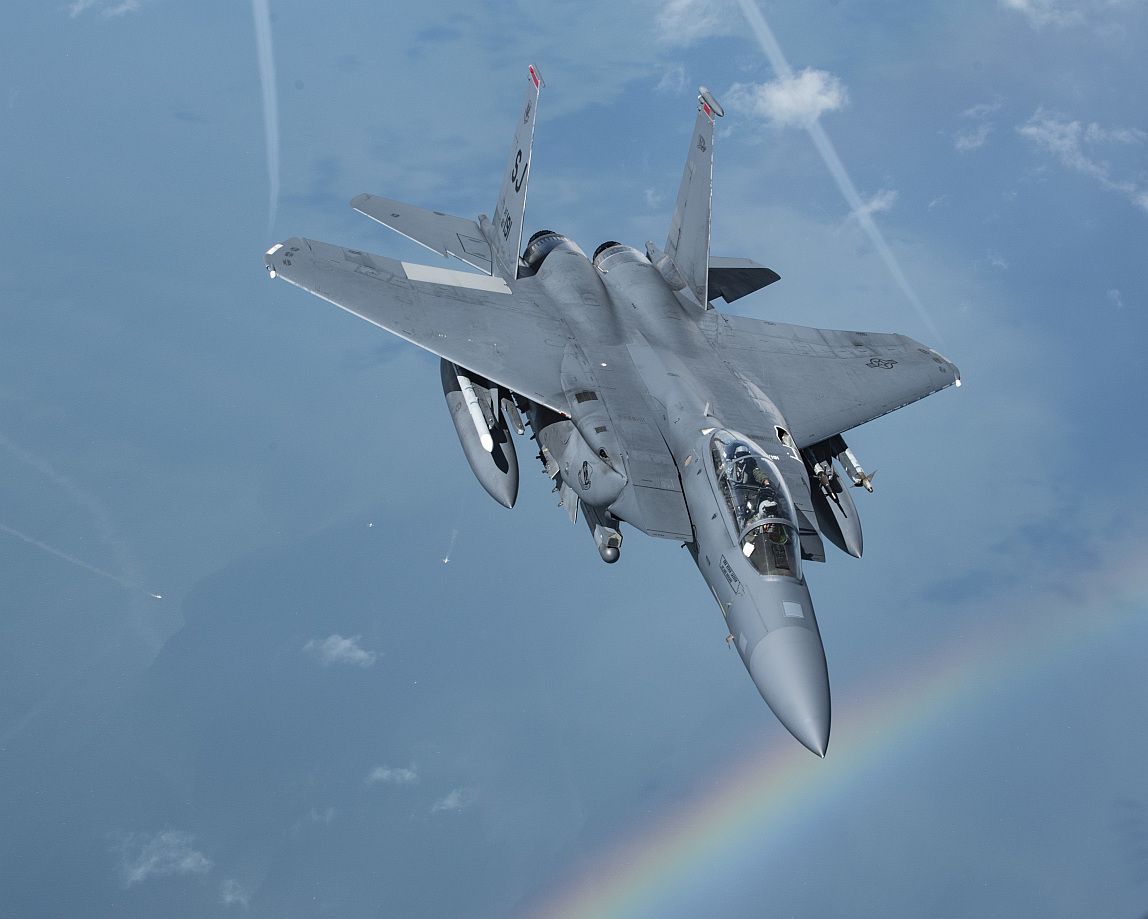
An F-15E Strike Eagle with the 4th Fighter Wing at Seymour Johnson Air Force Base, North Carolina flies away from the boom of a KC-135 Stratotanker with the 121st Air Refueling Wing, Ohio over the southeastern United States August 8, 2018. The aerial refueling was an exercise to keep pilots and crew proficient and mission ready. (U.S. Air National Guard photo by Airman 1st Class Tiffany A. Emery)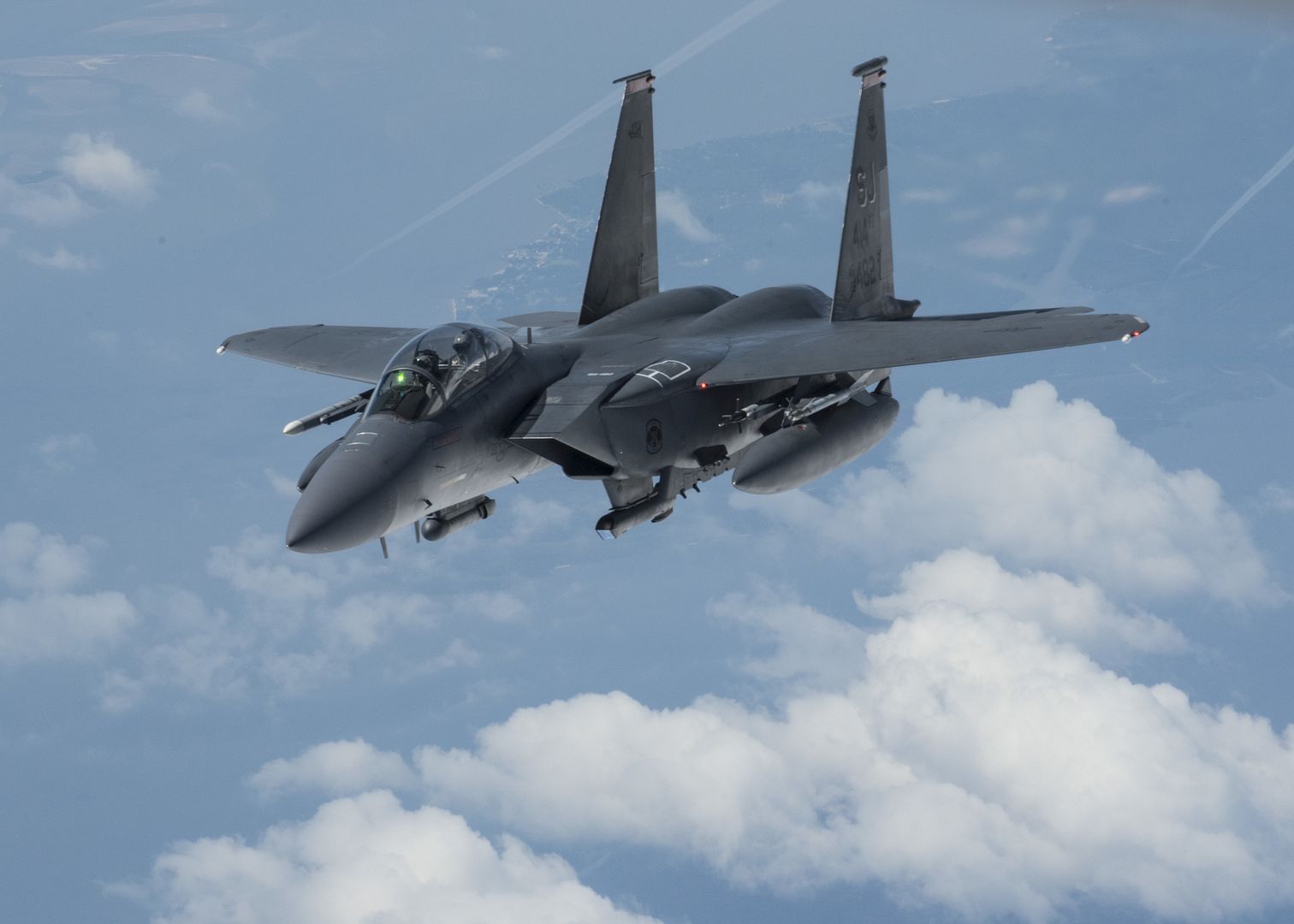
U.S. Air Force F-22 Raptor's land at Spangdahlem Air Base, Germany, Aug. 8, 2018. The aircraft and a squadron of other F-22s, Airmen, and equipment arrived from the 95th Fighter Squadron, 325th Fighter Wing, at Tyndall Air Force Base, Fla. to train with other European-based aircraft as part of a Flying Training Deployment. The FTD plans to forward deploy from Germany to operating locations within other NATO member nations to maximize training opportunities while strengthening the NATO alliance and deterring regional aggression. (U.S. Air Force photo's by Senior Airman Preston Cherry)

SELFRIDGE AIR NATIONAL GUARD BASE, Mich.-- Airmen with 191st Aircraft Maintenance Squadron, perform a routine inspection on a KC-135 Stratotanker here on Aug. 8, 2018. Routine inspections are conducted prior to taking flight to ensure the aircraft crew is ready to respond to refueling requests on a daily basis. (U.S. Air Force photo by Munnaf Joarder)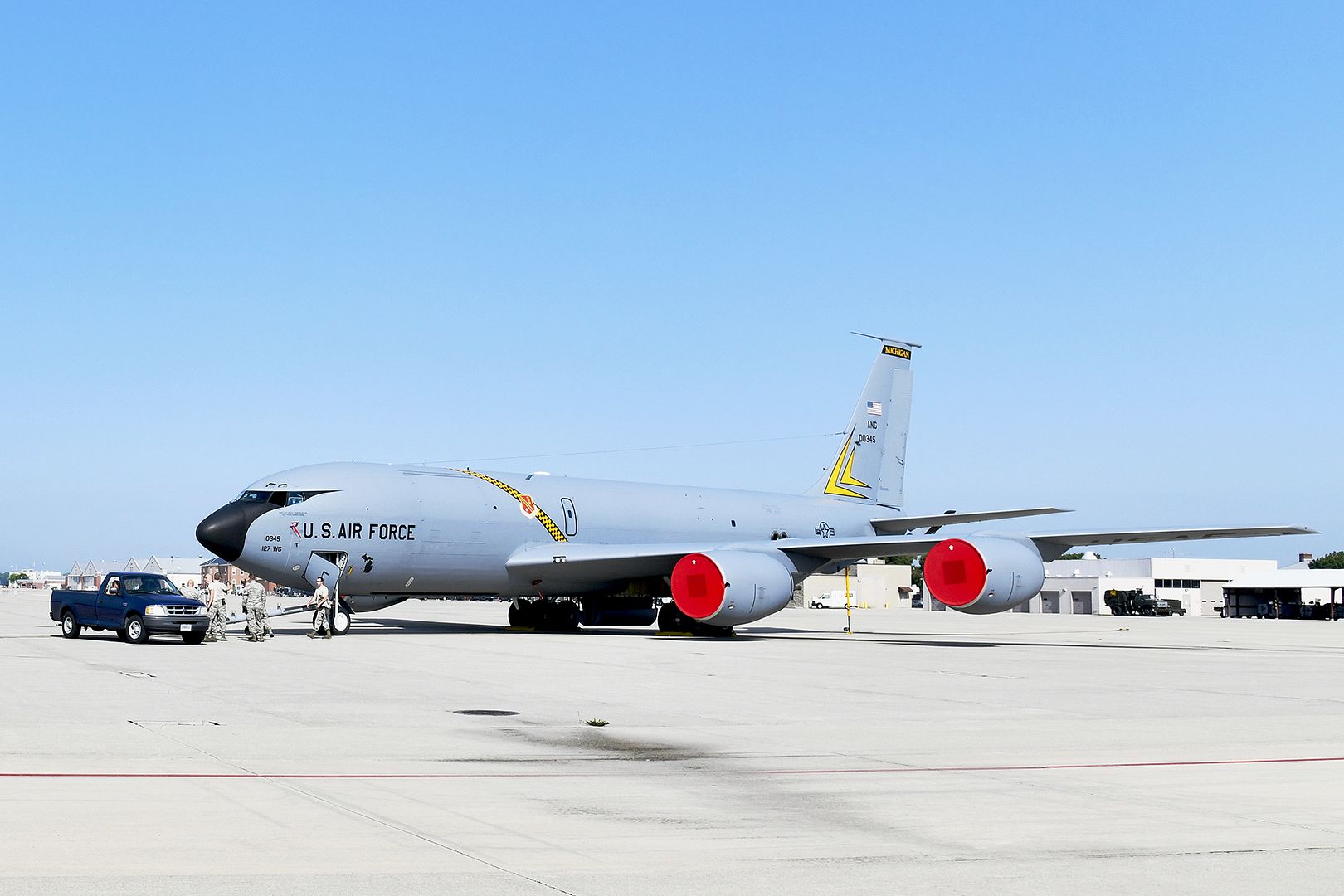
An F-16C Fighting Falcon from the 31st Fighter Wing, 510th Fighter Squadron, Aviano Air Base, Italy, takes off at Royal Air Force Lakenheath, England, Aug. 3, 2018. During a two-week flying training deployment to the United Kingdom, the 510th FS "Buzzards" flew approximately 332 hours across 168 sorties. (U.S. Air Force photo by Master Sgt. Eric Burks)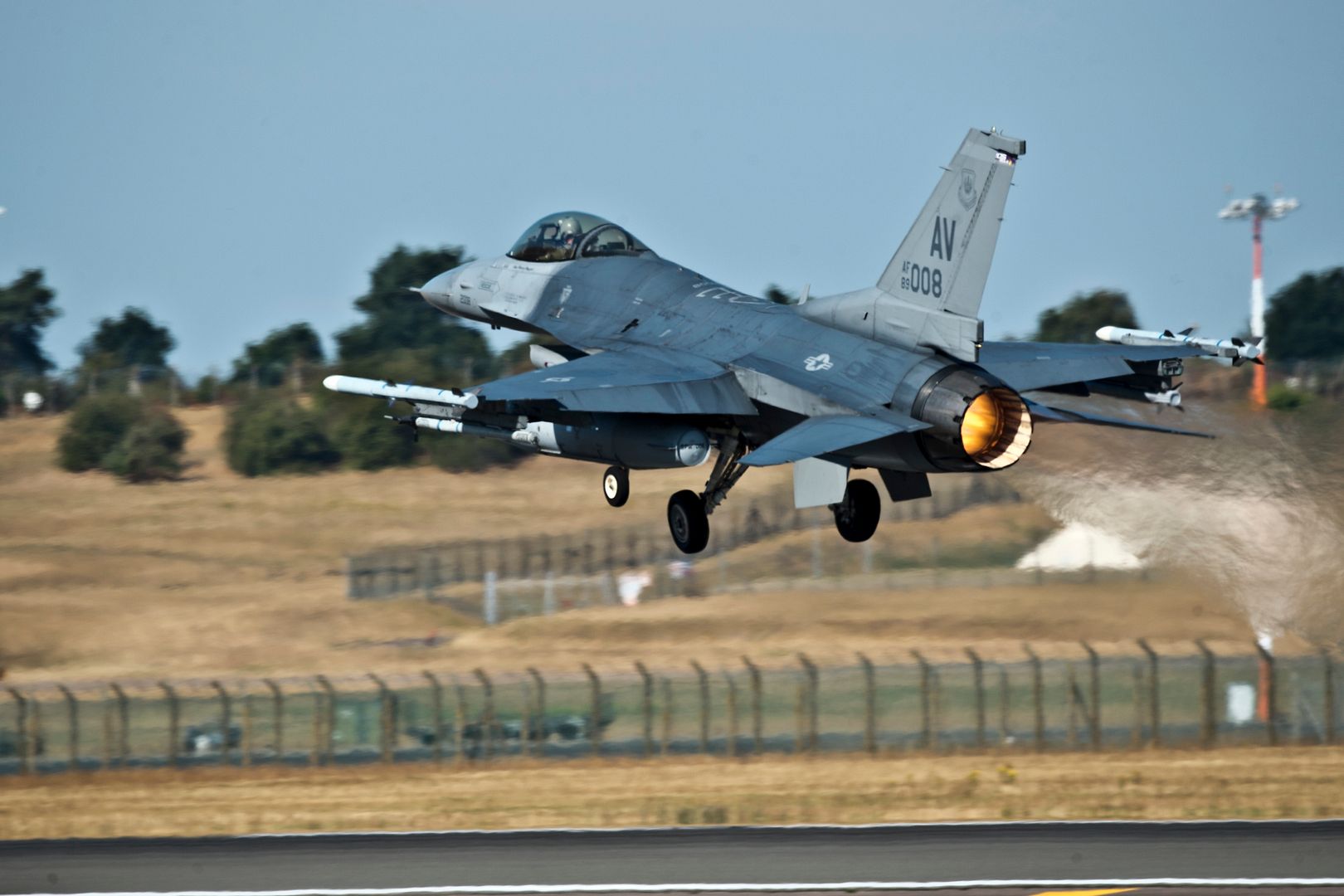
Farnborough, 8 August 2018 ? Airbus Defence and Space announced the successful landing of its first production aircraft of the Zephyr programme, the new Zephyr S HAPS (High Altitude Pseudo-Satellite). After taking off on 11th July in Arizona, USA, Zephyr S logged a maiden flight of over 25 days, the longest duration flight ever made. An application has been made to establish this as a new world record. This maiden flight of the solar powered Zephyr S proves the system capabilities and achieved all the flight?s engineering objectives.
The previous longest flight duration record was also logged by a Zephyr prototype aircraft a few years ago, achieving then more than 14 days continuous flight, which already was ten times longer than any other aircraft in the world.
This new record flight was supported by the UK government and reflects the UK Ministry of Defence?s position as the first customer for this innovative and potentially game changing capability.
Zephyr is the world?s leading, solar?electric, stratospheric Unmanned Aerial Vehicle (UAV). It harnesses the sun?s rays, running exclusively on solar power, above the weather and conventional air traffic; filling a capability gap complimentary to satellites, UAVs and manned aircraft to provide persistent local satellite-like services.
?This very successful maiden flight represents a new significant milestone in the Zephyr programme, adding a new stratospheric flight endurance record which we hope will be formalised very shortly. We will in the coming days check all engineering data and outputs and start the preparation of additional flights planned for the second half of this year from our new operating site at the Wyndham airfield in Western Australia? said Jana Rosenmann, Head of Unmanned Aerial Systems at Airbus.
Zephyr will bring new see, sense and connect capabilities to both commercial and military customers. Zephyr will provide the potential to revolutionise disaster management, including monitoring the spread of wildfires or oil spills. It provides persistent surveillance, tracing the world?s changing environmental landscape and will be able to provide communications to the most unconnected parts of the world.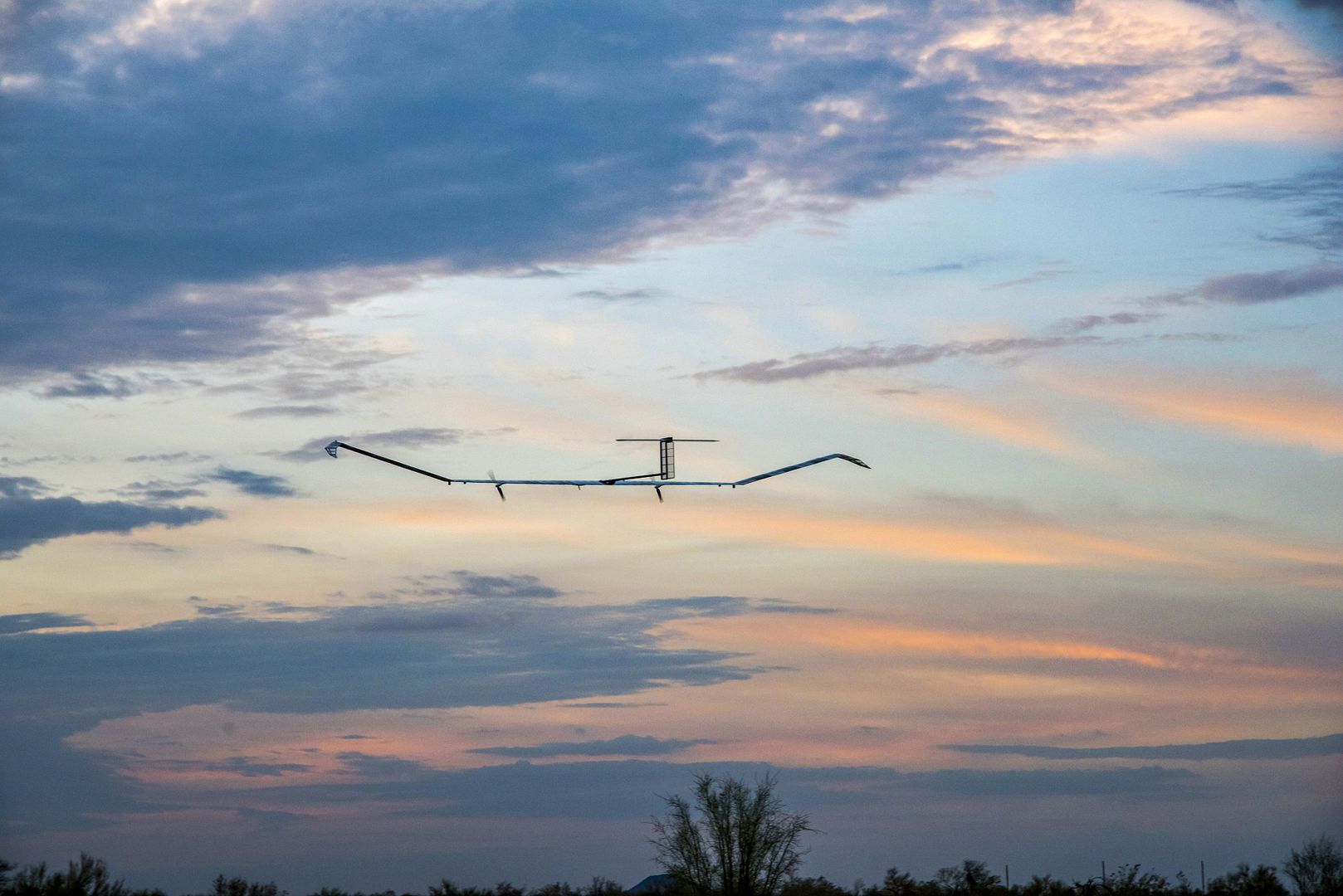
-
 Main AdminPANAMA CITY, Florida - Naval Surface Warfare Center Panama City Division supported a Joint Military Exercise with the United States Army School of Aviation Medicine, NEDU Navy Experimental Diving Unit, and Naval Diving and Salvage Training Center - Home Page Aug. 8, 2018 in Panama City, Florida. U.S. Navy photos by Ron Newsome
Main AdminPANAMA CITY, Florida - Naval Surface Warfare Center Panama City Division supported a Joint Military Exercise with the United States Army School of Aviation Medicine, NEDU Navy Experimental Diving Unit, and Naval Diving and Salvage Training Center - Home Page Aug. 8, 2018 in Panama City, Florida. U.S. Navy photos by Ron Newsome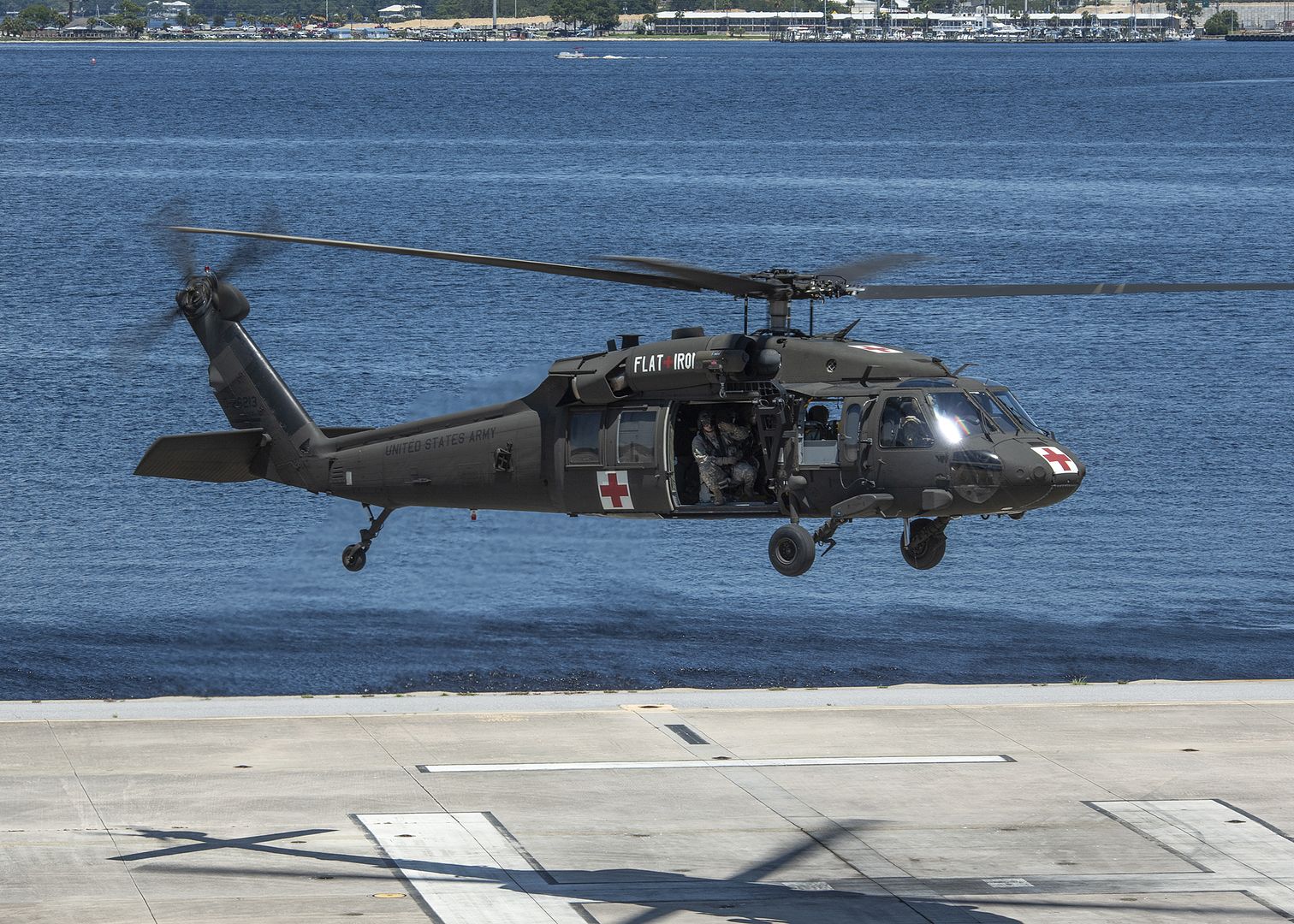
Navy MH-60 ?Sea Hawks? refuel during a combat training mission during exercise Northern Strike 18, Alpena Combat Readiness Training Center, Mich., Aug 9, 2018.
Northern Strike 18 is a National Guard Bureau-sponsored exercise uniting service members from many states, multiple service branches and a number of coalition countries during the first three weeks of August 2018 at the Camp Grayling Joint Maneuver Training Center and the Alpena Combat Readiness Training Center, both located in northern Michigan and operated by the Michigan National Guard. The accredited Joint National Training Capabilities exercise demonstrates the Michigan National Guard's ability to provide accessible, readiness-building opportunities for military units from all service branches to achieve and sustain proficiency in conducting mission command, air, sea, and ground maneuver integration, together with the synchronization of fires in a joint, multinational, decisive action environment. (Air National Guard photo by Airman 1st Class Tiffany Clark/released)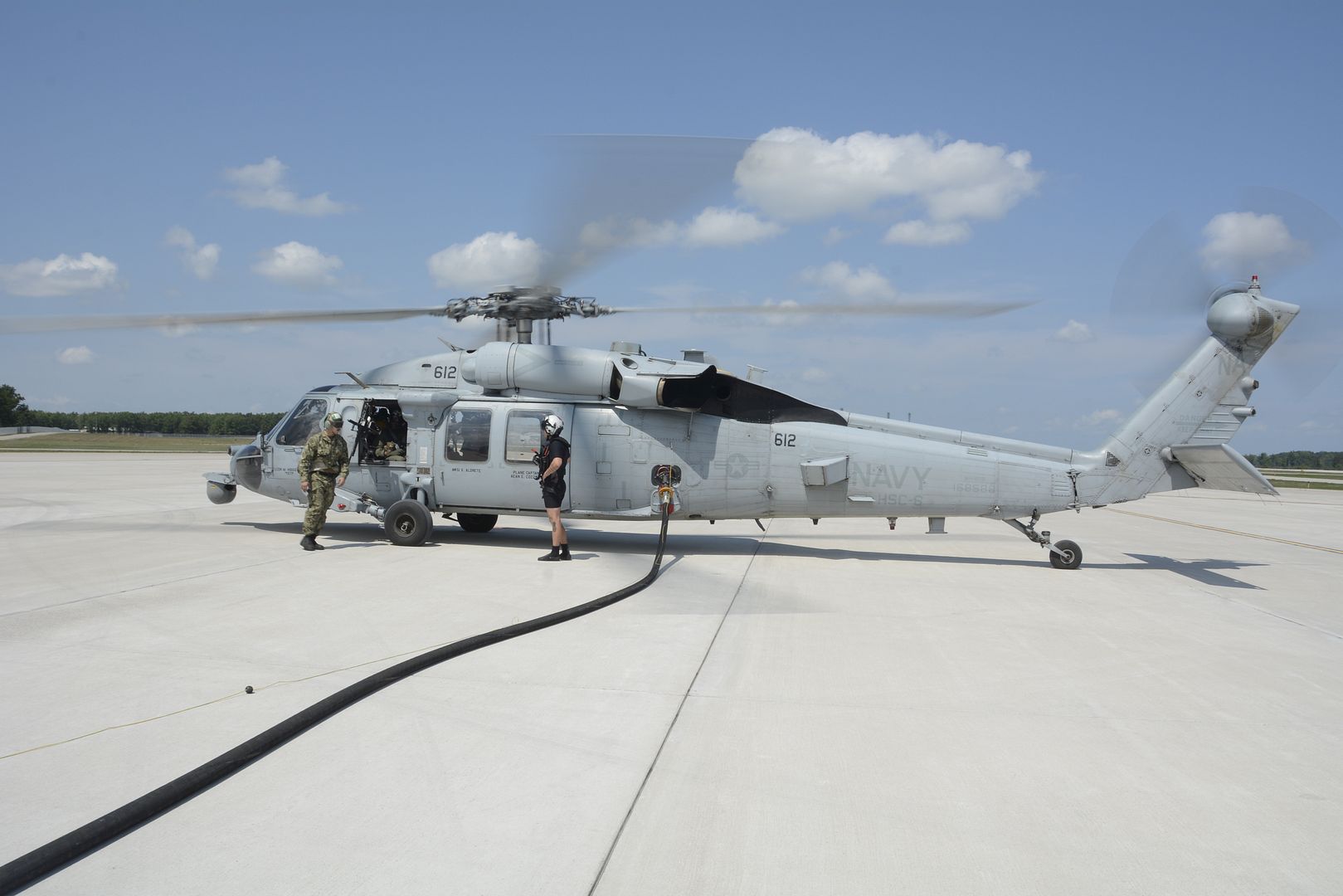
A U.S. Air Force F-16 Fighting Falcon, assigned to Kunsan Air Base, Republic of Korea, fly over the Northern Territory, Australia, after receiving air-to-air refueling from a Royal Australian Air Force KC-30A Multi-Role Tanker Transport aircraft during Exercise Pitch Black 18, Aug. 1, 2018. This training focuses on exercising international forces in the planning and execution of large-scale offensive, counter-air and counter-land operations in a coalition environment against a capable adversary force. (U.S. Air Force photo by Senior Airman Savannah L. Waters)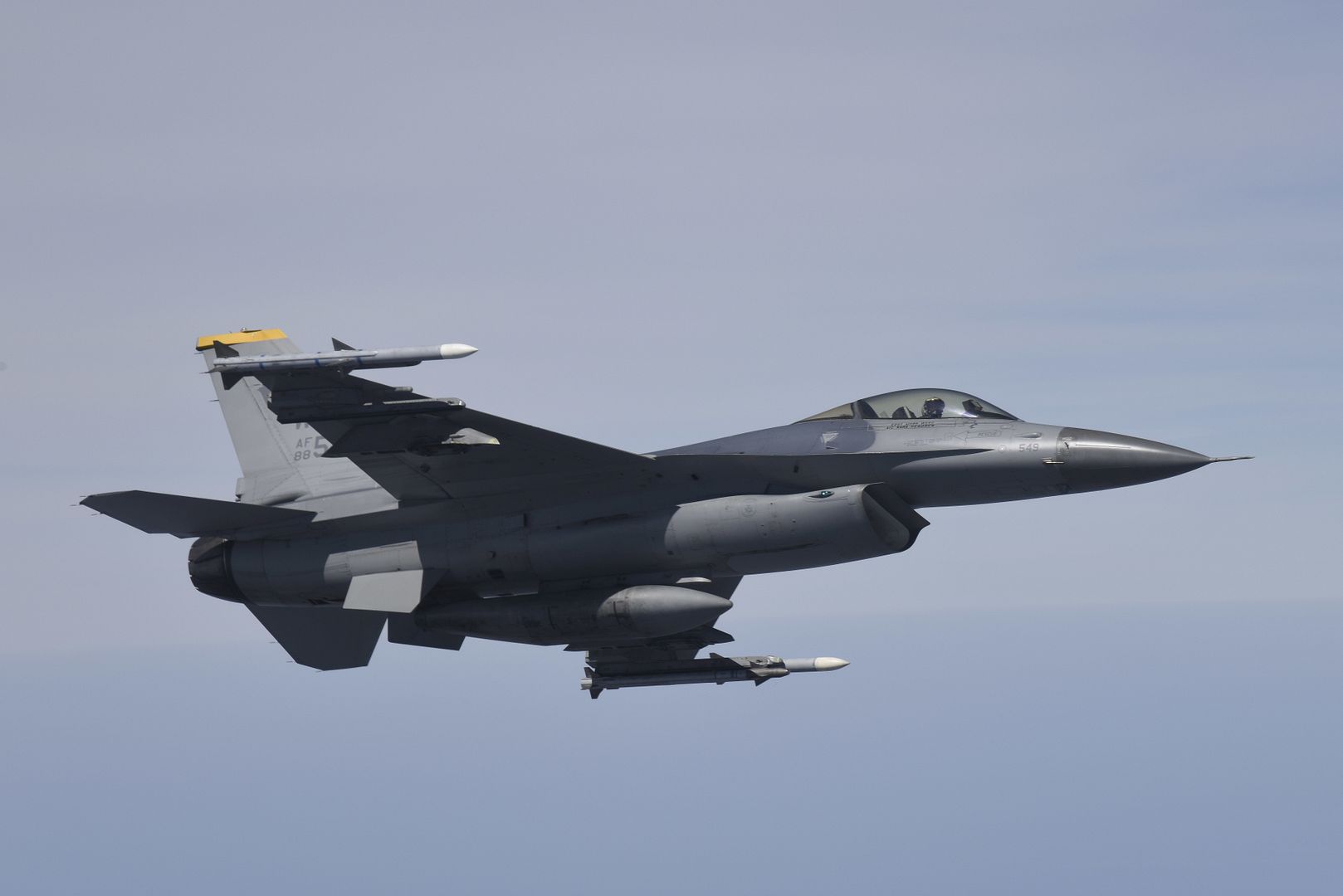
Two Republic of Singapore Air Force F-16s fly over the Northern Territory, Australia, during Exercise Pitch Black 18, Aug. 1, 2018. This exercise aims to enhance flight operations and proficiency as well as maintain interoperability between the United States and partner nations. (U.S. Air Force photo by Senior Airman Savannah L. Waters)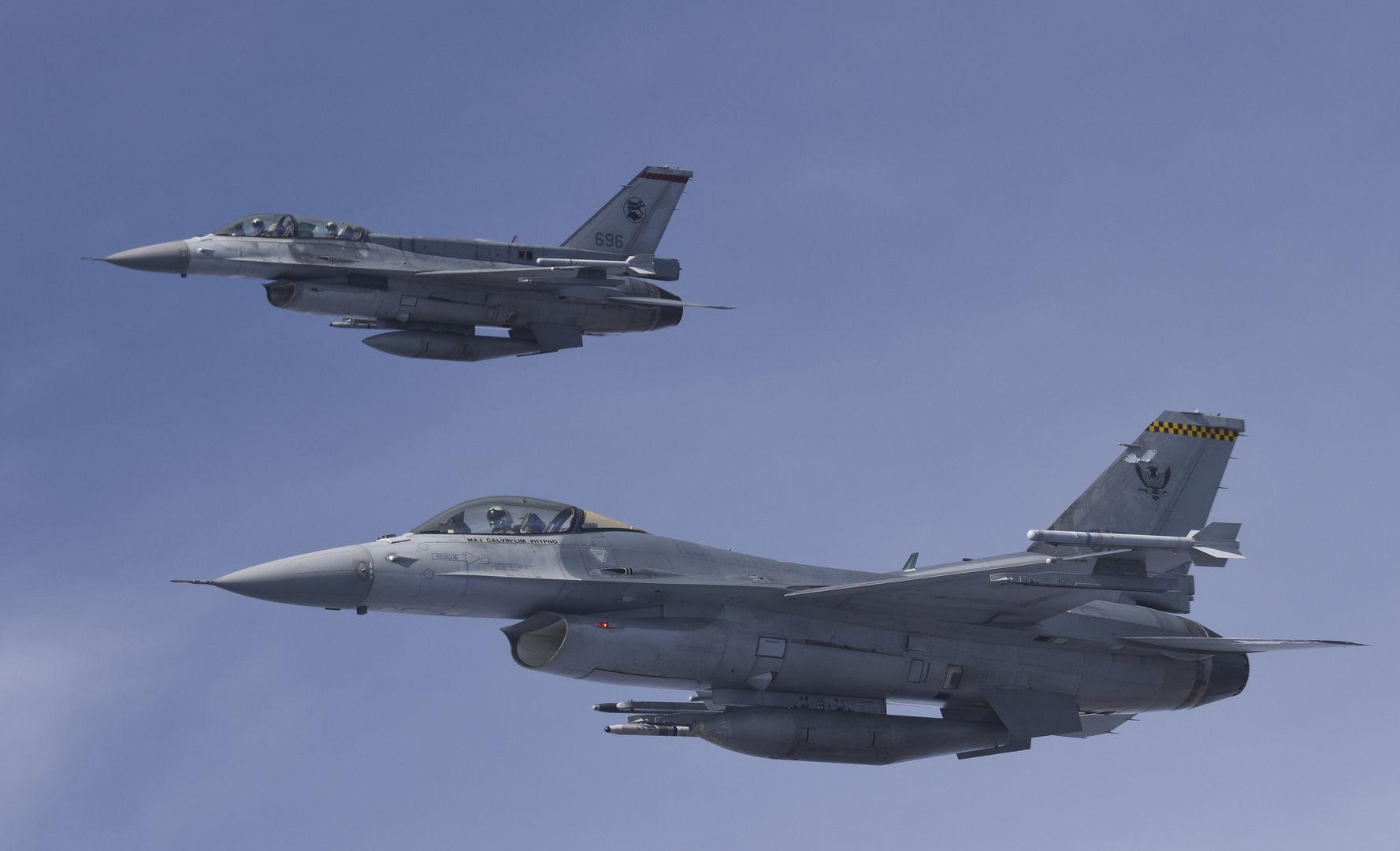
A Royal Australian Air Force F-18 Hornet approach a Royal Australian Air Force KC-30A Multi-Role Tanker Transport aircraft for air-to-air refueling over the Northern Territory, Australia during Exercise Pitch Black 18, Aug. 1, 2018. Members of the U.S. military and Australian Defence Force train together during several military exercises every year to maintain relationships and improve interoperability. (U.S. Air Force photo by Senior Airman Savannah L. Waters)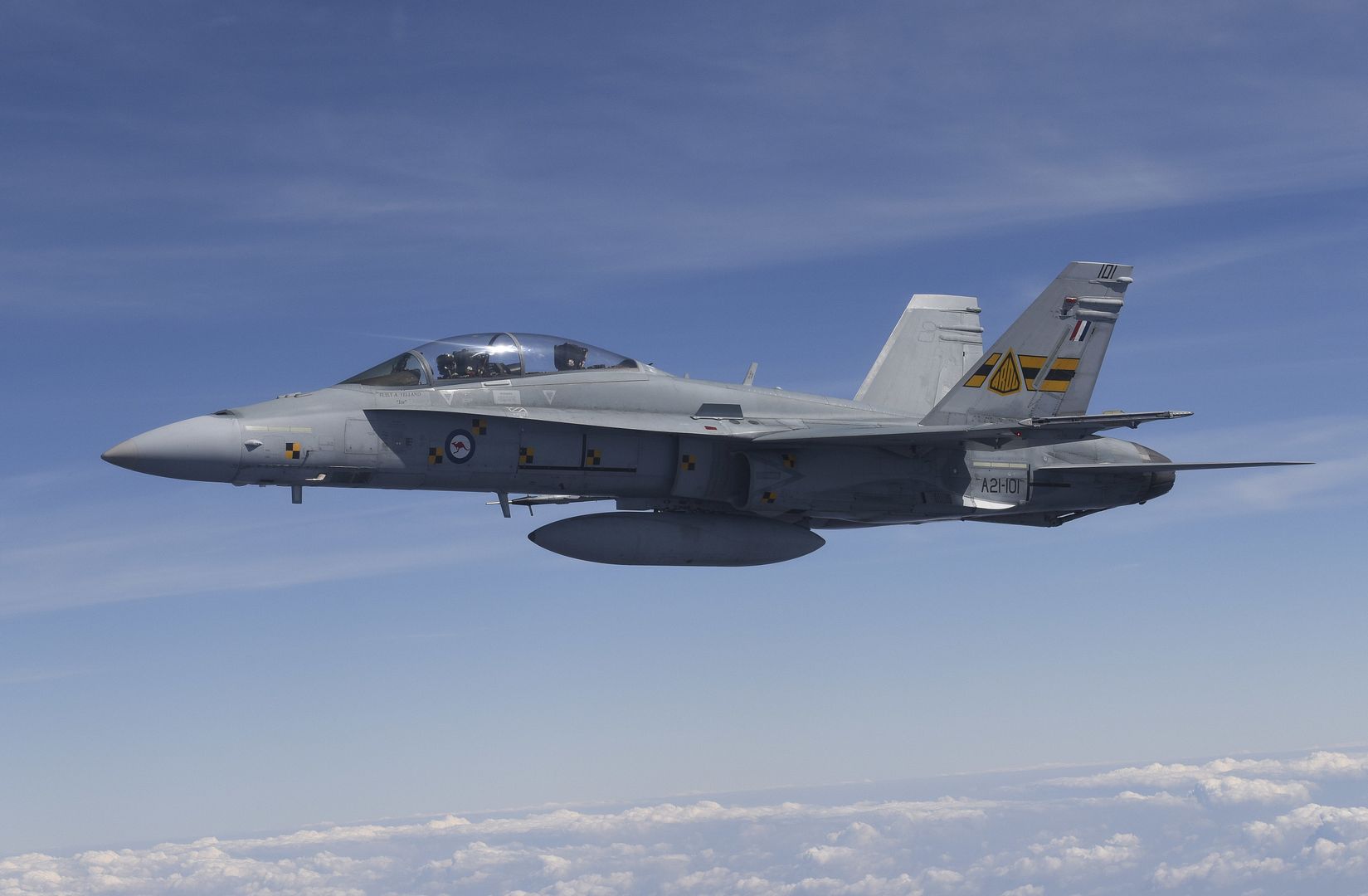
A U.S. Army CH-47 Chinook helicopter takes off during Leapfest 2018 at the University of Rhode Island in West Kingston, R.I., Aug. 5, 2018. Leapfest is the largest, longest-standing, international static line parachute training event and competition hosted by the 56th Troop Command, Rhode Island Army National Guard, to promote high level technical training and esprit de corps within the International Airborne community. Over 300 Paratroopers from nine different countries will participate this year. (U.S. Army photo by Staff Sgt. Justin P. Morelli)
Airmen assigned to the 748th Aircraft Maintenance Squadron ready an F-15C Eagle for takeoff at Keflavik Air Base, Iceland, Aug. 2, 2018, as part of a training mission. While providing critical infrastructure and support, Iceland has looked to its NATO allies to provide airborne surveillance and interception capabilities to meet its peacetime preparedness needs since 2008. (U.S. Air Force photo/Staff Sgt. Alex Fox Echols III)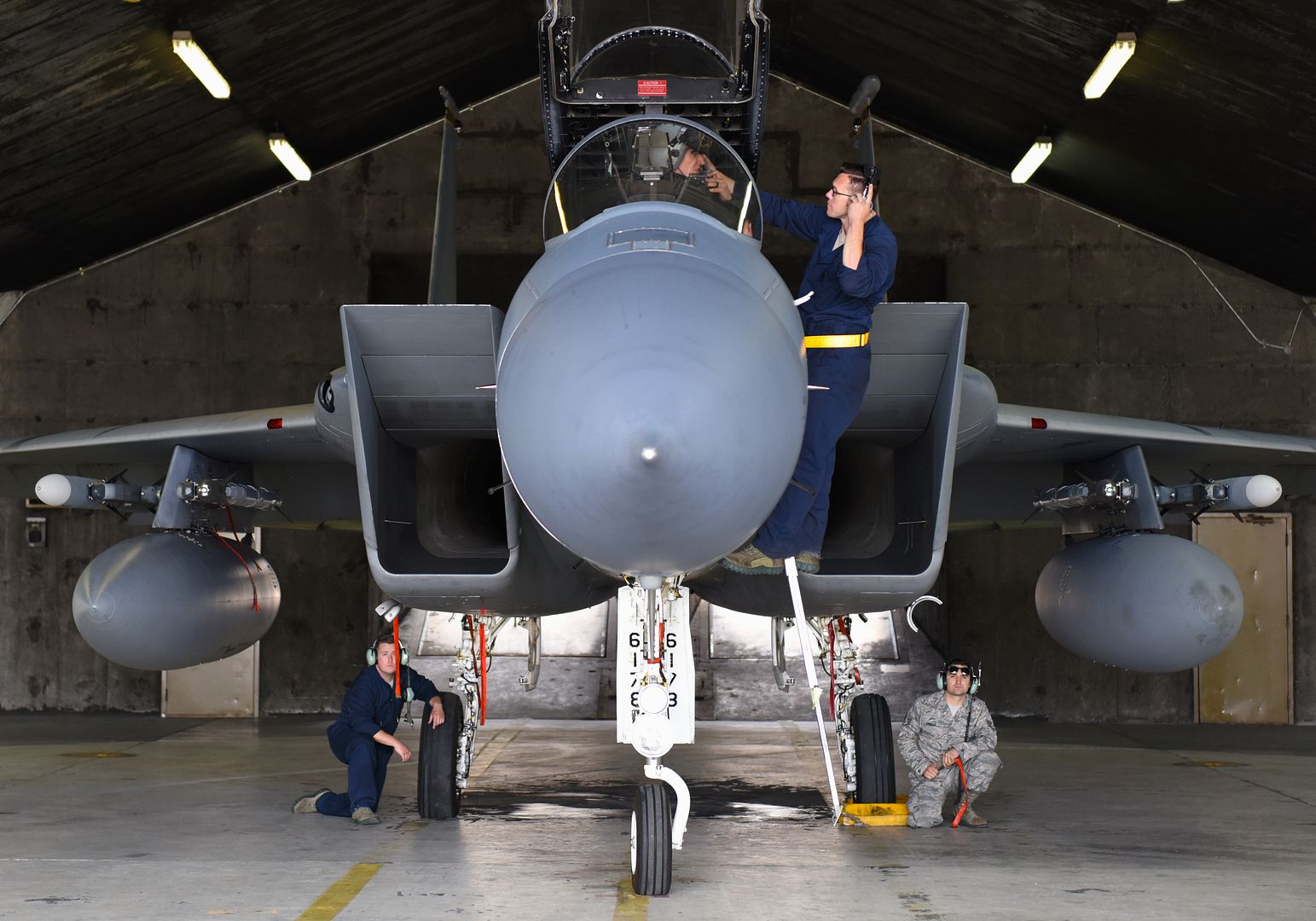
A pilot assigned to the 493rd Expeditionary Fighter Squadron taxis down the flightline in an F-15C Eagle Keflavik Air Base, Iceland, Aug. 6, 2018, in support of NATO?s Icelandic Air Surveillance mission. While providing critical infrastructure and support, Iceland has looked to its NATO allies to provide airborne surveillance and interception capabilities to meet its peacetime preparedness needs since 2008. (U.S. Air Force photo/Staff Sgt. Alex Fox Echols III)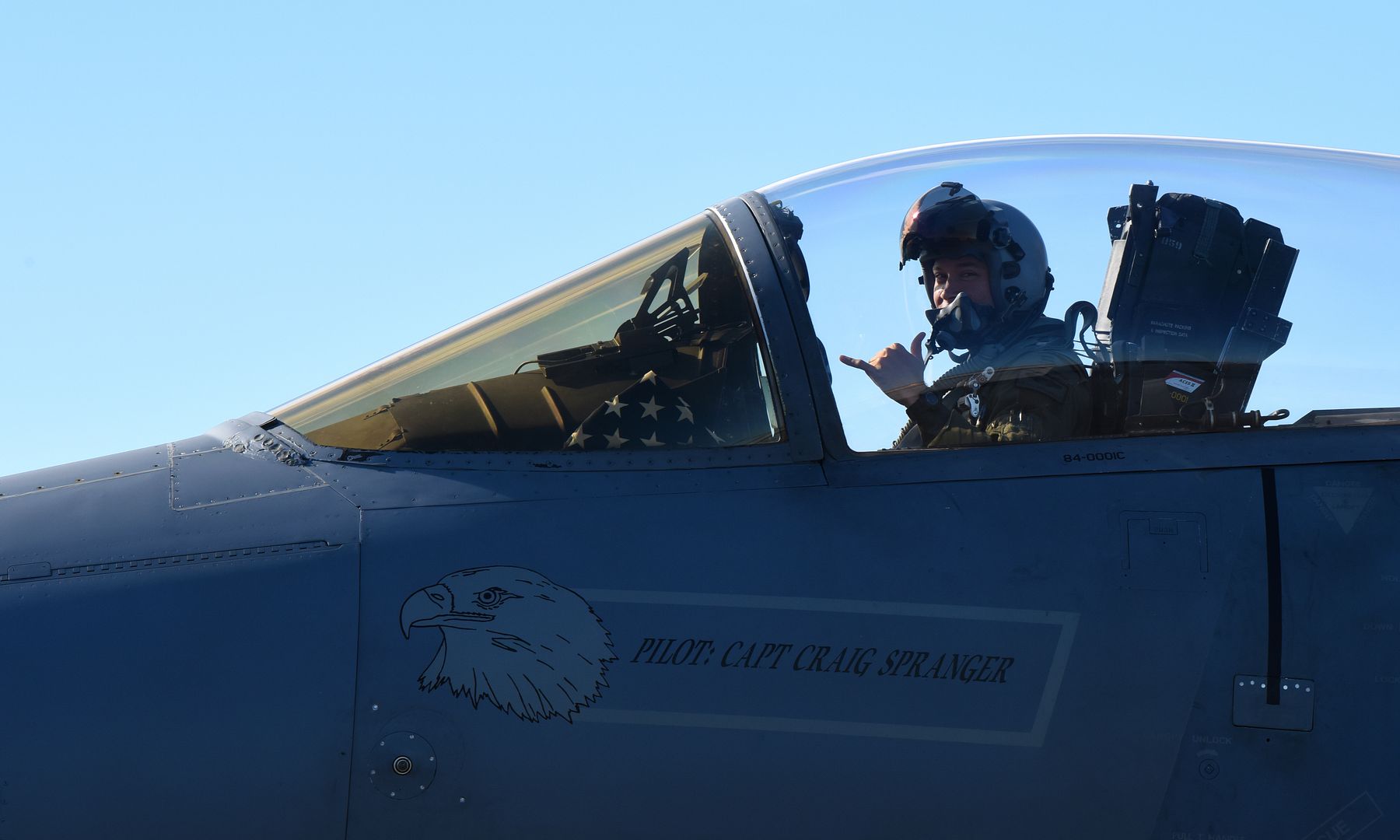
PACIFIC OCEAN (Aug. 8, 2018) An E/A-18G Growler assigned to Electronic Attack Squadron 133 flies over the Nimitz-class aircraft carrier USS John C. Stennis (CVN 74). John C. Stennis is underway conducting routine operations in the U.S. 3rd Fleet area of operations. (U.S. Navy photo by Mass Communication Specialist 2nd Class David A. Brandenburg/Released)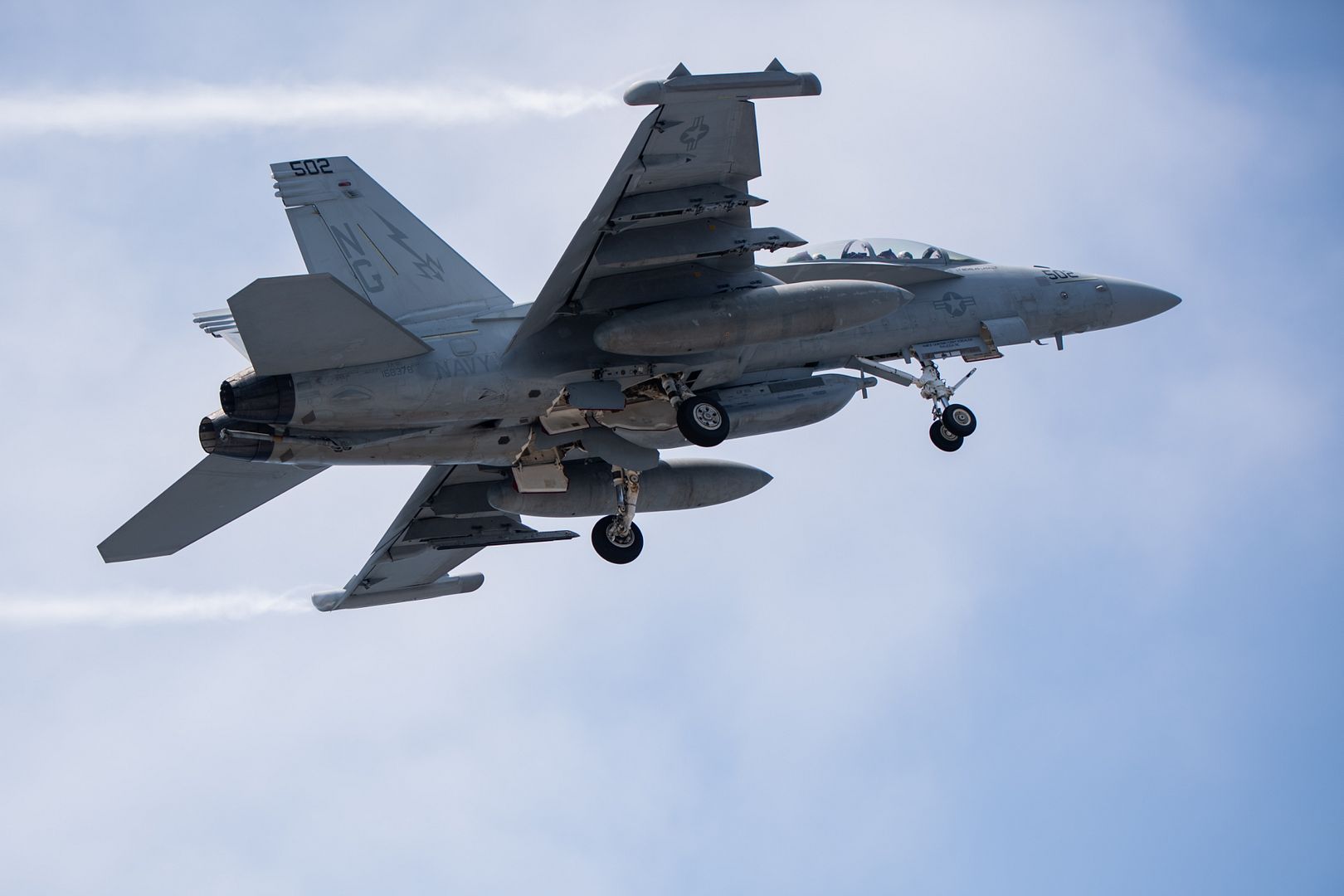
PACIFIC OCEAN (Aug. 8, 2018) An F/A-18E Super Hornet assigned to Strike Fighter Squadron 14 lands on the flight deck aboard the Nimitz-class aircraft carrier USS John C. Stennis (CVN 74). John C. Stennis is underway conducting routine operations in the U.S. 3rd Fleet area of operations. (U.S. Navy photo by Mass Communication Specialist 3rd Class Nick Bauer/Released)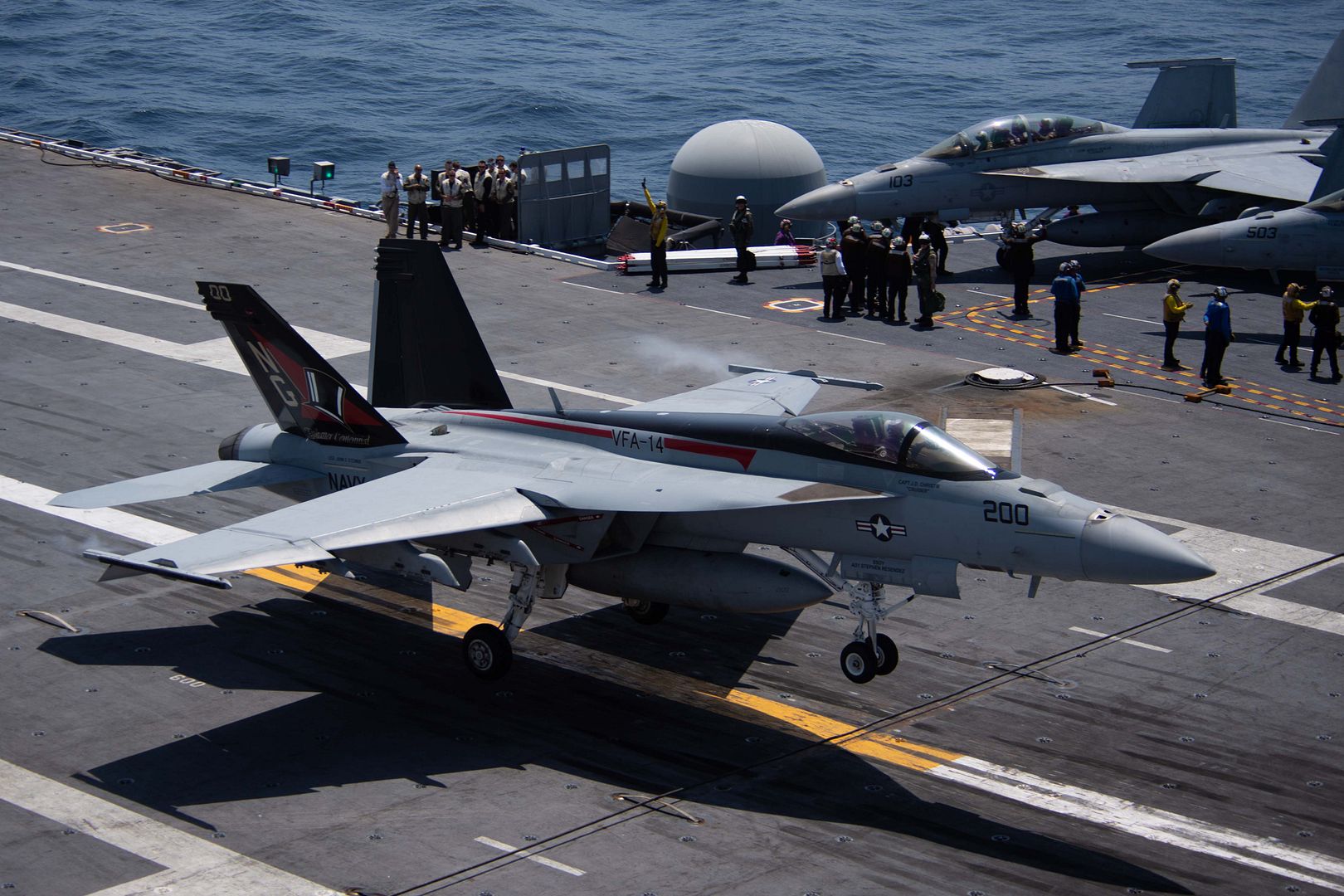
Generations apart?.but still hanging out on the runway!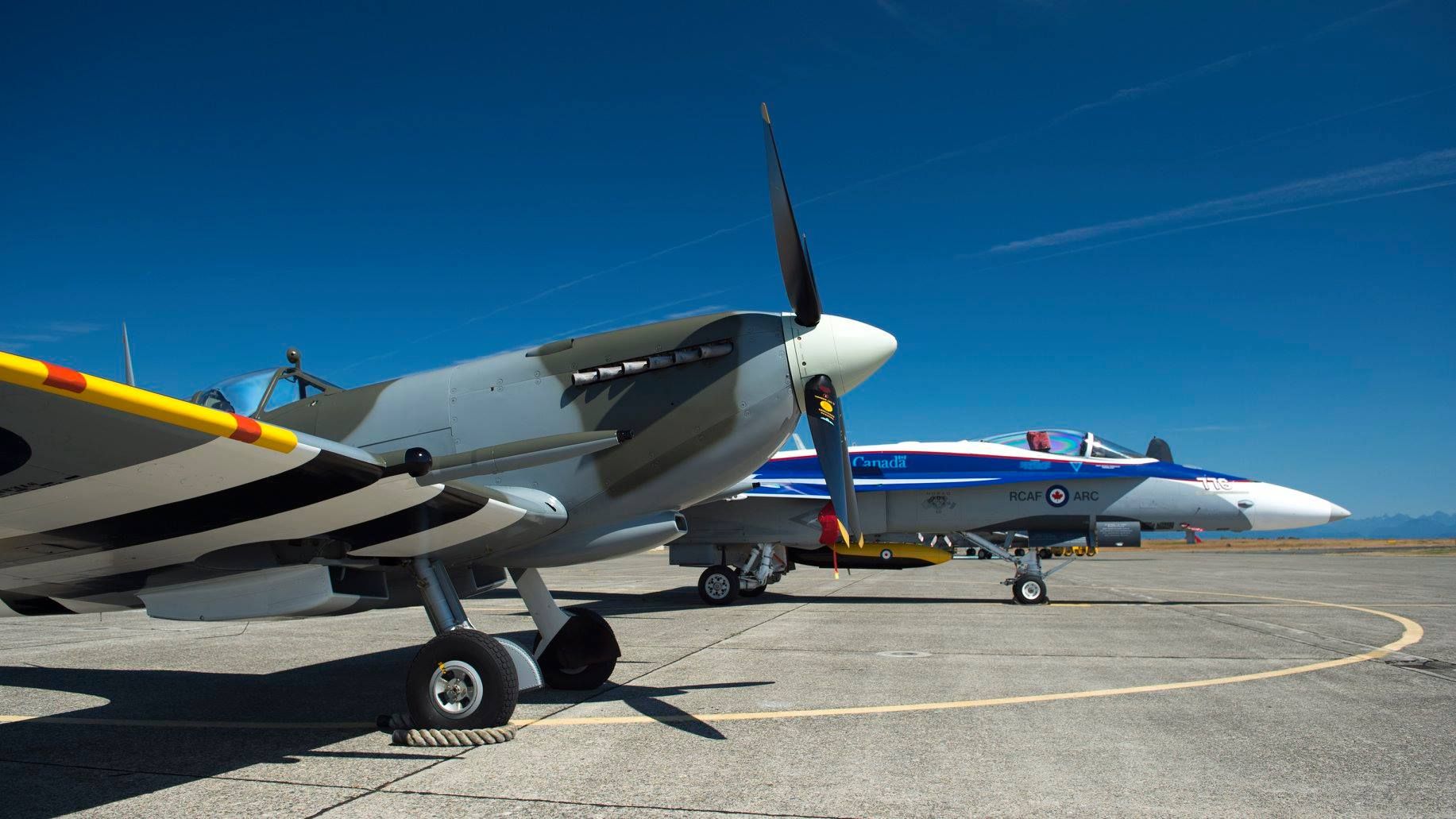
A unique photo opportunity occurred at 19 Wing Comox on 8 August when the 2018 CF-18 Demonstration Hornet and two Second World War era Spitfires were all parked on the ramp. The Spitfire with the numbers Y2K and the white nose cone began its restoration journey at Comox and came home for a gala banquet charity fundraiser honouring local WWII Ace and Spitfire pilot, retired Wing Commander James ?Stocky? Edwards.
Photo's courtesy of Master Seaman Roxanne Wood.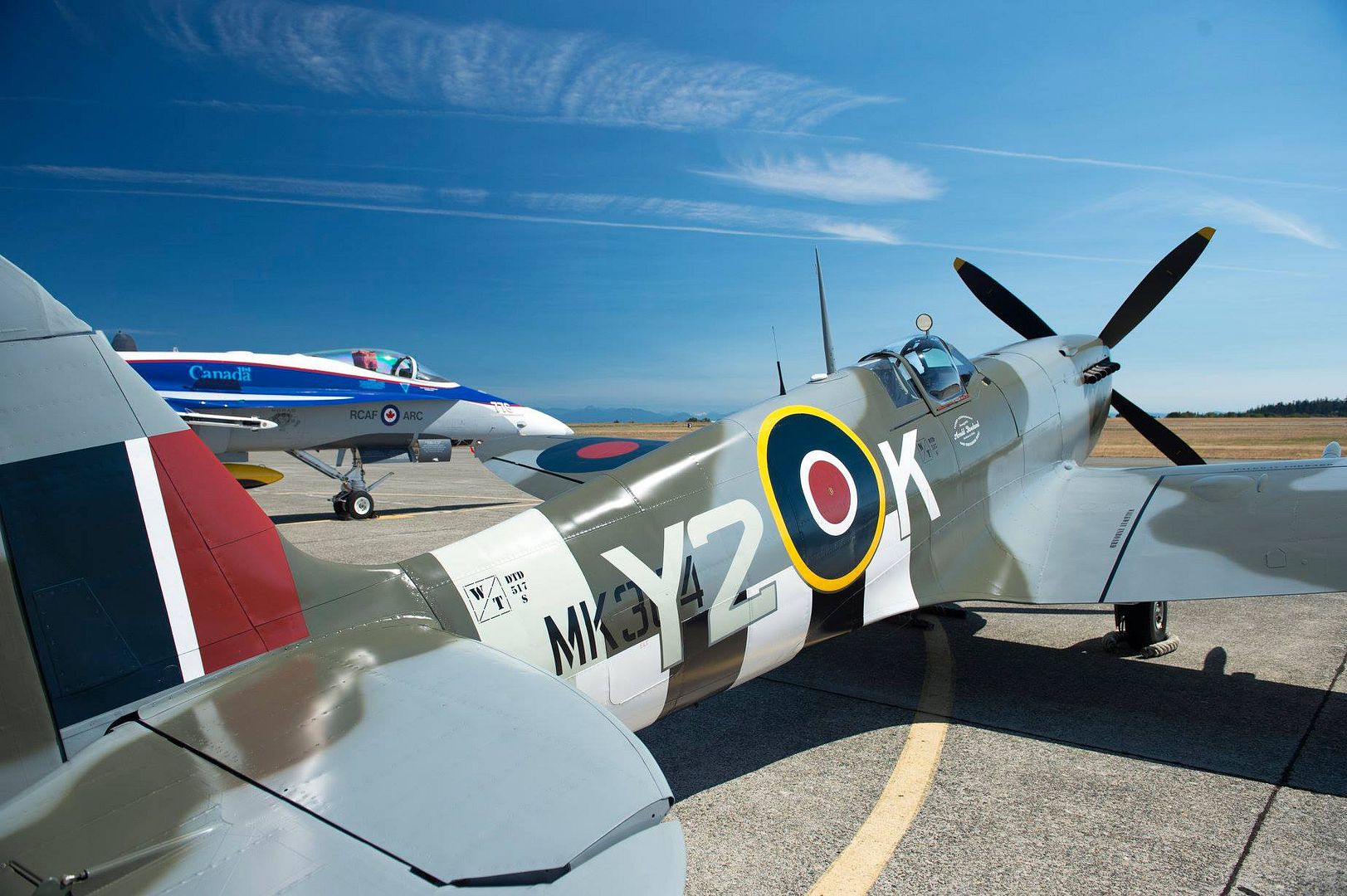
-
 Main AdminA U.S. Air Force F-16 Fighting Falcon taxis on the flight line Aug. 10, 2018, at Eielson Air Force Base, Alaska. The Honorable Heather A. Wilson, the Secretary of the Air Force, flew in the F-16 as part of an orientation flight. (U.S. Air Force photo by Airman Aaron Guerrisky)
Main AdminA U.S. Air Force F-16 Fighting Falcon taxis on the flight line Aug. 10, 2018, at Eielson Air Force Base, Alaska. The Honorable Heather A. Wilson, the Secretary of the Air Force, flew in the F-16 as part of an orientation flight. (U.S. Air Force photo by Airman Aaron Guerrisky)
A C-5M Super Galaxy is parked on the flight line Aug. 10, 2018 at Dover Air Force Base, Del. Eighteen C-5Ms are assigned to Dover AFB. (U.S. Air Force photo's by Roland Balik)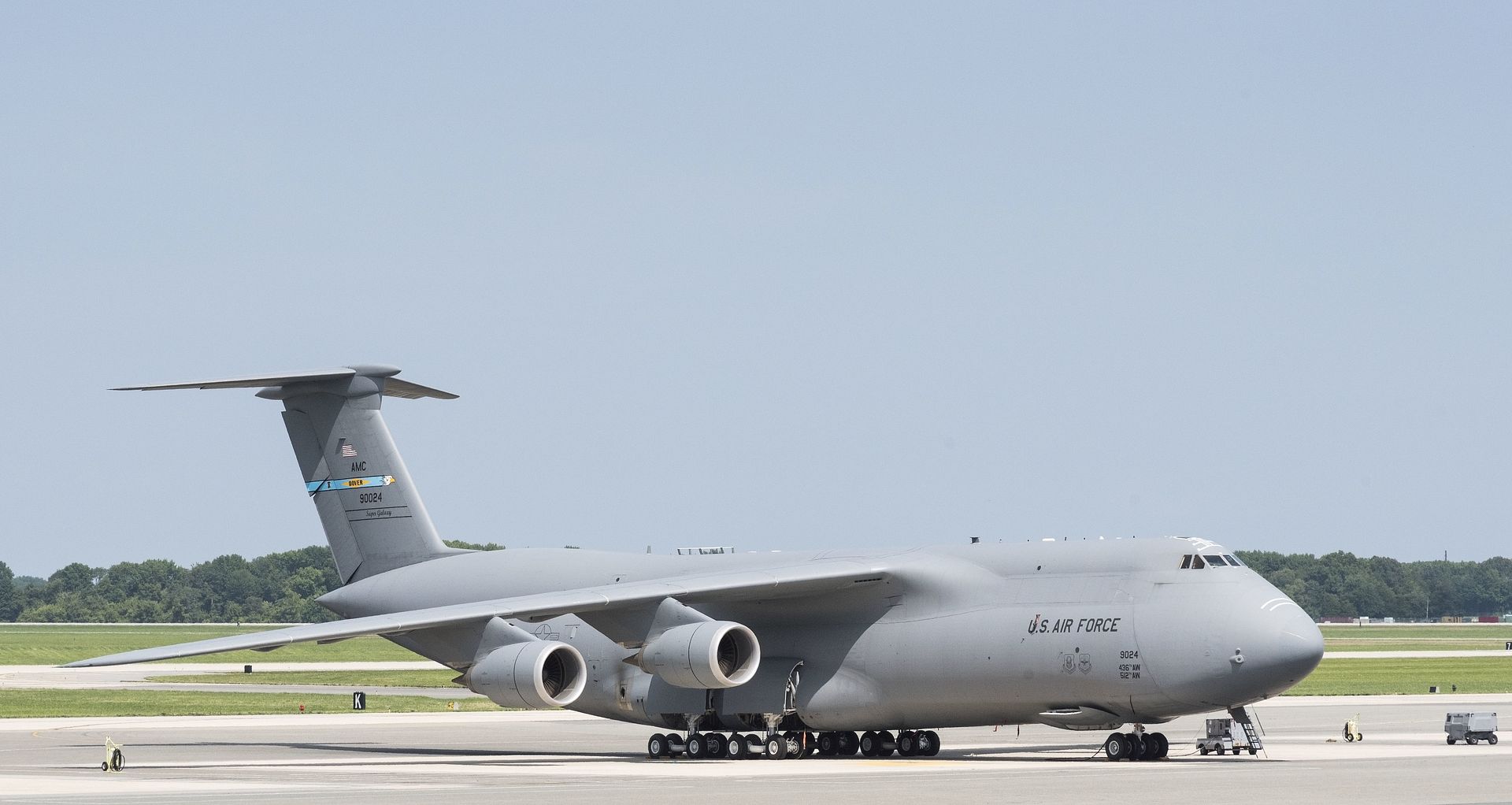
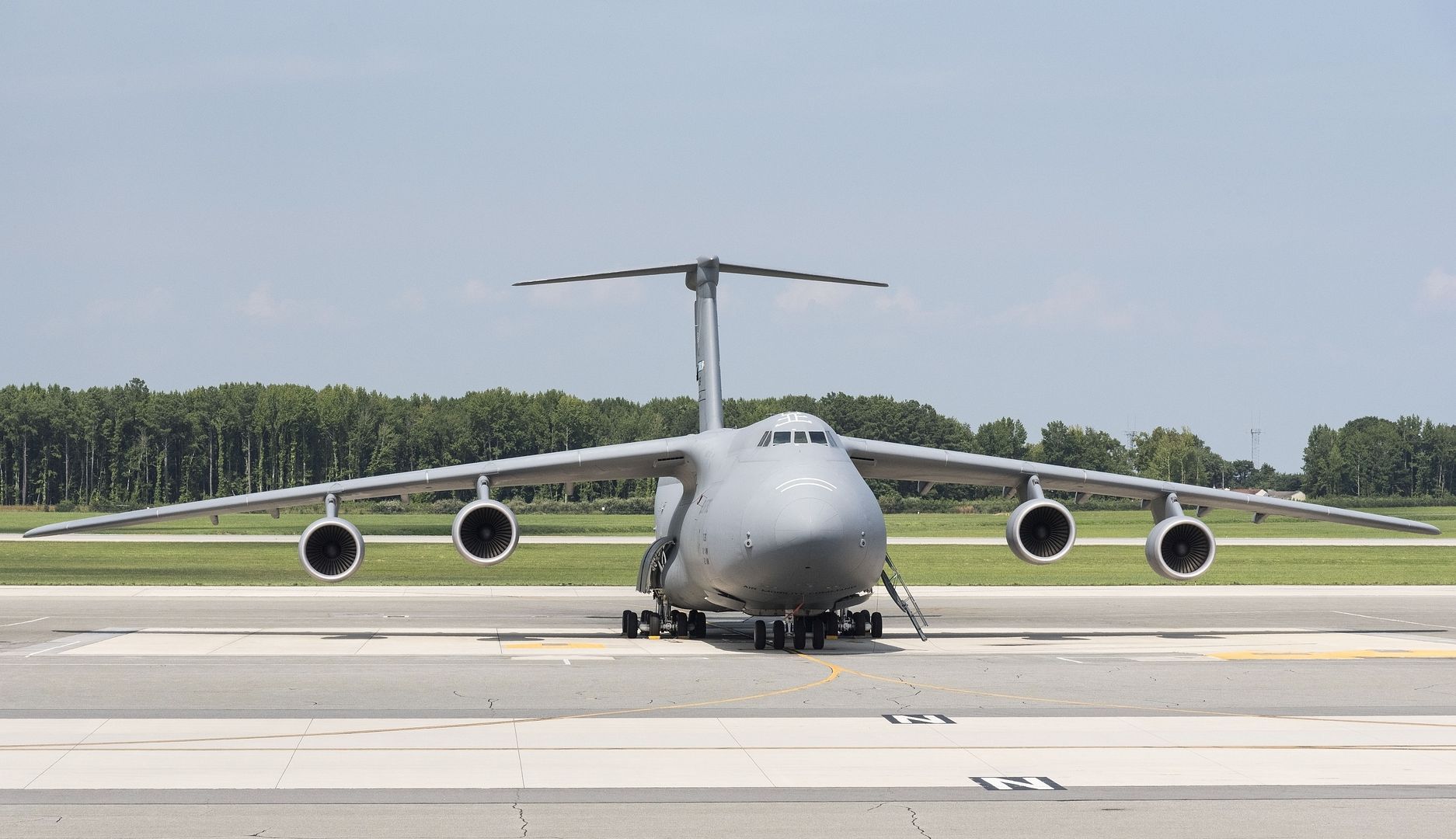
A view of the North American A-36A Apache before restoration crews at the National Museum of the U.S. Air Force moved the aircraft into the WWII Gallery on Aug. 13, 2018. Several WWII era aircraft on display were temporarily placed throughout the museum to provide adequate space for the Memphis Belle exhibit opening events. (U.S. Air Force photo's by Ken LaRock)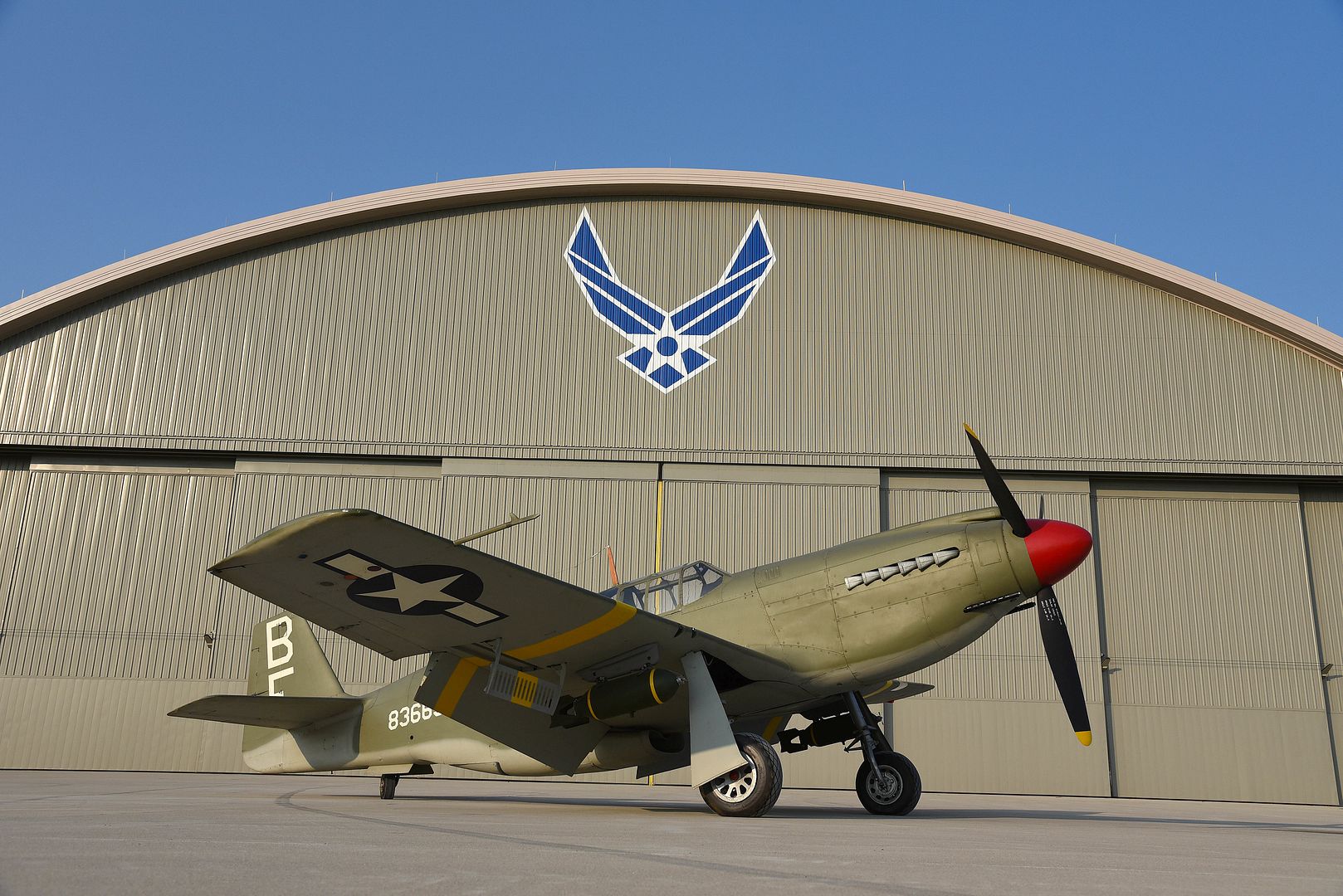
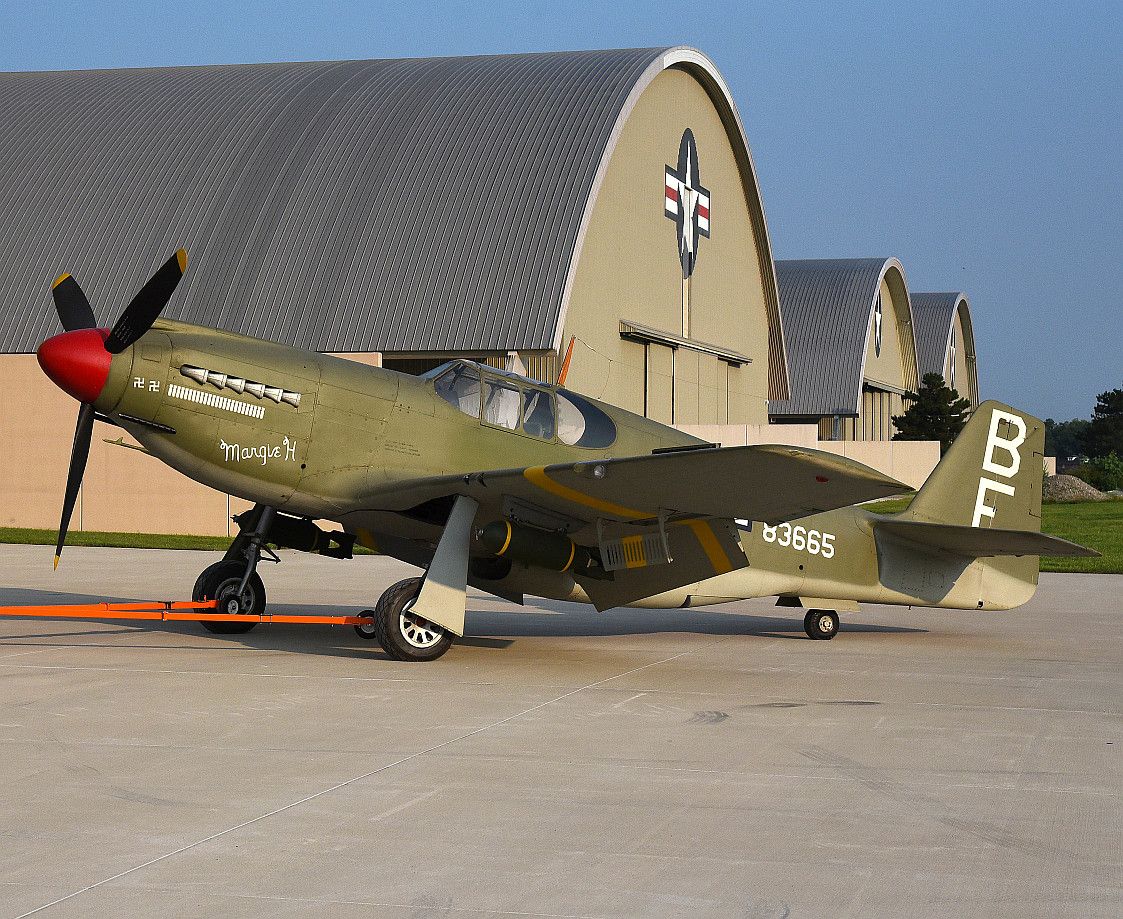
The 509th Aircraft Maintenance Squadron Airmen are the keepers of the B-2 Spirit. From landing gear to the steering system, it takes approximately one year for a member to be certified to perform maintenance on the aircraft. A full inspection of a B-2 typically takes three to four days. Every square inch of the aircraft is carefully scrutinized to ensure maximum combat readiness and a deployable force capable of projecting global firepower at a moment's notice, anytime and anywhere.
Photo by: Airman 1st Class Taylor Phifer
ATLANTIC OCEAN (Aug. 9, 2018) A T-45C Goshawk assigned to Training Air Wing 1 prepares to launch from the aircraft carrier USS George H.W. Bush (CVN 77). The ship is underway conducting routine training exercises to maintain carrier readiness. (U.S. Navy photo's by Mass Communication Specialist 2nd Class Joseph E. Montemarano/Released)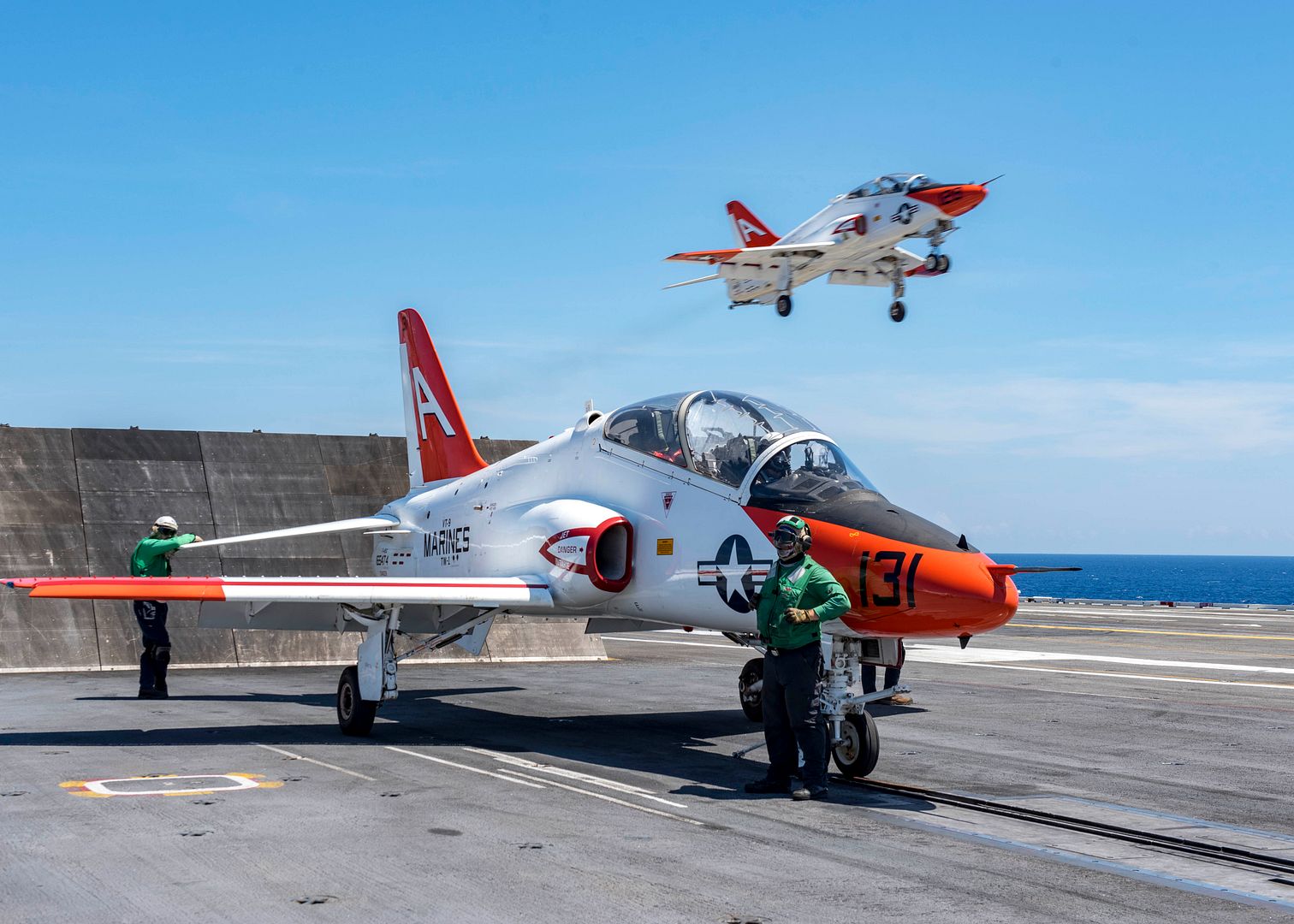

BALTIMORE ? Aug. 13, 2018 ? Northrop Grumman Corporation (NYSE: NOC) has successfully installed a production APG-83 Scalable Agile Beam Radar (SABR) on a U.S. Marine Corps F/A-18C Hornet at Marine Corps Air Station Miramar, California.
The fit check, performed August 2 at the request of the Marine Corps, demonstrated SABR is a low-risk option for installation on F/A-18C/D Hornets and that the radar can be integrated with the aircraft?s power, cooling and avionics systems.
?The Marine Corps asked for an Active Electronically Scanned Array (AESA) solution due to the radar?s increase in reliability and sustainability with no decrease in operational performance,? said Greg Simer, vice president, integrated avionics systems, Northrop Grumman. ?The Marine Corps? stated objective is to modify an in-production, fielded AESA while meeting the current size, weight, power and cooling requirements of the F/A-18 C/D. We have proven our production APG-83 SABR radar fits into the F/A-18 C/D, achieving the objectives and bringing the technical maturity needed to attain the Marine Corps fleet insertion timelines.?
The APG-83 is a multifunction AESA fire control radar that delivers fifth-generation fighter capabilities to counter and defeat increasingly sophisticated threats.
Northrop Grumman is competing to replace the mechanically-scanned radar on F/A-18C/Ds with an AESA radar. The Marine Corps plans to upgrade the radar on approximately 100 F/A-18C/Ds. The APG-83 will address survivability, reliability and maintainability concerns for the U.S. Marine Corps.
August 13, 2018 Montr?al Commercial Aircraft, Press Release
Bombardier Commercial Aircraft announced today that the company successfully placed three pre-owned Q400 turboprops with PassionAir from the Republic of Ghana. The airline acquired the aircraft through a dry-lease with a third party.
?Bombardier has sold about 3,500 new regional aircraft to date, and we continue to be very active on the used aircraft market.? said David Speirs, Vice President, Asset Management, Bombardier Commercial Aircraft. ?Our recent momentum on the pre-owned aircraft market worldwide is a clear indication that our products are addressing a growing need for regional air transportation, especially in emerging markets.?
?Our market penetration in Africa continues to intensify, and we are pleased to welcome Passion Air as the first commercial airline operating a Bombardier regional aircraft in the Republic of Ghana,? said Jean-Paul Boutibou, Vice President, Sales, Middle East and Africa, Bombardier Commercial Aircraft. ?Africa is the youngest and fastest growing region in the world, and regional aircraft like the Q400 will play a key role in helping advancing Africa?s economic growth.?
The airline will operate the three Q400 aircraft in a 78-seat configuration on domestic routes.
?This is a first step, and we look forward to expanding our fleet with more Bombardier aircraft,? said Edward Annan, Chief Executive Officer, PassionAir. ?The Q400 offers the performance and flexibility that we need to further develop our network. With a range that unlocks great opportunities for us, we are confident that we will capitalize on a larger market, which extends to 12 countries and over 180 million potential passengers out of Accra.?
About PassionAir
PassionAir is a Ghanaian owned airline, and aims to become the most competitive Aviation Service Provider in Ghana and West Africa. Our focus is on safety and excellent customer service delivery, depicting the proverbial Ghanaian hospitality. Our product lines range from scheduled to chartered flights offered at internationally accepted standards and competitive prices.
PassionAir as start off, will operate flights domestically, with plans of expanding our services to the West African sub-region in the medium term.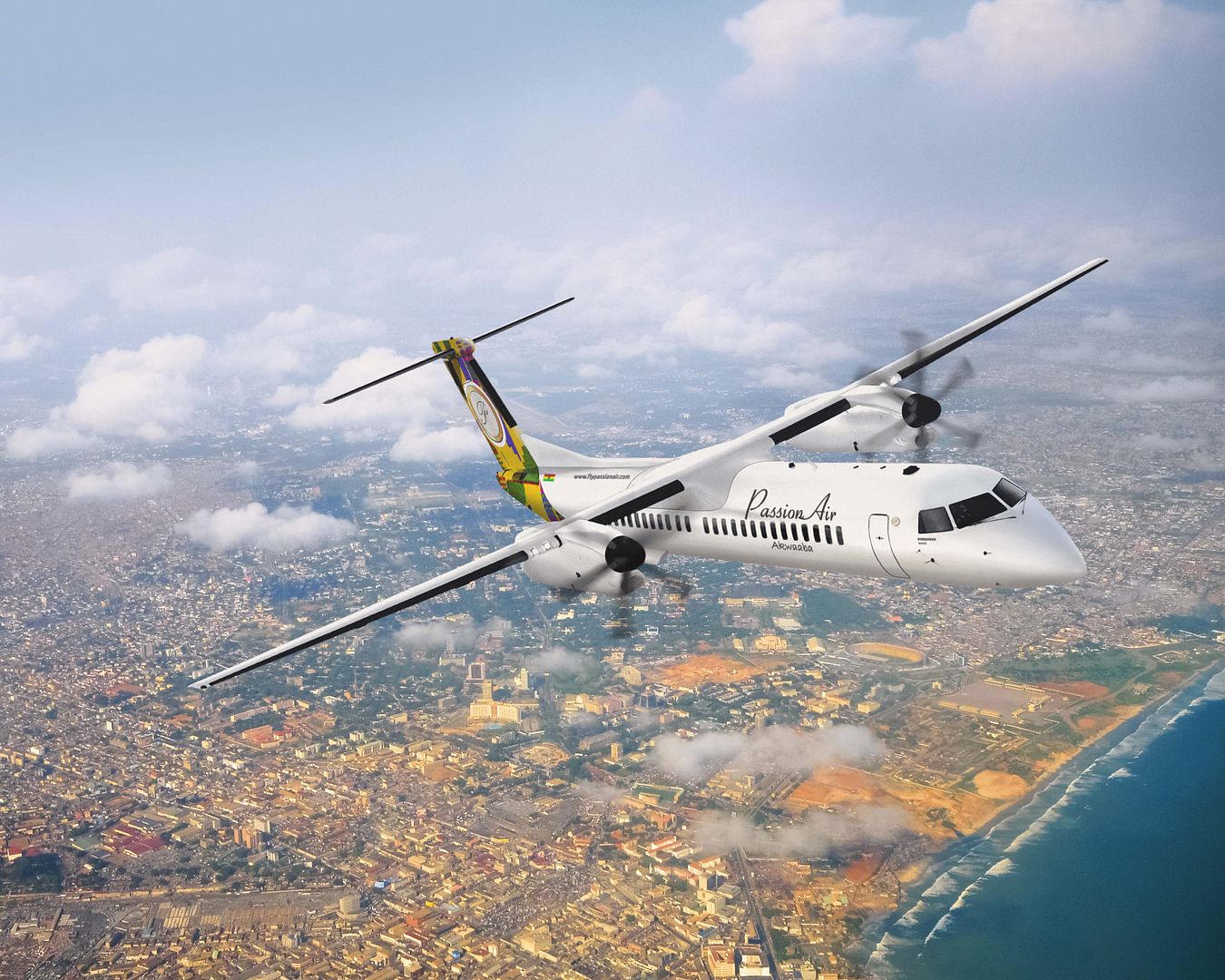
-
 Main AdminMarines with Marine Attack Squadron (VMA) 311 perform post-flight maintenance checks on AV-8B Harrier IIs during Exercise Northern Lightning at Volk Field Counterland Training Center, Camp Douglas, Wis., Aug. 13. Exercise Northern Lightning 2018 allows the Air Force, Marine Corps and Navy to strengthen interoperability between services and gives the different branches a greater understanding of aviation capabilities within a joint fighting force. (U.S. Marine Corps photo's by Sgt. David Bickel)
Main AdminMarines with Marine Attack Squadron (VMA) 311 perform post-flight maintenance checks on AV-8B Harrier IIs during Exercise Northern Lightning at Volk Field Counterland Training Center, Camp Douglas, Wis., Aug. 13. Exercise Northern Lightning 2018 allows the Air Force, Marine Corps and Navy to strengthen interoperability between services and gives the different branches a greater understanding of aviation capabilities within a joint fighting force. (U.S. Marine Corps photo's by Sgt. David Bickel)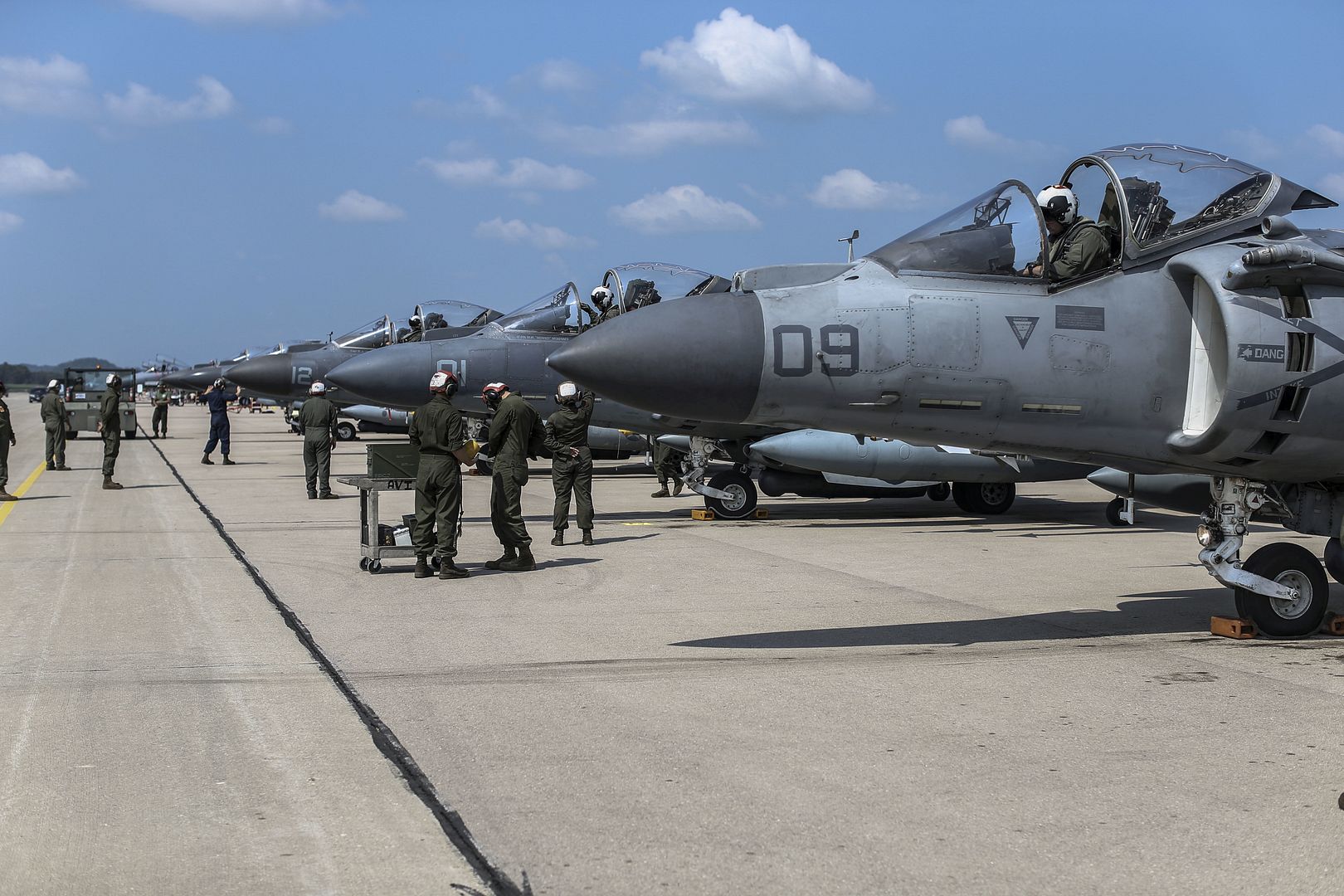
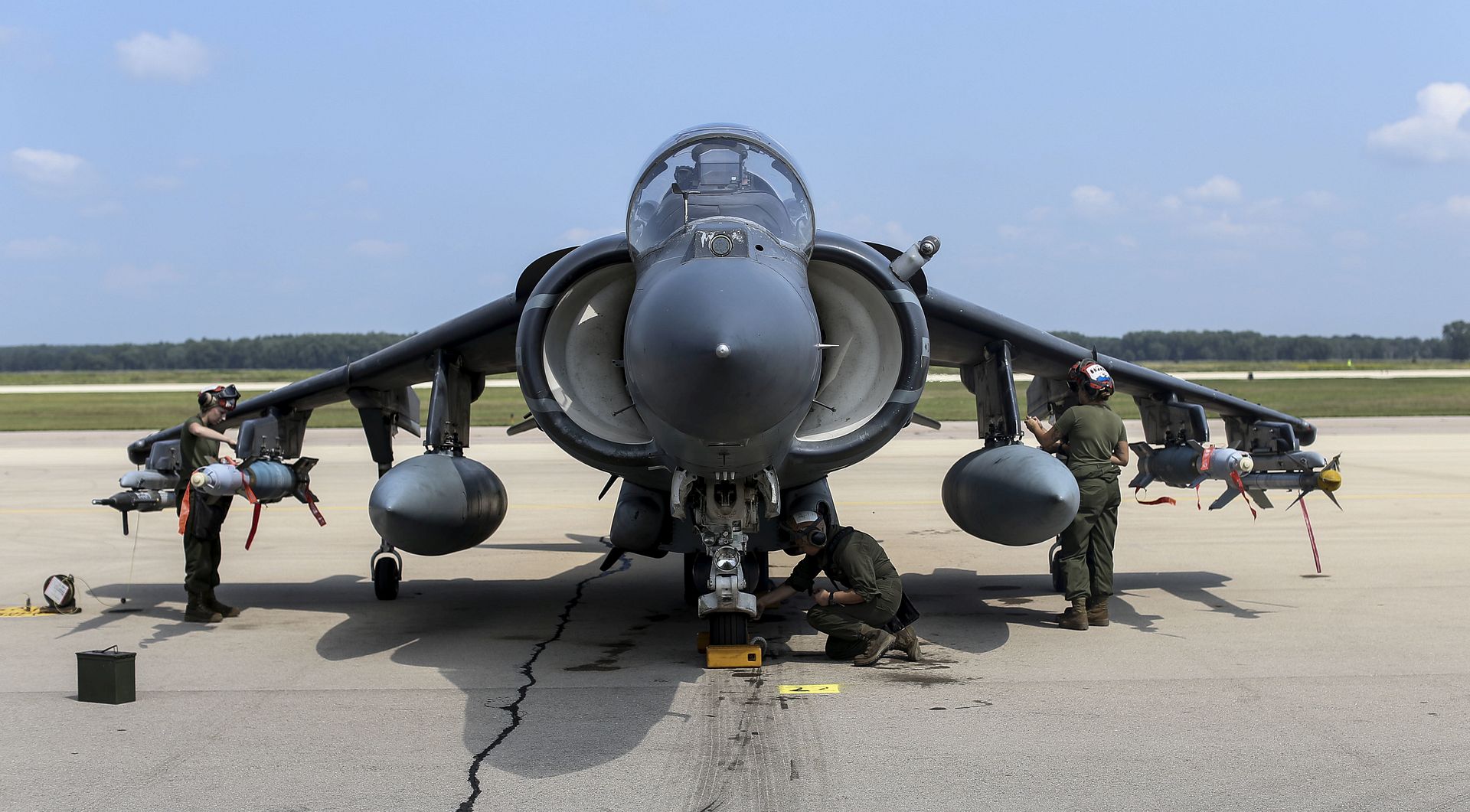
U.S. 5TH FLEET AREA OF OPERATIONS (Aug. 13, 2018) Boatswain?s Mate 2nd Class Archangel Smiley signals an MH-60R Sea Hawk helicopter, assigned to the ?Vipers? of Helicopter Maritime Strike Squadron (HSM) 48, to shut down after completing the day?s flight operations aboard the guided-missile destroyer USS Jason Dunham (DDG 109). Jason Dunham is deployed to the U.S. 5th Fleet area of operations in support of naval operations to ensure maritime stability and security in the Central Region, connecting the Mediterranean and the Pacific through the western Indian Ocean and three strategic choke points. (U.S. Navy photo by Mass Communication Specialist 3rd Class Jonathan Clay/Released)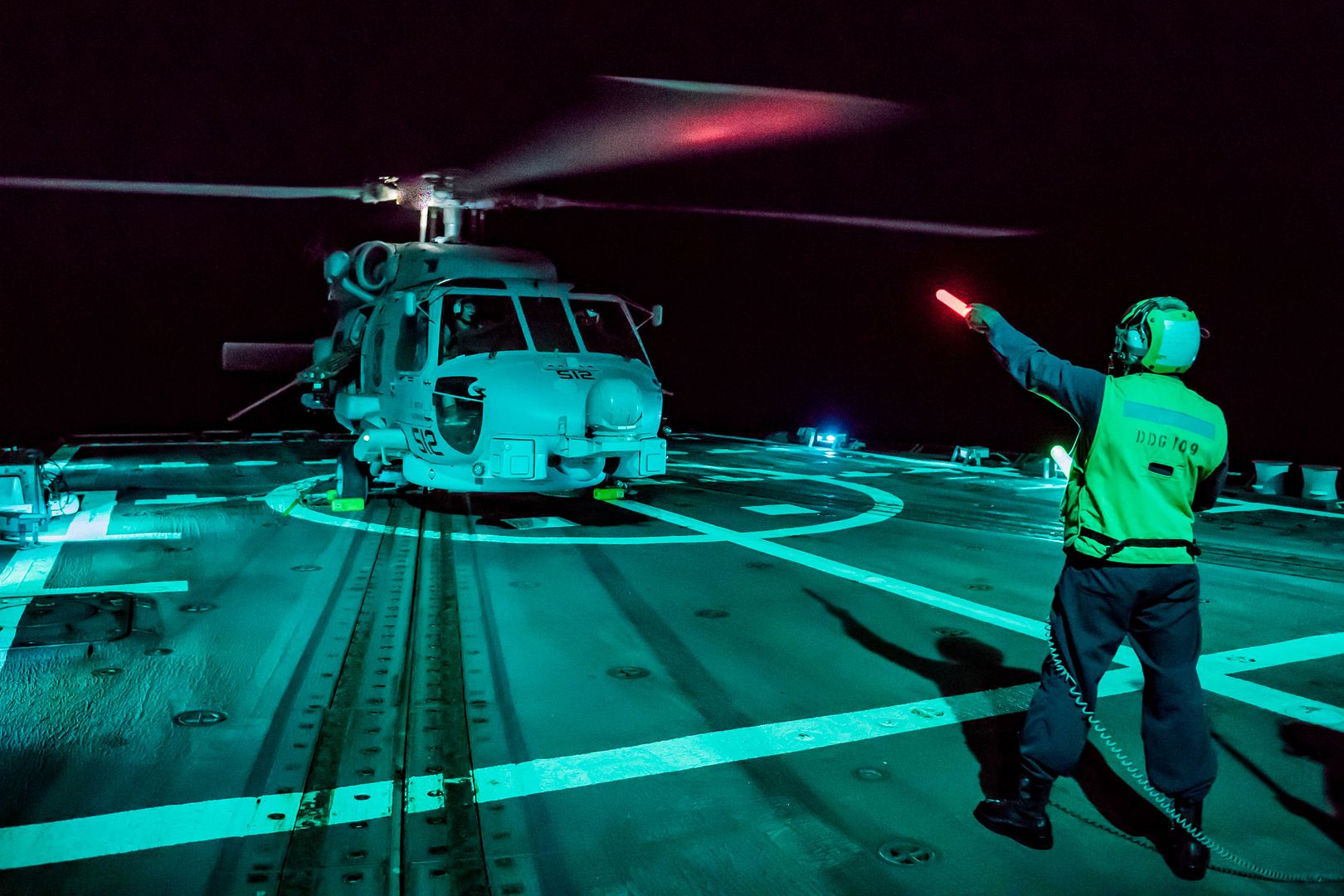
A U.S. Air Force F-16 Fighting Falcon returns to its objective after receiving fuel from a KC-135 Stratotanker during a mission in support of Operation Inherent Resolve over Iraq, Aug. 11, 2018. In conjunction with partner forces, Combined Joint Task Force - Operation Inherent Resolve defeats ISIS in designated areas of Iraq and Syria and sets conditions for follow-on operations to increase regional stability. (U.S. Air Force photo's by Master Sgt. Burt Traynor)
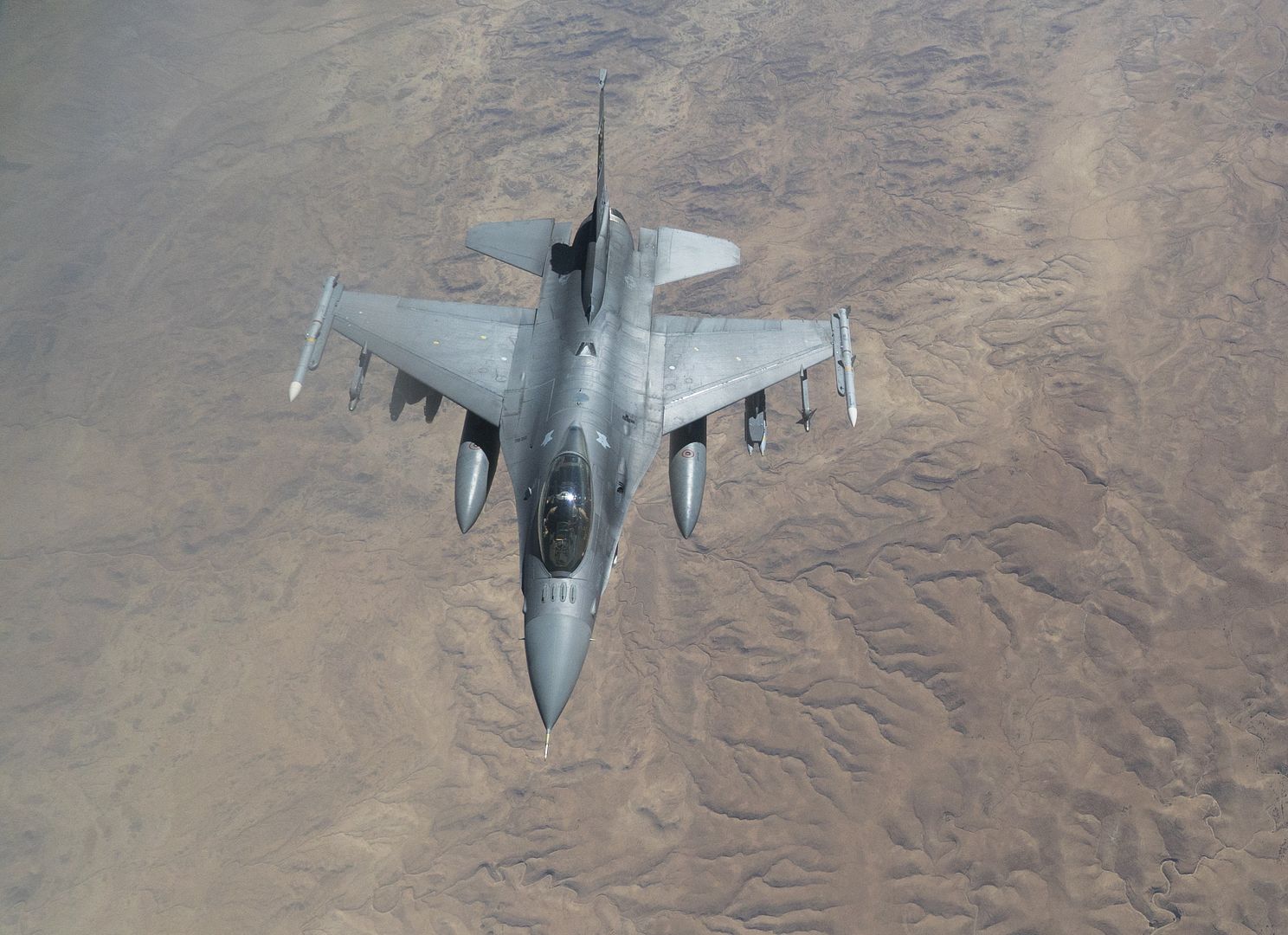
-
 Main AdminAn aviation ordnance Marine with Marine Fighter Attack Squadron (VMA) 311 aviation ordnance Marine observes a F/A-18 hornet takeoff during Exercise Northern Lightning at Volk Field Counterland Training Center, Camp Douglas, Wis. Aug. 14. Exercise Northern Lightning 2018 allows the Air Force, Marine Corps and Navy to strengthen interoperability between services and gives the different branches a greater understanding of aviation capabilities within a joint fighting force. (U.S. Marine Corps photo by Sgt. David Bickel)
Main AdminAn aviation ordnance Marine with Marine Fighter Attack Squadron (VMA) 311 aviation ordnance Marine observes a F/A-18 hornet takeoff during Exercise Northern Lightning at Volk Field Counterland Training Center, Camp Douglas, Wis. Aug. 14. Exercise Northern Lightning 2018 allows the Air Force, Marine Corps and Navy to strengthen interoperability between services and gives the different branches a greater understanding of aviation capabilities within a joint fighting force. (U.S. Marine Corps photo by Sgt. David Bickel)
Marines with Marine Fighter Attack Squadron (VMFA) 122 prepare an F-35 Lightning II for takeoff during Exercise Northern Lightning at Volk Field Counterland Training Center, Camp Douglas, Wis. Aug. 14. Exercise Northern Lightning 2018 allows the Air Force, Marine Corps and Navy to strengthen interoperability between services and gives the different branches a greater understanding of aviation capabilities within a joint fighting force. (U.S. Marine Corps photo by Sgt. David Bickel)
WATERS SOUTH OF JAPAN (August 15, 2018) An E-2D Hawkeye, assigned to Airborne Early Warning Squadron (VAW) 125, lands on the flight deck of the Navy?s forward-deployed aircraft carrier, USS Ronald Reagan (CVN 76). Ronald Reagan, the flagship of Carrier Strike Group 5, provides a combat-ready force that protects and defends the collective maritime interests of its allies and partners in the Indo-Pacific region. (U.S. Navy photo by Mass Communication Specialist 2nd Class Kenneth Abbate)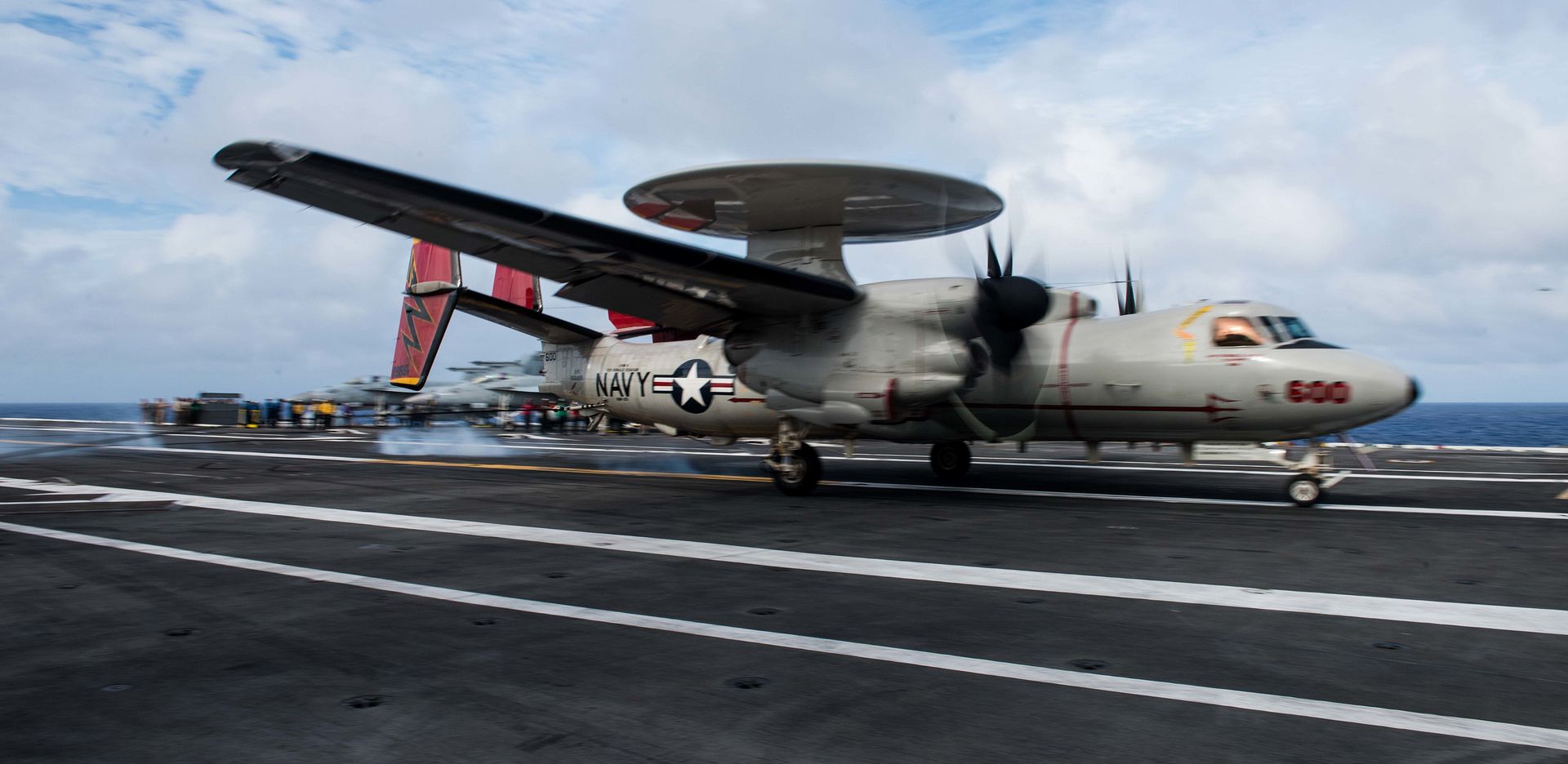
WATERS SOUTH OF JAPAN (August 15, 2018) An F/A-18E Super Hornet, assigned to Strike Fighter Squadron (VFA) 195, lands on the flight deck of the Navy?s forward-deployed aircraft carrier, USS Ronald Reagan (CVN 76). Ronald Reagan, the flagship of Carrier Strike Group 5, provides a combat-ready force that protects and defends the collective maritime interests of its allies and partners in the Indo-Pacific region. (U.S. Navy photo by Mass Communication Specialist 2nd Class Kenneth Abbate)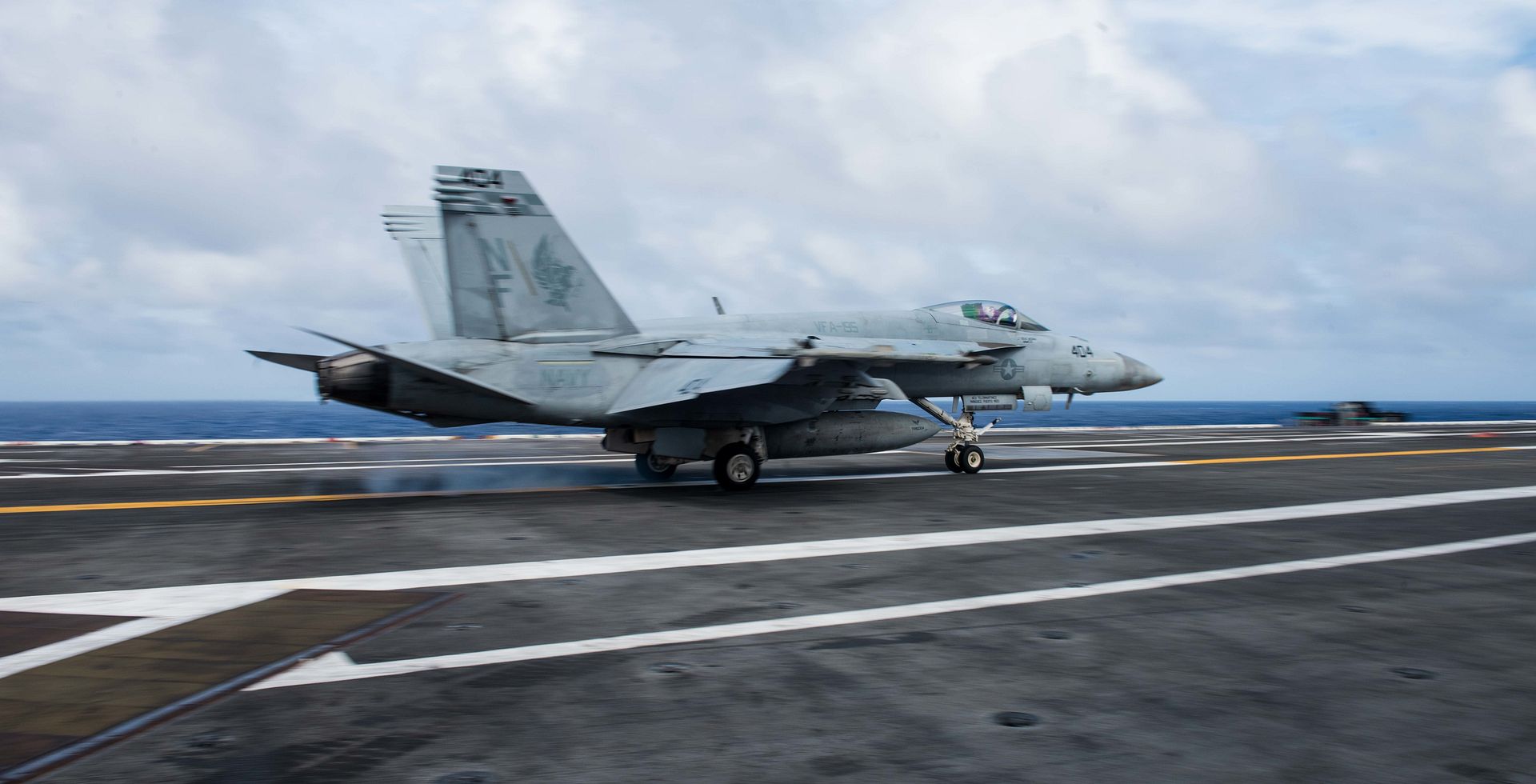
The early morning sunrise highlights a C-130J Super Hercules assigned to the 36th Airlift Squadron at Yokota Air Base, Japan, Aug. 15, 2018. A reddish sky around sunrise means a lot of water vapor already present in the atmosphere. (U.S. Air Force photo by Yasuo Osakabe)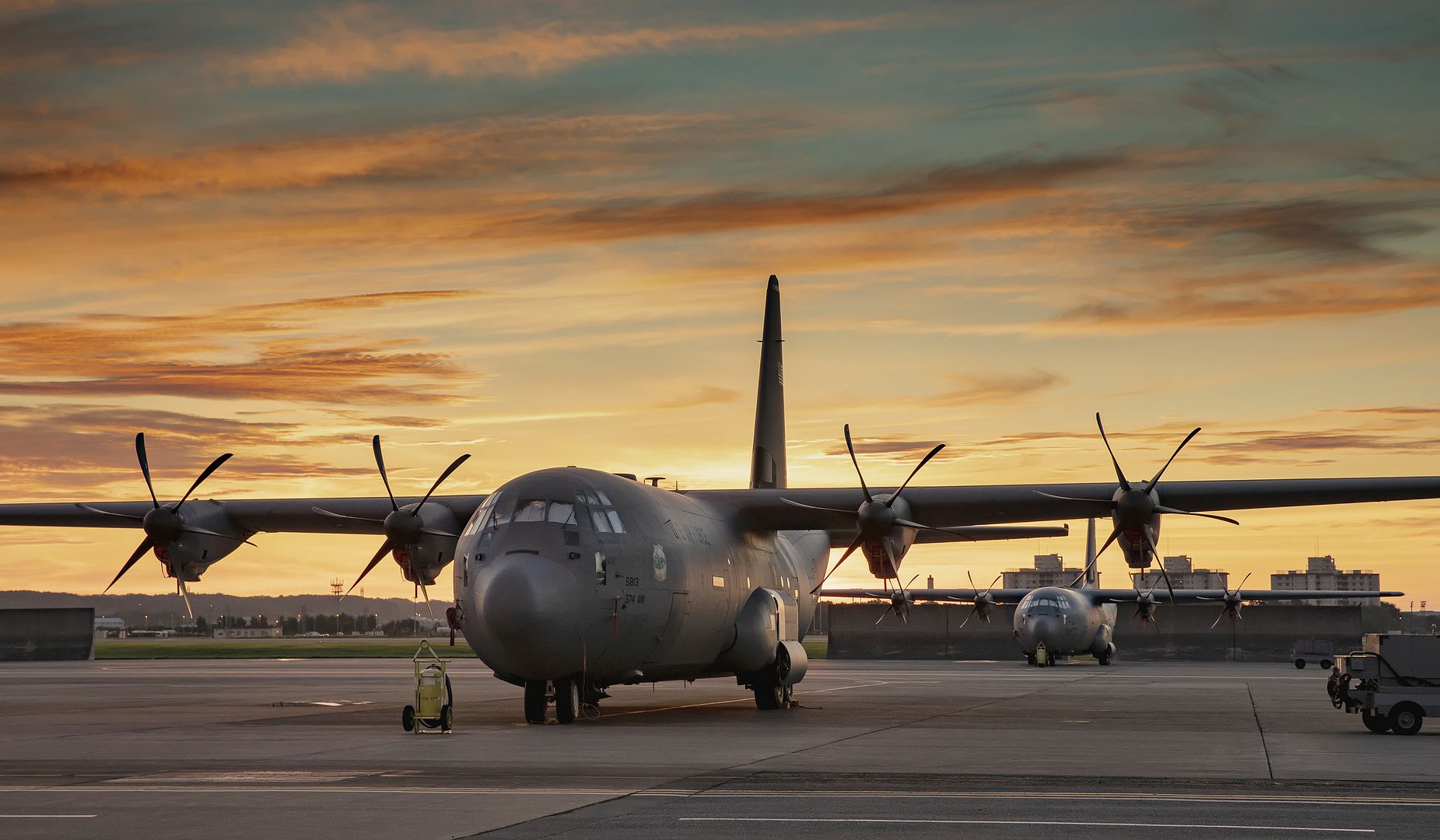
A view of the North American P-51D Mustang before restoration crews at the National Museum of the U.S. Air Force moved the aircraft into the WWII Gallery on Aug. 14, 2018. Several WWII era aircraft on display were temporarily placed throughout the museum to provide adequate space for the Memphis Belle exhibit opening events. (U.S. Air Force photo by Ken LaRock)
A view of the Republic P-47D (Bubble Canopy Version) before restoration crews at the National Museum of the U.S. Air Force moved the aircraft into the WWII Gallery on Aug. 14, 2018. Several WWII era aircraft on display were temporarily placed throughout the museum to provide adequate space for the Memphis Belle exhibit opening events. (U.S. Air Force photo by Ken LaRock)
Two F-22 Raptors from the 95th Fighter Squadron, 325th Fighter Wing, Tyndall Air Force Base, Fla., fly in formation and conduct training operations with two Royal Norwegian air force F-35A Lightning II aircraft during an air refueling over Norway, Aug. 15, 2018. The F-22s deployed to Spangdahlem Air Base, Germany on Aug. 8 and will remain in Europe for several weeks to train and forward deploy to NATO nations. (U.S. Air Force photo by Senior Airman Preston Cherry)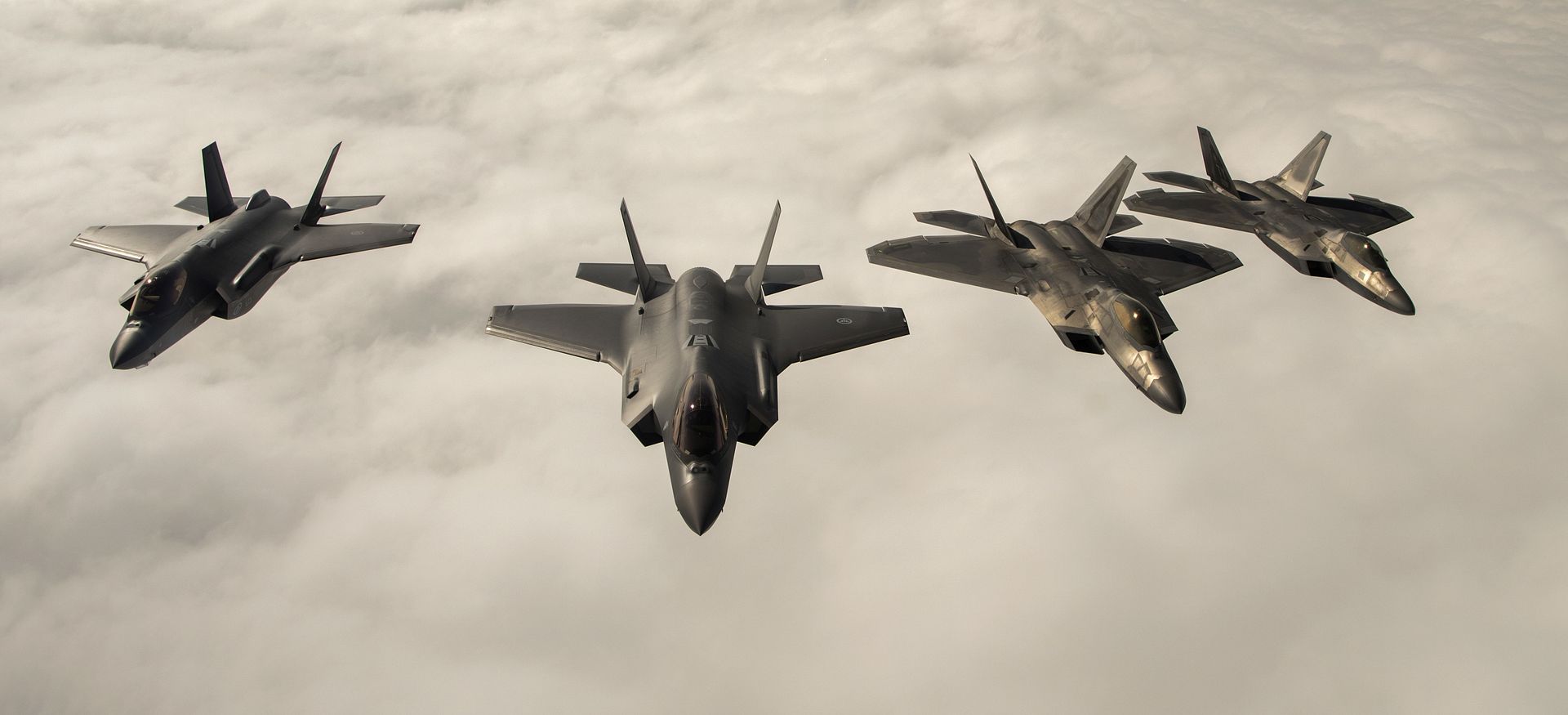
A U.S. Air Force F-22 Raptor from the 95th Fighter Squadron, 325th Fighter Wing, Tyndall Air Force Base, Fla., receives fuel from a U.S Air Force Boeing KC-135 Stratotanker assigned to the 100th Air Refueling Wing, Royal Air Force Mildenhall, England, above Norway, Aug. 15, 2018. The F-22s practiced refueling and trained with Royal Norwegian air force F-35A Lightning II aircraft during a forward deployment to Orland Air Base, Norway. (U.S. Air Force photo by Senior Airman Preston Cherry)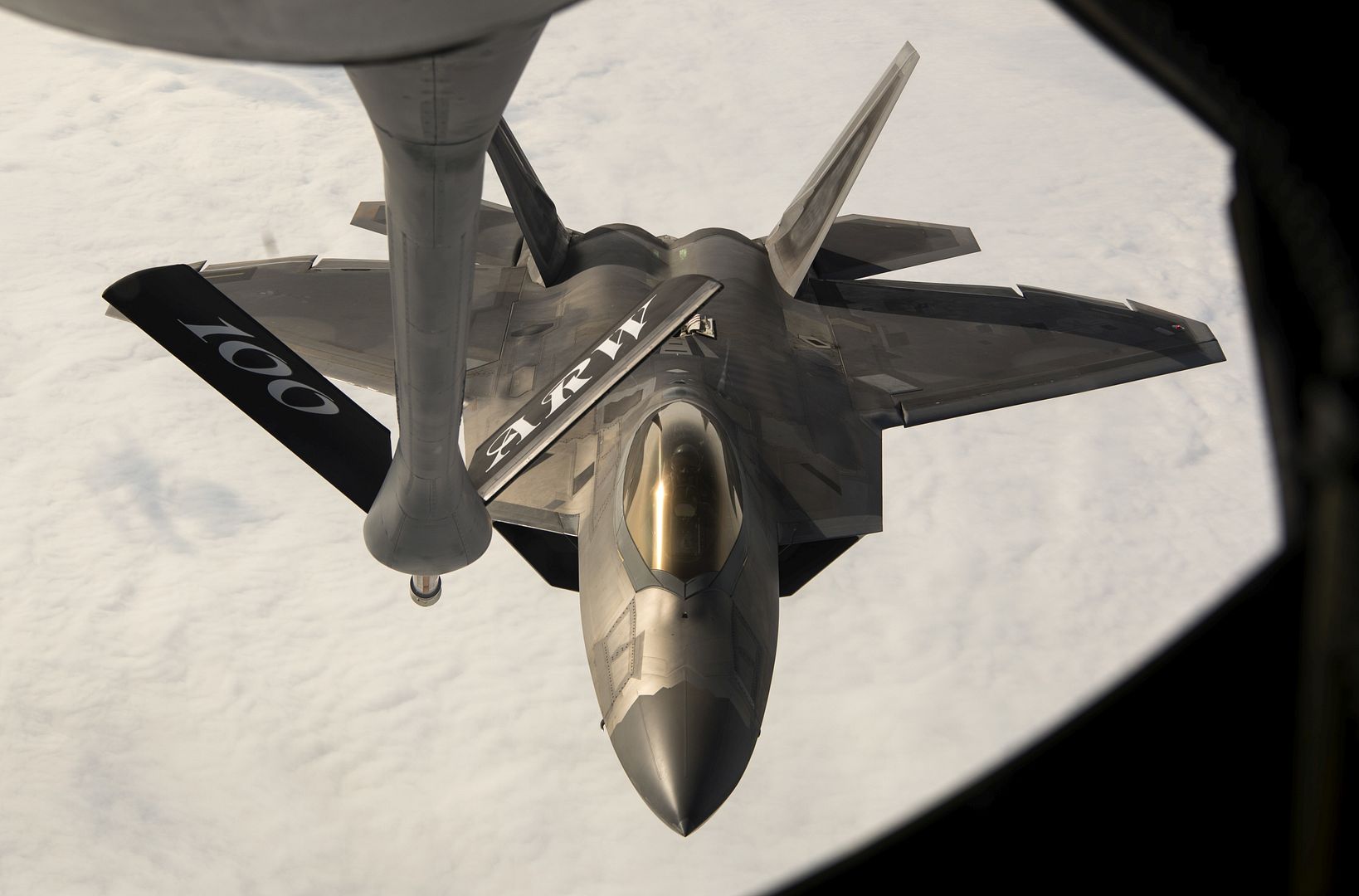
-
 Main AdminSoldiers of the 1st Battalion, 507th Parachute Infantry Regiment at Fort Benning, Georgia, the Liberty Jump Team and Veterans Association, honor the first jump of the test platoon on National Airborne Day, August 16, 2018 at Fort Benning, Georgia. National Airborne Day commemorates the first jump conducted by the Airborne Test Platoon onto Cactus DZ on 16 August 1940 and pays homage to the brave men who tested the Airborne concept. The Liberty Jump Team, supported by the 1-507th executed an Airborne Operation onto Fryar DZ, out of the storied C-47 ?Skytrain? to honor our proud history and storied tradition. (Photos by Patrick A. Albright, MCoE PAO Photographer)
Main AdminSoldiers of the 1st Battalion, 507th Parachute Infantry Regiment at Fort Benning, Georgia, the Liberty Jump Team and Veterans Association, honor the first jump of the test platoon on National Airborne Day, August 16, 2018 at Fort Benning, Georgia. National Airborne Day commemorates the first jump conducted by the Airborne Test Platoon onto Cactus DZ on 16 August 1940 and pays homage to the brave men who tested the Airborne concept. The Liberty Jump Team, supported by the 1-507th executed an Airborne Operation onto Fryar DZ, out of the storied C-47 ?Skytrain? to honor our proud history and storied tradition. (Photos by Patrick A. Albright, MCoE PAO Photographer)

U.S. Air Force B-2 Spirits, deployed from Whiteman Air Force Base, Missouri, land at Joint Base Pearl Harbor-Hickam, Hawaii, Aug. 15, 2018. B-2s regularly rotate through the Indo-Pacific to conduct routine air operations, which integrate capabilities with key regional partners and demonstrate U.S. commitment to peace and stability in the region. These operations are in support of the U.S. Strategic Command?s Bomber Task Force deployment. (U.S. Air Force photo by Staff Sgt. Danielle Quilla)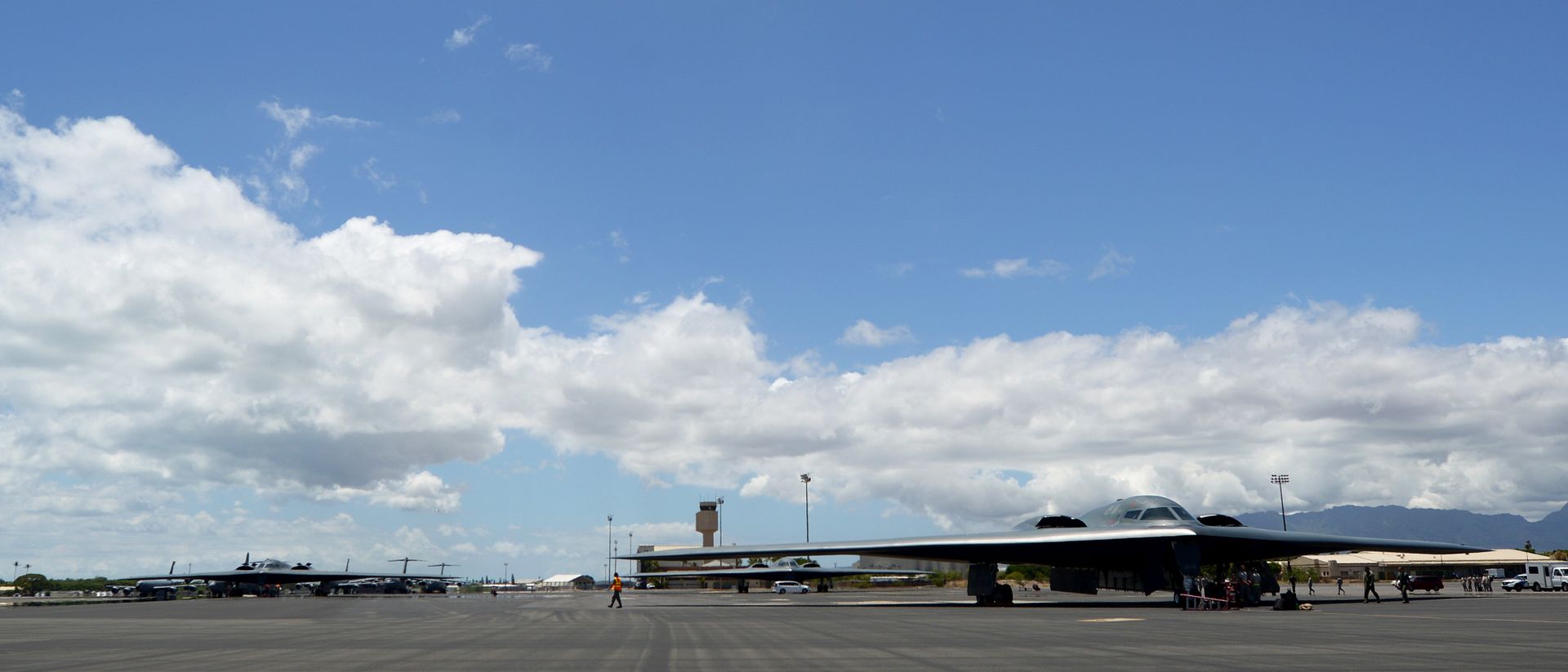
An F-22 Raptor from the 95th Fighter Squadron, 325th Fighter Wing, Tyndall Air Force Base, Fla., participate in a multi-aircraft flyover in Warsaw, Poland during the 100th Anniversary of Polish Independence and Armed Forces Day. The F-22s forward deployed from Spangdahlem Air Base Germany, to Powidz Air Base, Poland on Aug. 14 for theater familiarization and to conduct interoperability with Polish and NATO aircraft. (U.S. Air Force photo by Senior Airman Joshua Magbanua)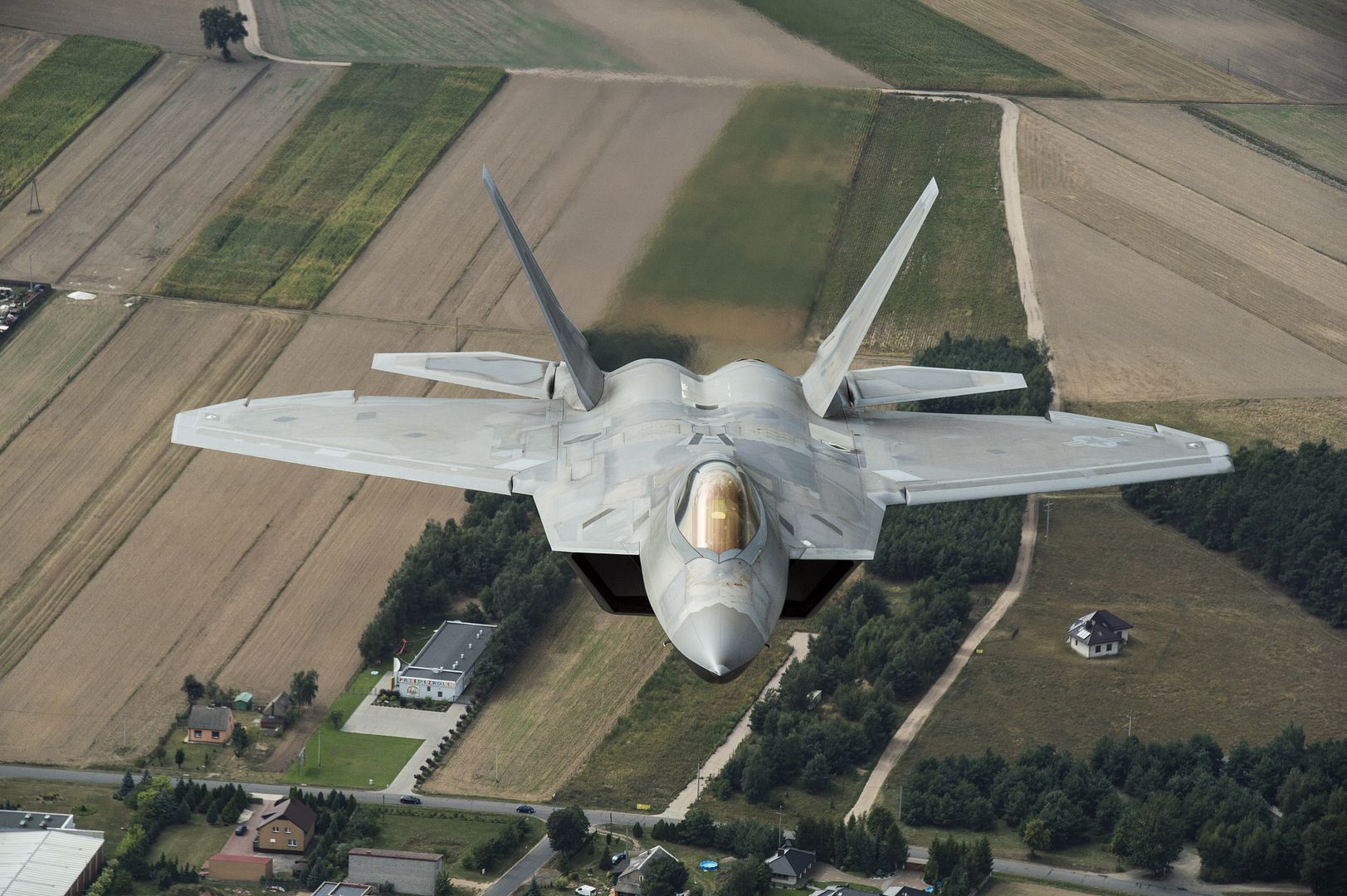
Four F-22 Raptors from the 95th Fighter Squadron, 325th Fighter Wing, Tyndall Air Force Base, Fla., participating in a multi-aircraft flyover in Warsaw, Poland during the 100th Anniversary of Polish Independence and Armed Forces Day. The F-22s forward deployed from Spangdahlem Air Base Germany, to Powidz Air Base, Poland on Aug. 14 for theater familiarization and to conduct interoperability with Polish and NATO aircraft. (U.S. Air Force photo by Senior Airman Joshua Magbanua)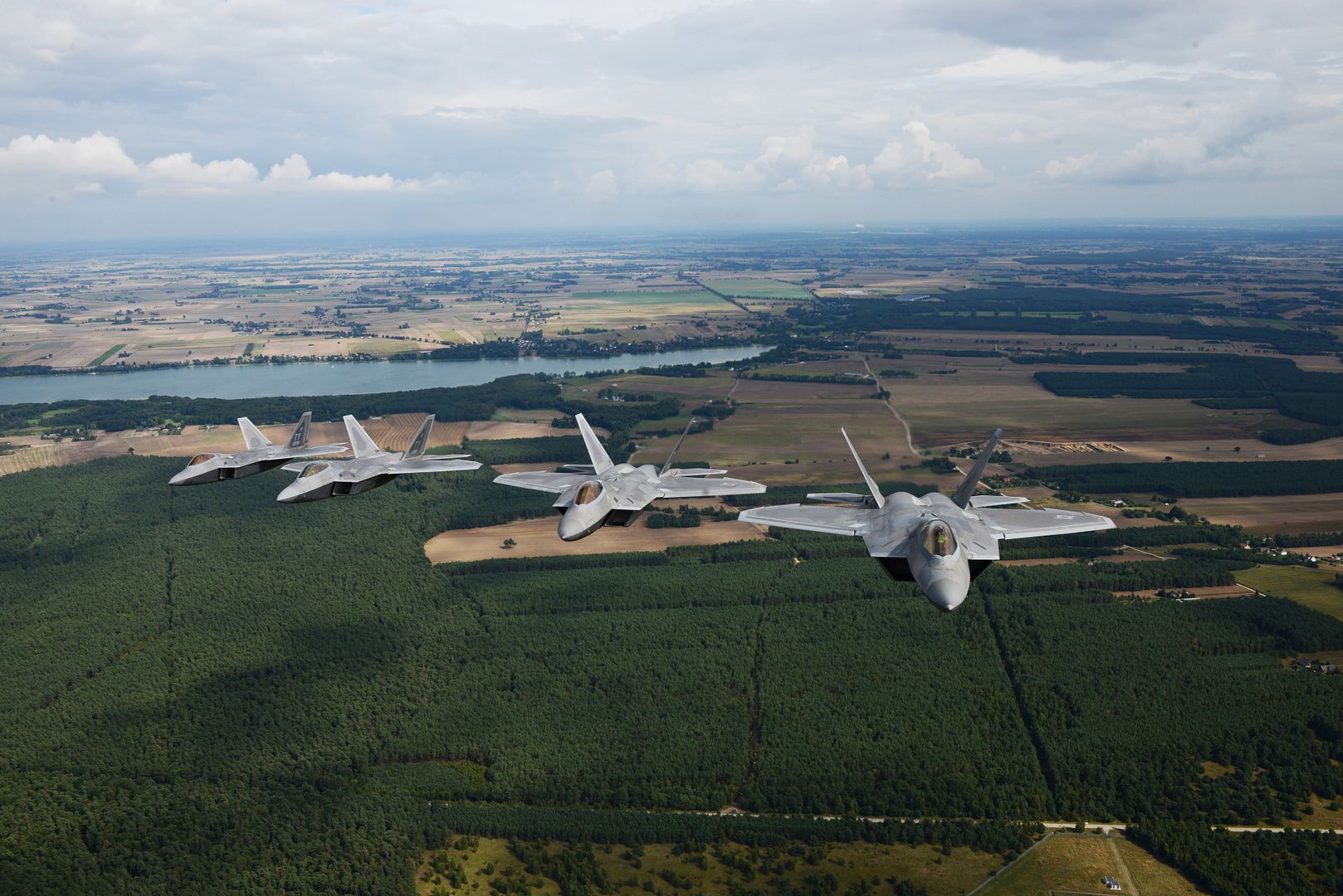
08.16.2018
A Spanish Eurofighter Typhoon taxis behind a U.S. Air Force F-22 from the 95th Fighter Squadron, 325th Fighter Wing, Tyndall Air Force Base, Fla., after Spanish aircraft trained with the F-22 at Los Llanos Air Base, Albacete Spain. The U.S. works closely with Spain on a range of global challenges, including promoting international peace, security and economic prosperity. (U.S. Air Force photo by Senior Airman Preston Cherry)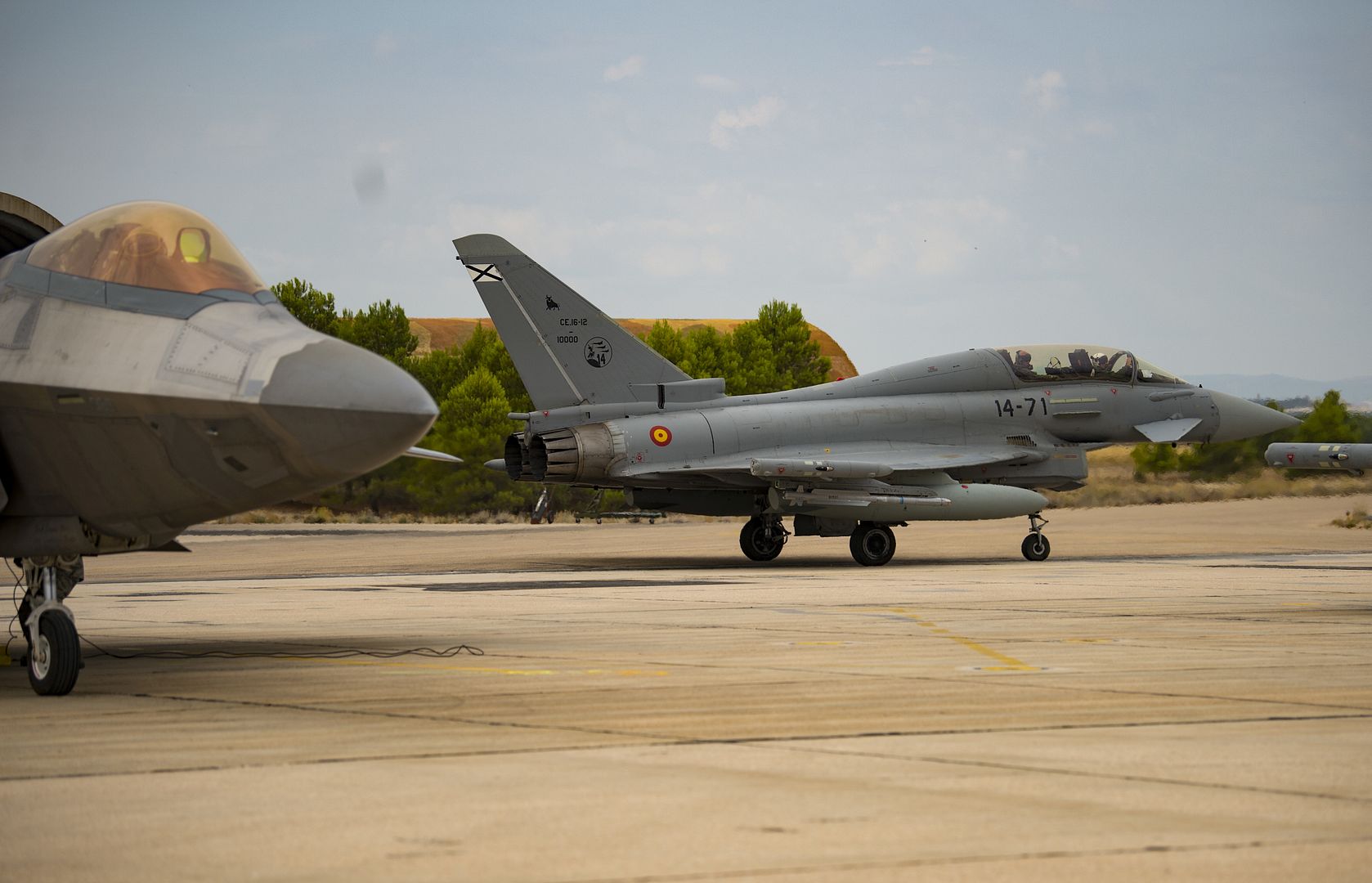
08.16.2018
U.S. Air Force F-22 Raptors from the 95th Fighter Squadron, 325th Fighter Wing, Tyndall Air Force Base, Fla., fly in formation after an air refueling over the Mediterranean Sea. After refueling, the F-22s trained with Spanish aircraft and landed at Los Llanos Air Base in Albacete, Spain where a pilot briefed the Raptor?s capabilities to military and civilian personnel from NATO allied nations. (U.S. Air Force photo by Senior Airman Preston Cherry)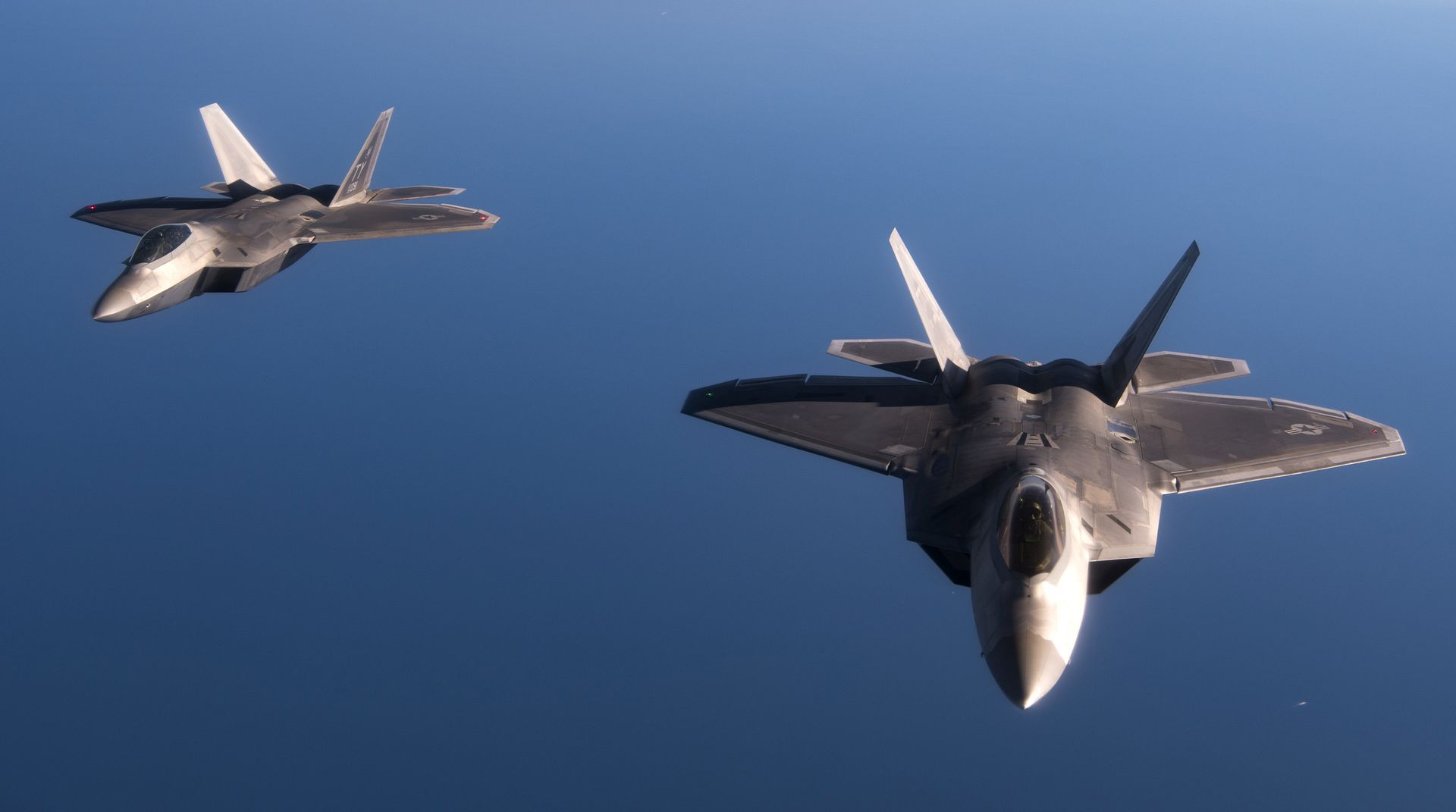
An RQ-4 Global Hawk, assigned to the 12th Reconnaissance Squadron, lands during Red Flag Alaska 18-3, Aug. 16, 2018, at Eielson Air Force Base, Alaska. This marks the first time an RQ-4 has landed in Alaska during the simulated combat training exercise.(U.S. Air Force photo by Airman 1st Class Tristan D. Viglianco)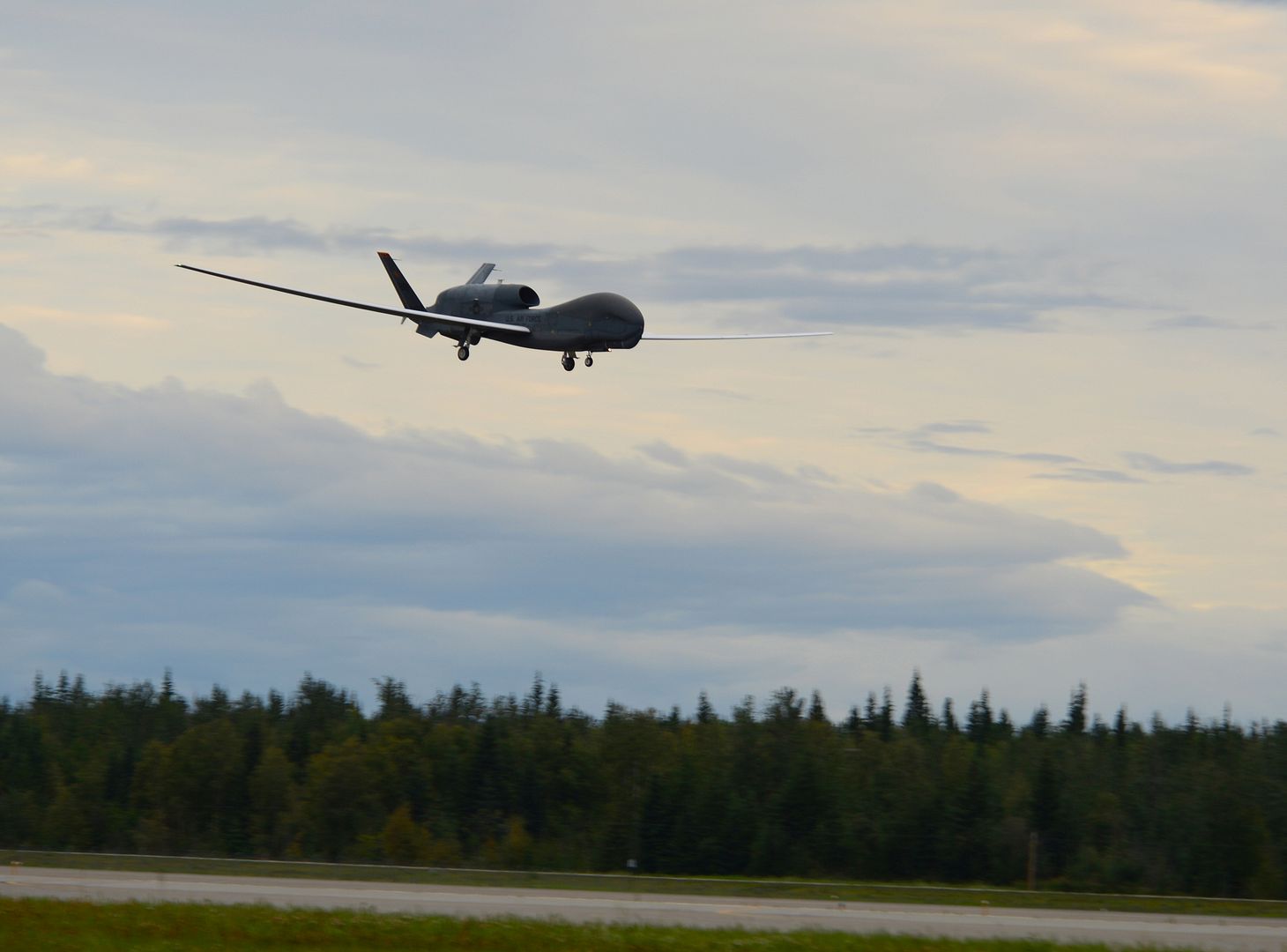
Pilots from the 388th Fighter Wing?s 4th Fighter Squadron were the first operational unit to fire the F-35A?s 25 mm cannon in a strafing run during training. The two-ship formation fired on two sets of ground targets on the Utah Test and Training range Aug. 13, 2018. Loading and firing the cannon was one of the few capabilities Airmen in the 388th and 419th FWs had yet to demonstrate. The F-35A?s internal cannon allows the aircraft to maintain stealth against air adversaries as well as fire more accurately on ground targets, giving pilots more tactical flexibility. (U.S. Air Force photo by Todd Cromar)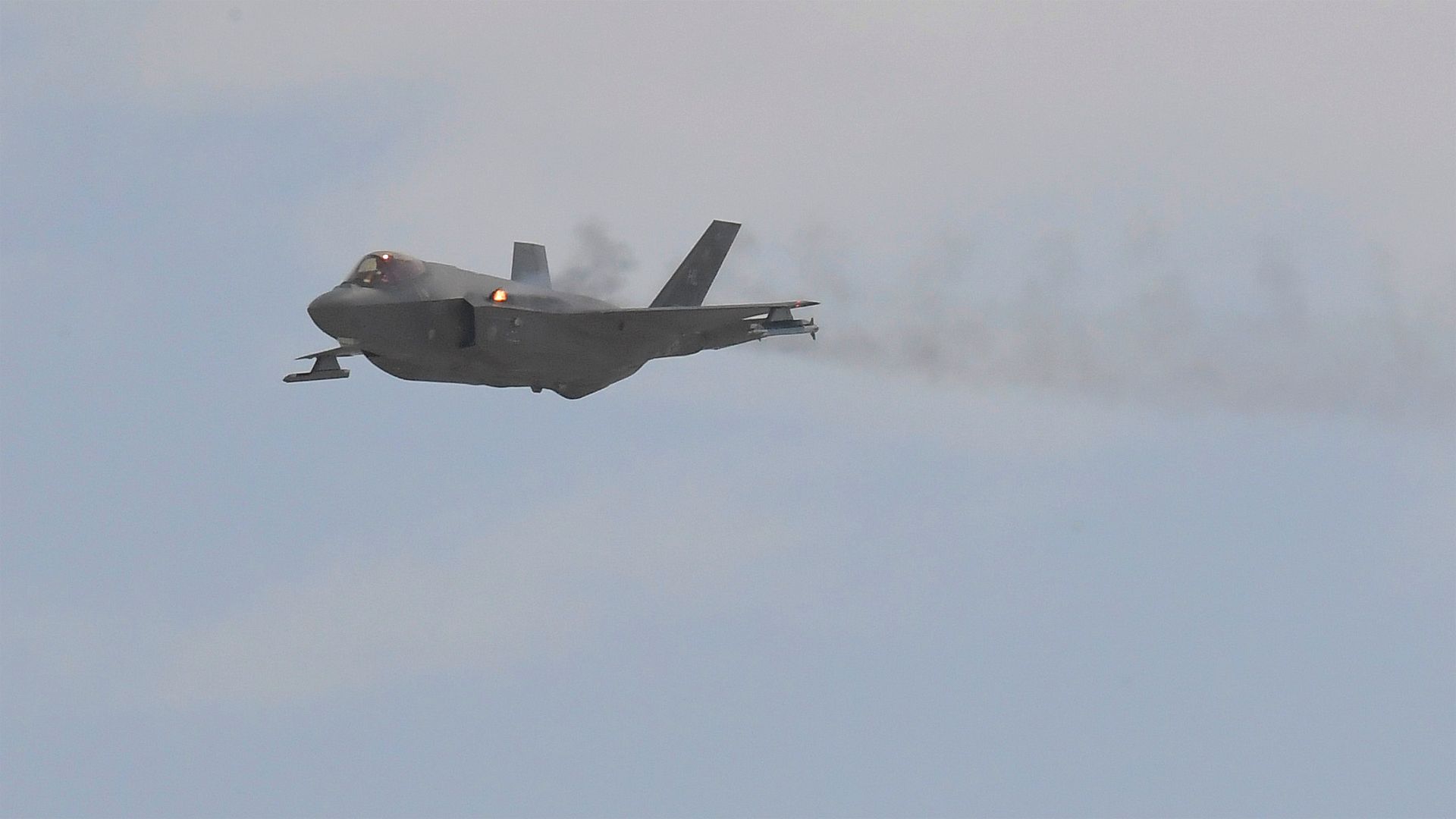
An F-15C Eagle assigned to the 493rd Expeditionary Fighter Squadron takes flight over Keflavik Air Base, Iceland, Aug. 2, 2018, in support of NATO?s Icelandic Air Surveillance mission. While providing critical infrastructure and support, Iceland has looked to its NATO allies to provide airborne surveillance and interception capabilities to meet its peacetime preparedness needs since 2008. (U.S. Air Force photo/Staff Sgt. Alex Fox Echols III)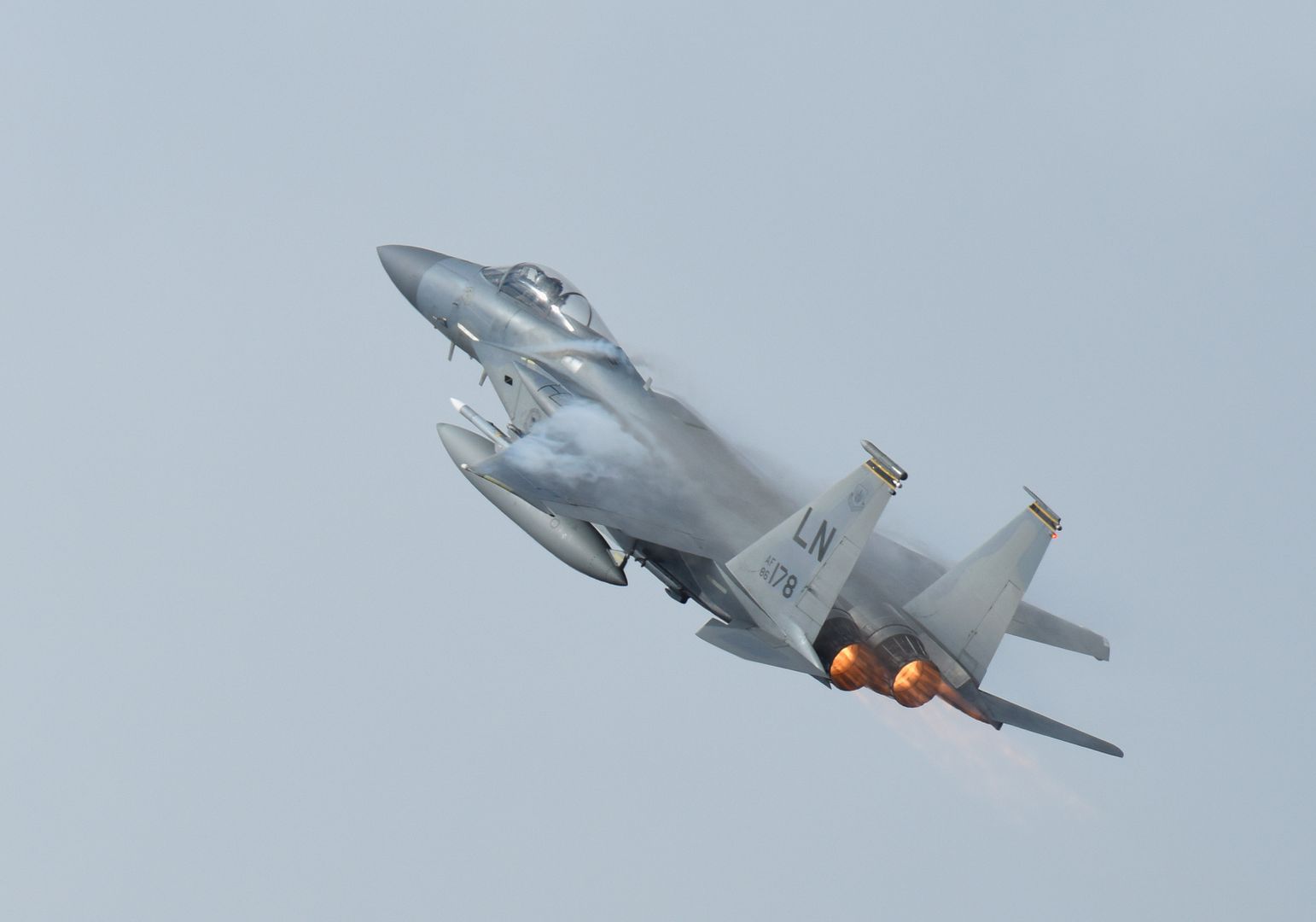
ATLANTIC OCEAN (Aug. 14, 2018) An F/A-18E Super Hornet from the "Sidewinders" of Strike Fighter Squadron (VFA) 86 prepares to make an arrested landing on the flight deck of the Nimitz-class aircraft carrier USS Abraham Lincoln (CVN 72). (U.S. Navy photo by Mass Communication Specialist 3rd Class Jeff Sherman/Released)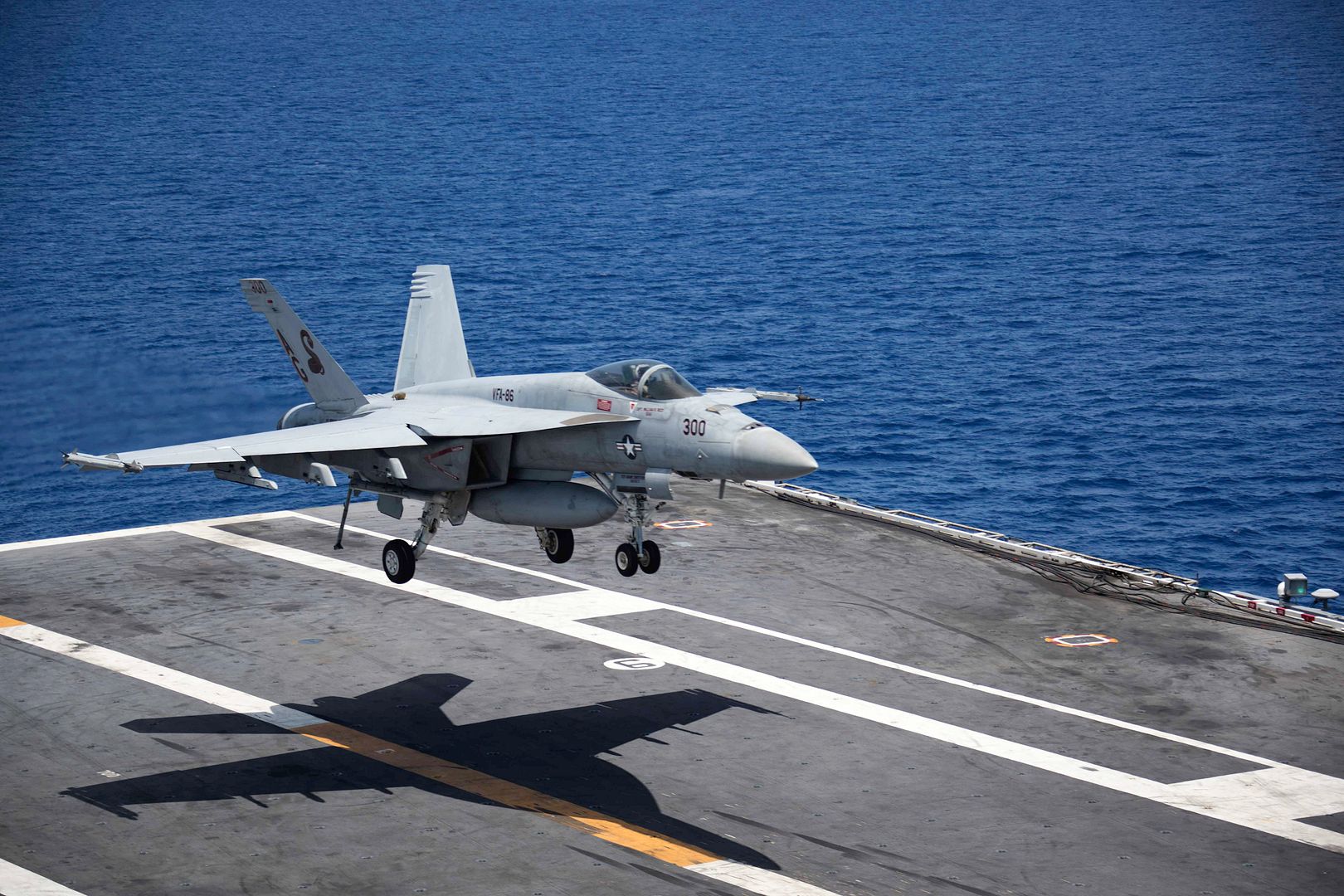
ATLANTIC OCEAN (Aug. 14, 2018) An F/A-18E Super Hornet from the "Fist of the Fleet" of Strike Fighter Squadron (VFA) 25 makes an arrested landing on the flight deck of the Nimitz-class aircraft carrier USS Abraham Lincoln (CVN 72). (U.S. Navy photo by Mass Communication Specialist 3rd Class Jeff Sherman/Released)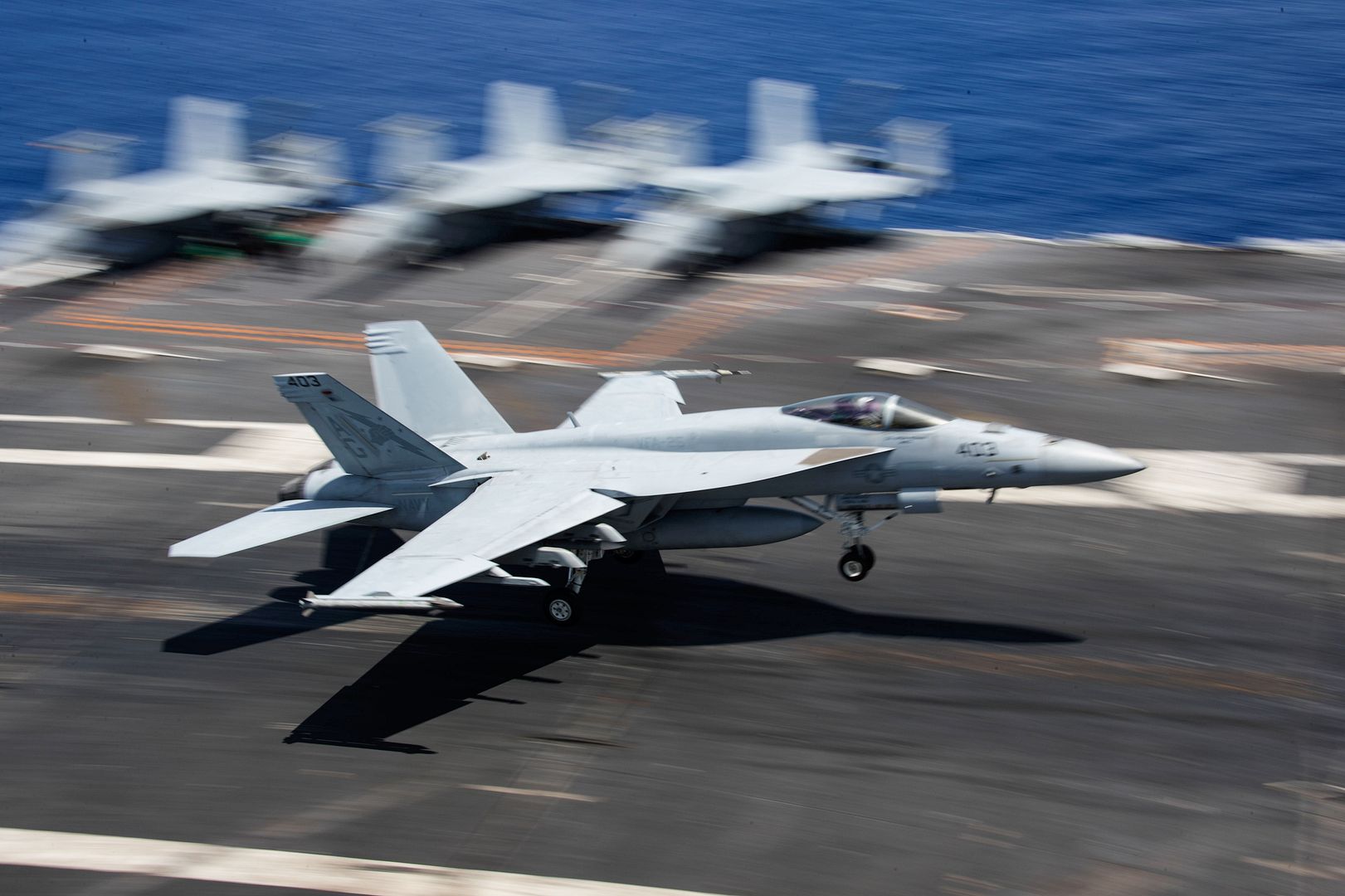
Heralds new era in Airbus corporate jets
The first ACJ320neo, has been assembled on schedule, fitted with CFM International LEAP-1A engines and painted with the Airbus Corporate Jets livery in preparation for a first flight in the coming weeks.
After delivery to Acropolis Aviation of the UK in the last quarter of this year, the aircraft will enter outfitting at AMAC in Basle, Switzerland, where an Alberto Pinto-designed cabin will be installed, and be repainted in the customer?s colours.
Like the airliner versions from which it is derived, the ACJ320neo Family features new-generation engines and Sharklets, saving around 15 per cent in fuel and delivering a leap forward in inter-continental range.
The resulting ACJ320neo can fly 25 passengers 6,000 nm/11,100 km or 13 hours - enabling routes such as London to Beijing or Cape Town and Moscow to Los Angeles - while the ACJ319neo can fly eight passengers 6,700 nm/12,500 km or 15 hours.
Featuring the widest and tallest cabins of any large business-jet, the ACJ320neo Family delivers similar operating costs and better residual value, while being about the same size.
Orders for the ACJ320neo Family stand at nine aircraft, comprising three ACJ319neo and six ACJ320neo aircraft.
About Acropolis Aviation
Acropolis Aviation is a leading provider of luxury charter aviation based at Farnborough Airport, the UK's premier business aviation airport, with a complementary sales office in Fort Lauderdale, USA. Its current Airbus ACJ319 entered service in March 2010 and has gained a reputation for excellent service in the high-end charter market.
-
 Main AdminSULU SEA (Aug. 17, 2018) ? An F-35B Lightning II, attached to the ?Avengers? of Marine Fighter Attack Squadron (VMFA) 211, prepares to launch from the flight deck of Wasp-class amphibious assault ship USS Essex (LHD 2) during Cooperation Afloat Readiness and Training (CARAT) 2018. CARAT Malaysia, in its 24th iteration, is designed to enhance information sharing and coordination, build mutual warfighting capability and support long-term regional cooperation enabling both partner armed forces to operate effectively together as a unified maritime force. (U.S. Navy photo by Mass Communication Specialist 2nd Class Chandler Harrell)
Main AdminSULU SEA (Aug. 17, 2018) ? An F-35B Lightning II, attached to the ?Avengers? of Marine Fighter Attack Squadron (VMFA) 211, prepares to launch from the flight deck of Wasp-class amphibious assault ship USS Essex (LHD 2) during Cooperation Afloat Readiness and Training (CARAT) 2018. CARAT Malaysia, in its 24th iteration, is designed to enhance information sharing and coordination, build mutual warfighting capability and support long-term regional cooperation enabling both partner armed forces to operate effectively together as a unified maritime force. (U.S. Navy photo by Mass Communication Specialist 2nd Class Chandler Harrell)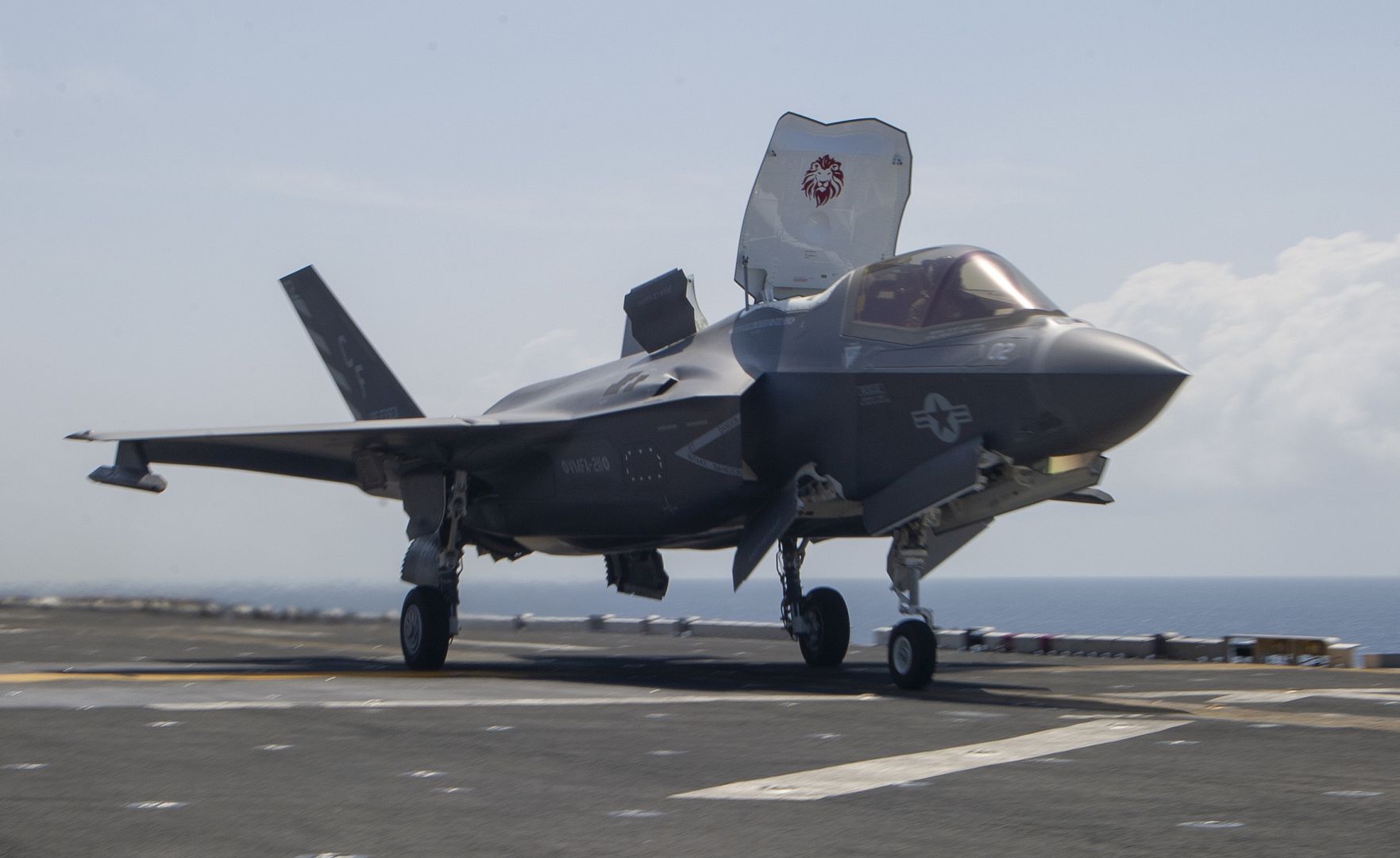
A U.S. Army Apache helicopter with D Company, 1st Battalion, 3rd Aviation
Regiment (Attack Reconnaissance) returns from a maintenance test flight Aug.
17, 2018, at Katterbach Army Airfield in Ansbach, Germany. (U.S. Army photo
by Charles Rosemond)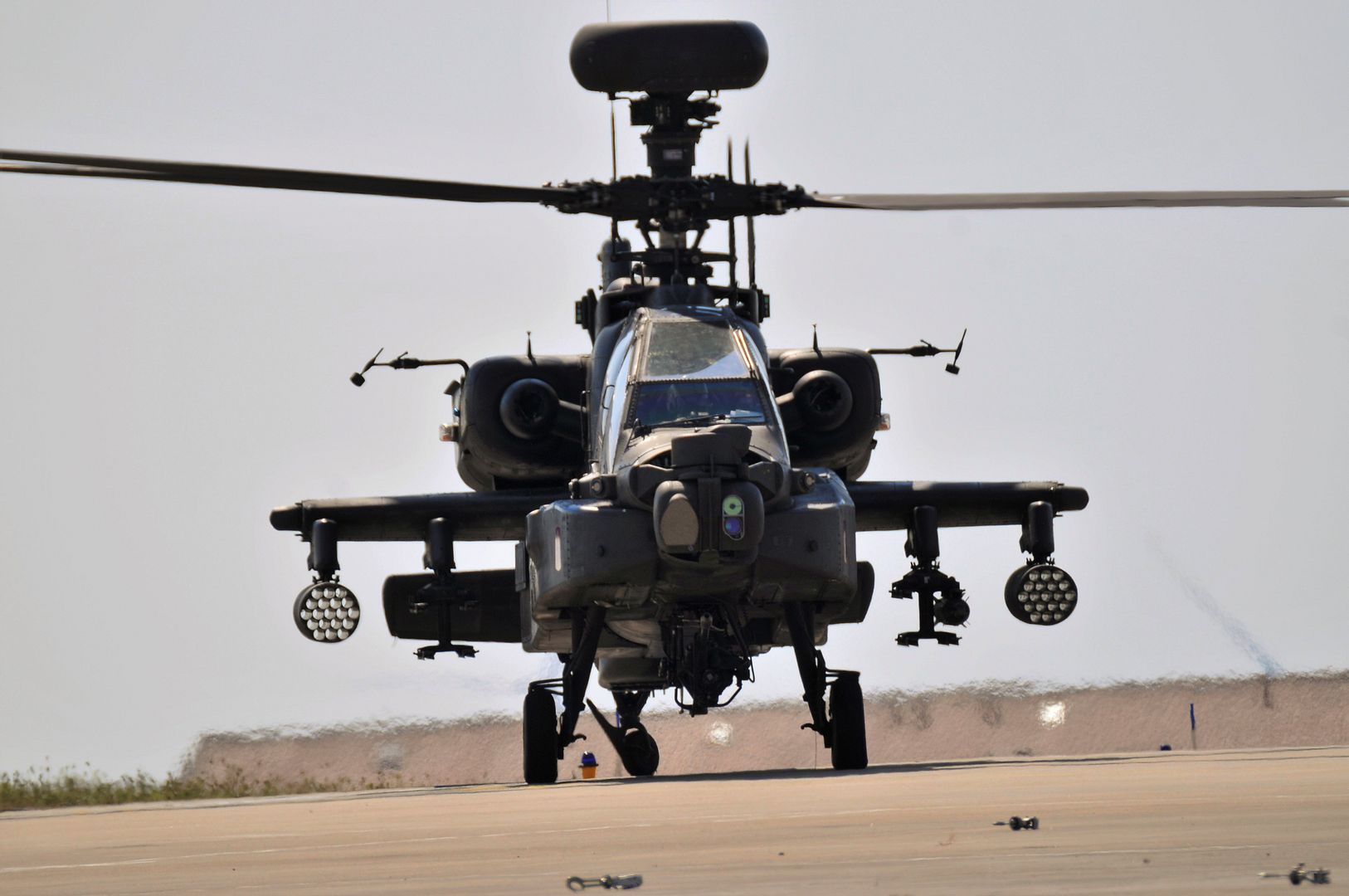
An F-22 Raptor lands at Volk Field Air National Guard Base, Wisconsin, during the Northern Lightning 18-2 Exercise Aug. 17, 2018. Northern Lightning is one of seven Air National Guard joint accredited exercises held at Volk Field(U.S. Air National Guard photo by Airman 1st Class Cameron Lewis)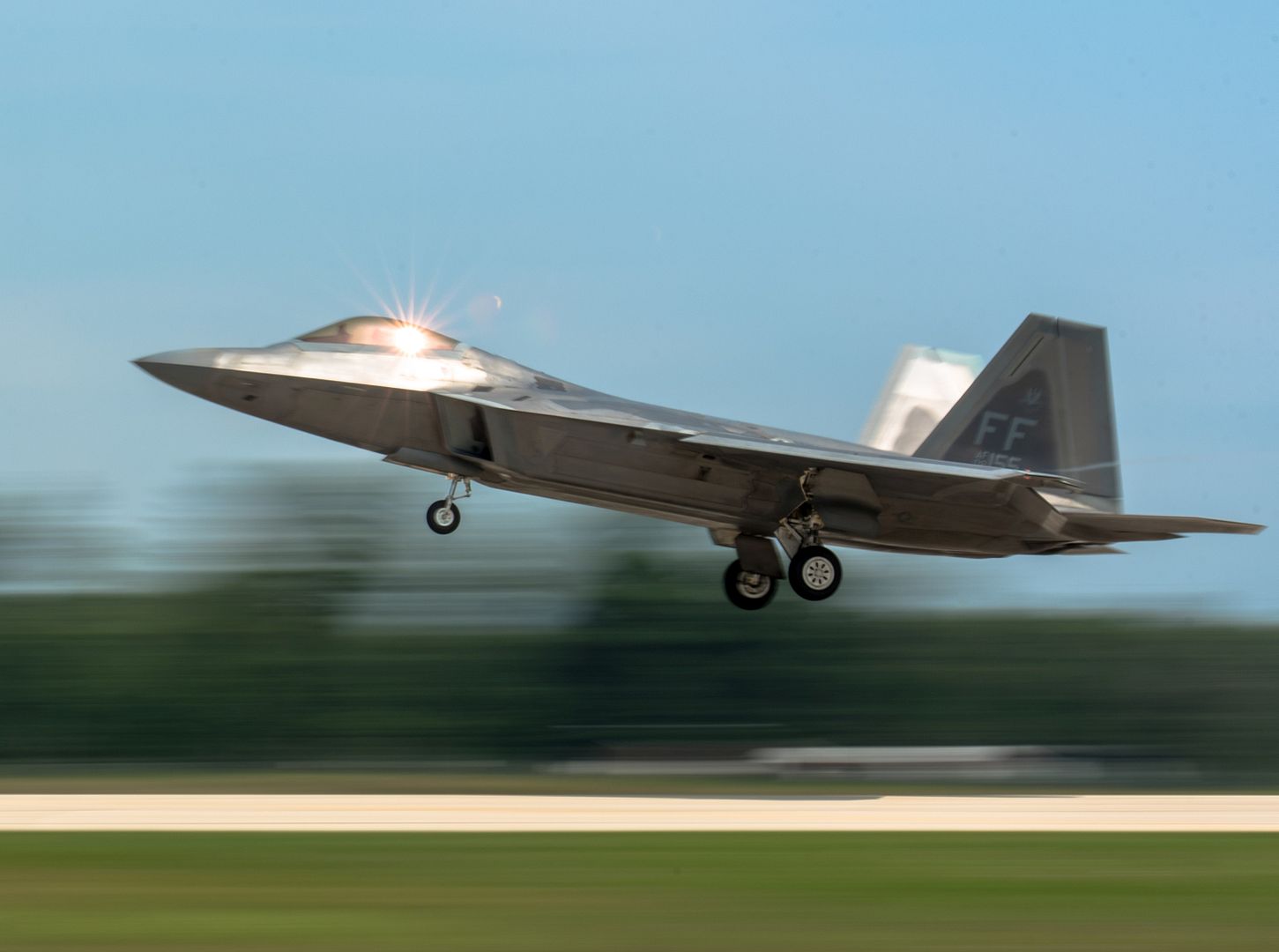
An F-15 Eagle lands at Volk Field Air National Guard Base, Wisconsin, Aug. 18, 2018, during Northern Lightning. Northern Lightning is one of seven Air National Guard joint accredited exercises held at Volk Field. (U.S. Air National Guard photo by Airman 1st Class Cameron Lewis)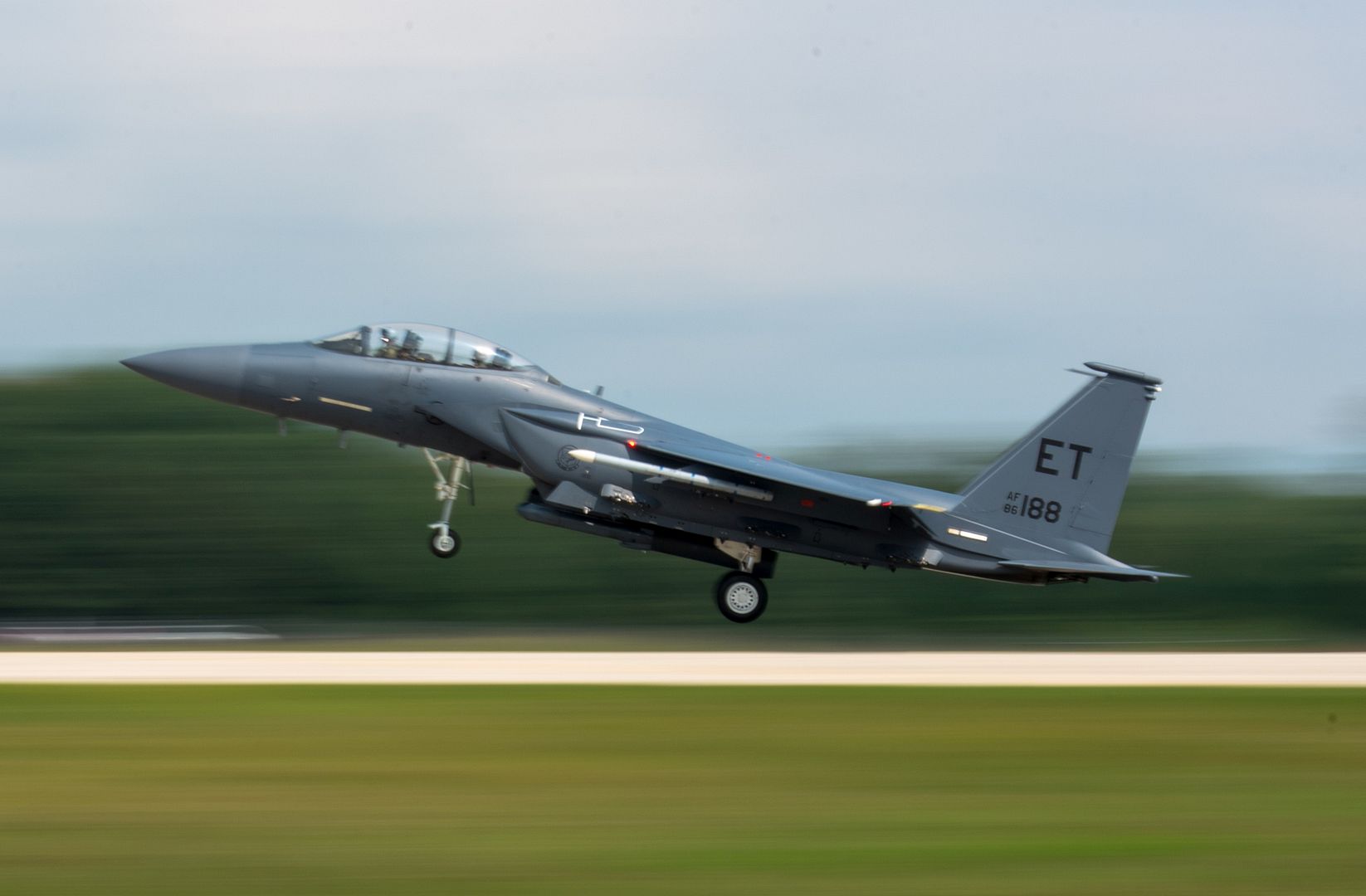
An F-15C Eagle taxis to the runway Aug. 17, 2018, at Volk Field Air National Guard Base, Wisconsin, during the Northern Lightning 18-2 Exercise. Volk Field provides a year-round integrated training environment, which includes airspace, facilities, and equipment, for units to enhance their combat capabilities and readiness.(U.S. Air National Guard photo by Airman 1st Class Cameron Lewis)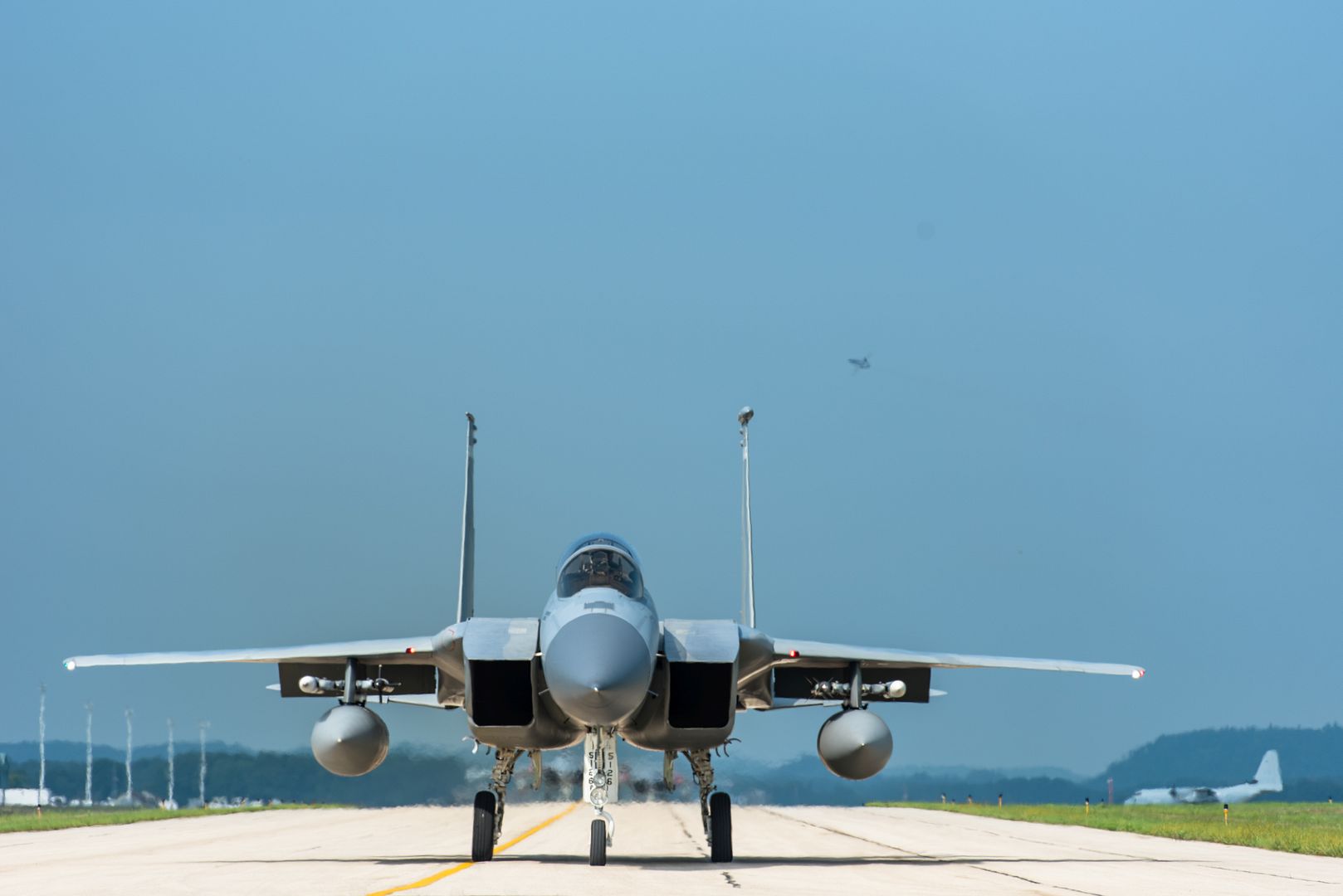
A U.S. Marine Corps AV-8B Harrier II taxis out to the runway at Volk Field Air National Guard Base, Wisconsin, during the Northern Lightning 18-2 Exercise Aug. 17, 2018. Volk field provides a year-round integrated training environment, which includes airspace, facilities, and equipment, for units to enhance their combat capabilities and readiness.(U.S. Air National Guard photo by Airman 1st Class Cameron Lewis)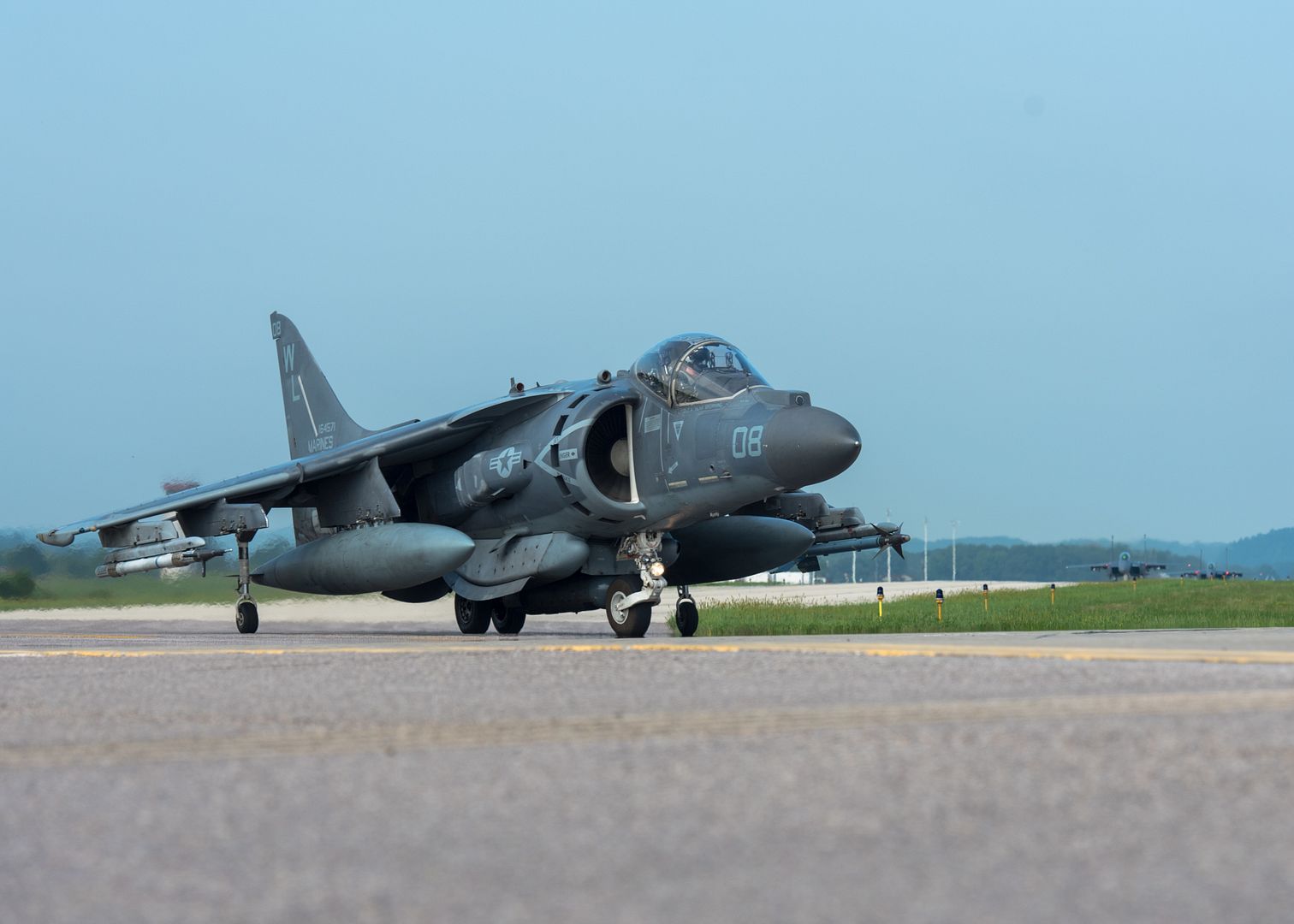
Two T-38 Talons hold on the flightline before taking off at Volk Field Air National Guard Base, Wisconsin, Aug. 17, 2018. The Talons are a part of the Northern Lightning 18-2 Exercise that takes place at Volk. (U.S. Air National Guard photo by Airman 1st Class Cameron Lewis)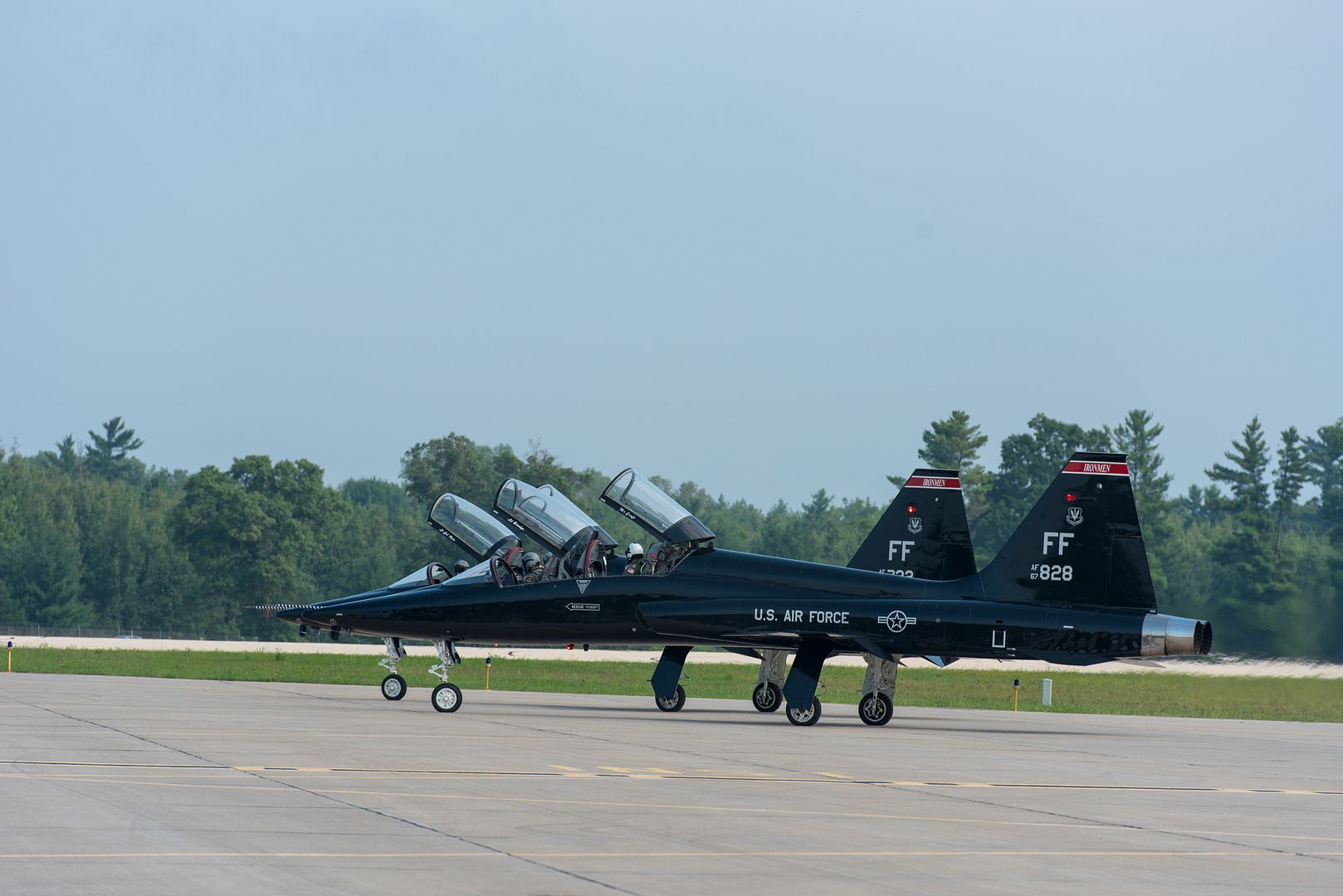
An F-16 Fighting Falcon with the Arizona Air National Guard takes off at Truax Field, Wisconsin, August 15, 2018. Truax Field is hosting F-16s from Arizona during the Northern Lightning Exercise.(U.S. Air National Guard photo by Airman 1st Class Cameron Lewis)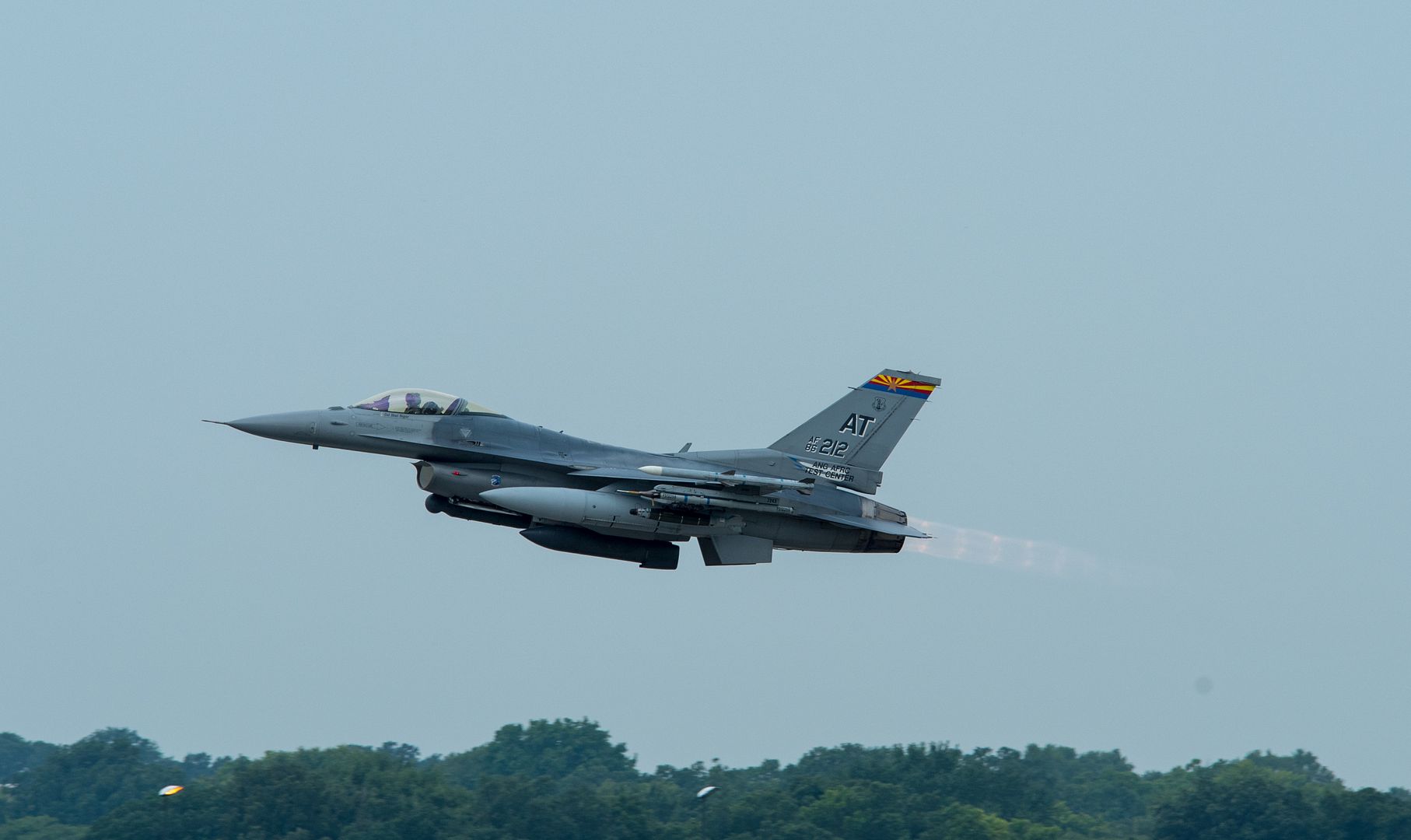
PACIFIC OCEAN (Aug. 16, 2018)
Sailors conduct a foreign object and debris walk-down around an F/A-18E Super Hornet assigned to Strike Fighter Squadron (VFA) 14 on the flight deck aboard the Nimitz-class aircraft carrier USS John C. Stennis (CVN 74). John C. Stennis is underway conducting routine operations in the U.S. 3rd Fleet area of operations. U.S. Navy photo by Mass Communication Specialist 3rd Class William Rosencrans (Released)
Gulf Air, the flag carrier of the Kingdom of Bahrain, took delivery of its first A320neo today. The aircraft, powered by CFM LEAP-1A engines, made its maiden journey from Toulouse to Bahrain, landing at the Bahrain International Airport at 16:00 local time.
The aircraft is the first of the 29 A320neo Family aircraft ordered during the 2016 Bahrain International Airshow. This delivery also makes Gulf Air the first Middle Eastern national carrier to fly the A320neo.
Gulf Air currently operates 28 Airbus aircraft. The new addition complements the airline?s existing fleet and thanks to Airbus? overall fleet commonality, the airline will benefit from low operating costs, optimum fuel efficiency and seamless, best-in-class passenger comfort of any single aisle aircraft.
Featuring the widest single aisle cabin in the sky, the A320neo Family incorporates the very latest technologies including new generation engines and Sharklets, which together deliver at least 15 percent fuel savings at delivery and 20 percent by 2020. With more than 6,100 orders received from over 100 customers, the A320neo Family has captured nearly 60 percent share of the market.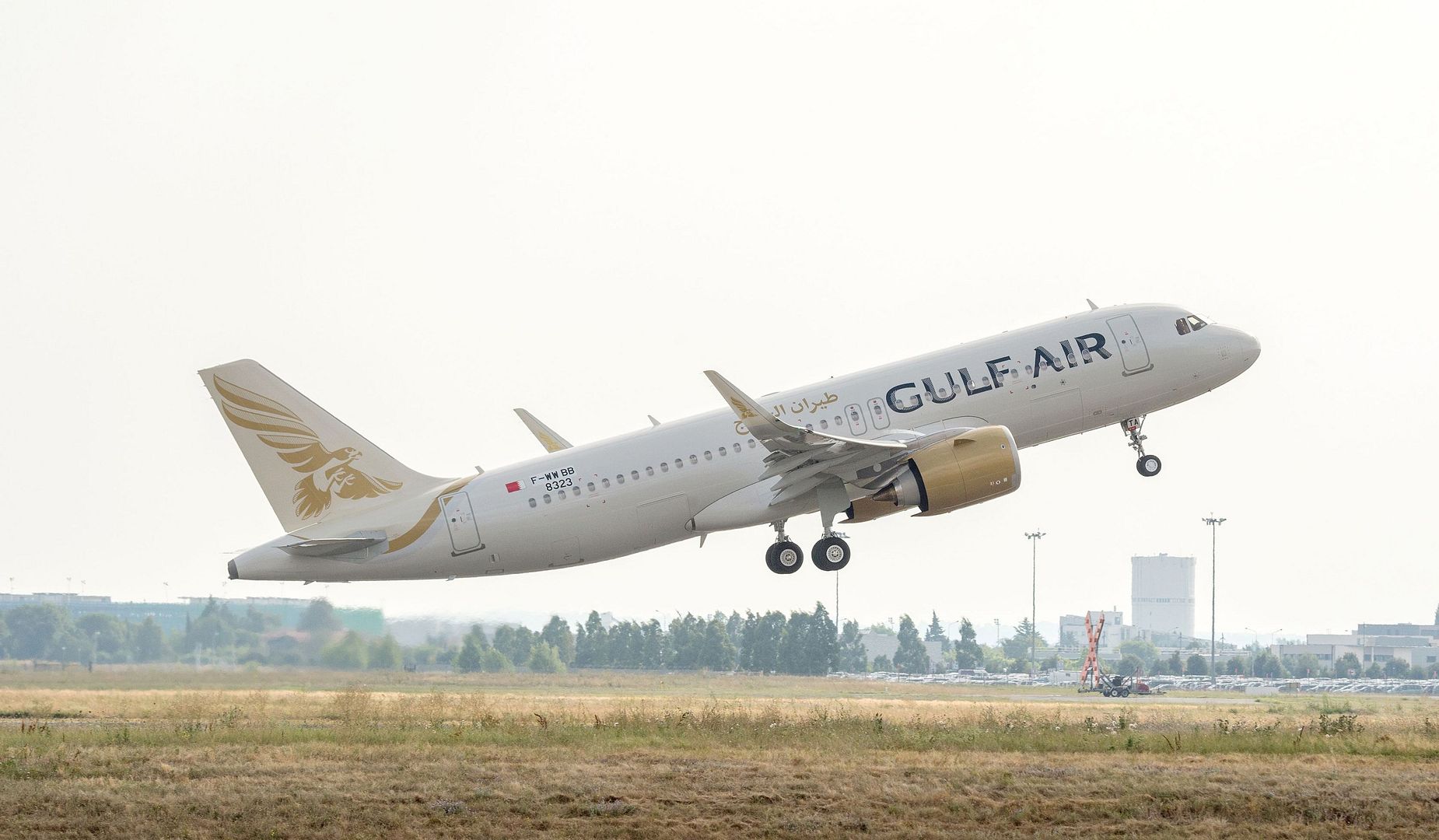
-
 Main AdminRomanian F-16 Fighting Falcons fly in formation with Massachusetts Air National Guard 131st Expeditionary Fighter Squadron F-15C Eagles above Bucharest, Romania, Aug. 20, 2018. The U.S. works closely with Romania on a range of global challenges, including promoting international peace, security and economic prosperity. (U.S. Air Force photo by Senior Airman Dawn M. Weber)
Main AdminRomanian F-16 Fighting Falcons fly in formation with Massachusetts Air National Guard 131st Expeditionary Fighter Squadron F-15C Eagles above Bucharest, Romania, Aug. 20, 2018. The U.S. works closely with Romania on a range of global challenges, including promoting international peace, security and economic prosperity. (U.S. Air Force photo by Senior Airman Dawn M. Weber)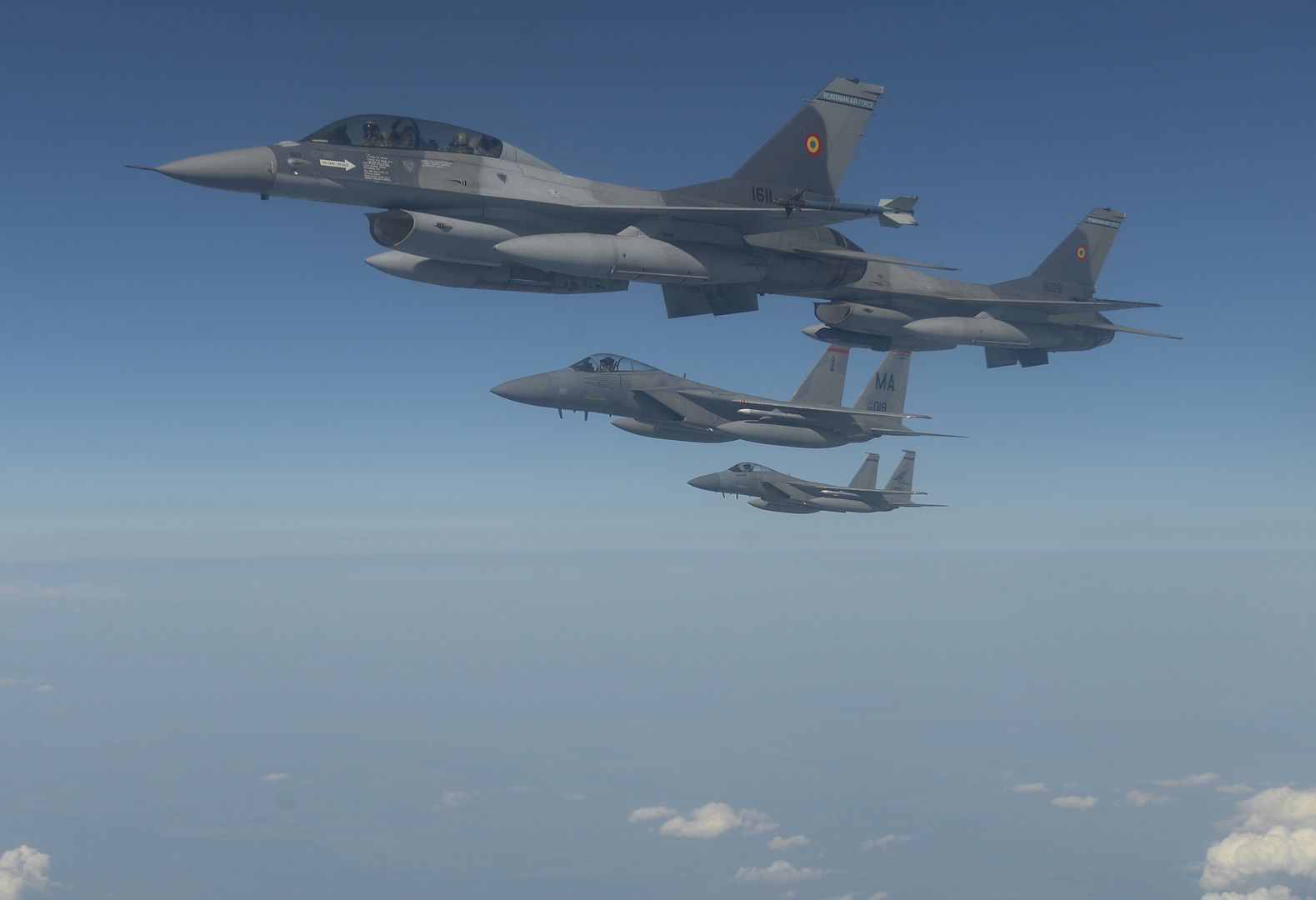
COLORADO (Aug. 13, 2018) The U.S. Navy flight demonstration squadron, the Blue Angels, refuel during their transit home to Pensacola, Florida, after performing at the Abbotsford International Air Show. The Blue Angels are scheduled to perform more than 60 demonstrations at more than 30 locations across the U.S. and Canada in 2018. (U.S. Navy photo by Mass Communication Specialist 1st Class Ian Cotter/Released)
Post a reply
- Go to Next topic
- Go to Welcome
- Go to Introduce Yourself
- Go to General Discussion
- Go to Screenshots, Images and Videos
- Go to Off topic
- Go to Works in Progress
- Go to Skinning Tips / Tutorials
- Go to Skin Requests
- Go to IJAAF Library
- Go to Luftwaffe Library
- Go to RAF Library
- Go to USAAF / USN Library
- Go to Misc Library
- Go to The Ops Room
- Go to Made in Germany
- Go to Campaigns and Missions
- Go to Works in Progress
- Go to Juri's Air-Raid Shelter
- Go to Campaigns and Missions
- Go to Works in Progress
- Go to Skinpacks
- Go to External Projects Discussion
- Go to Books & Resources
